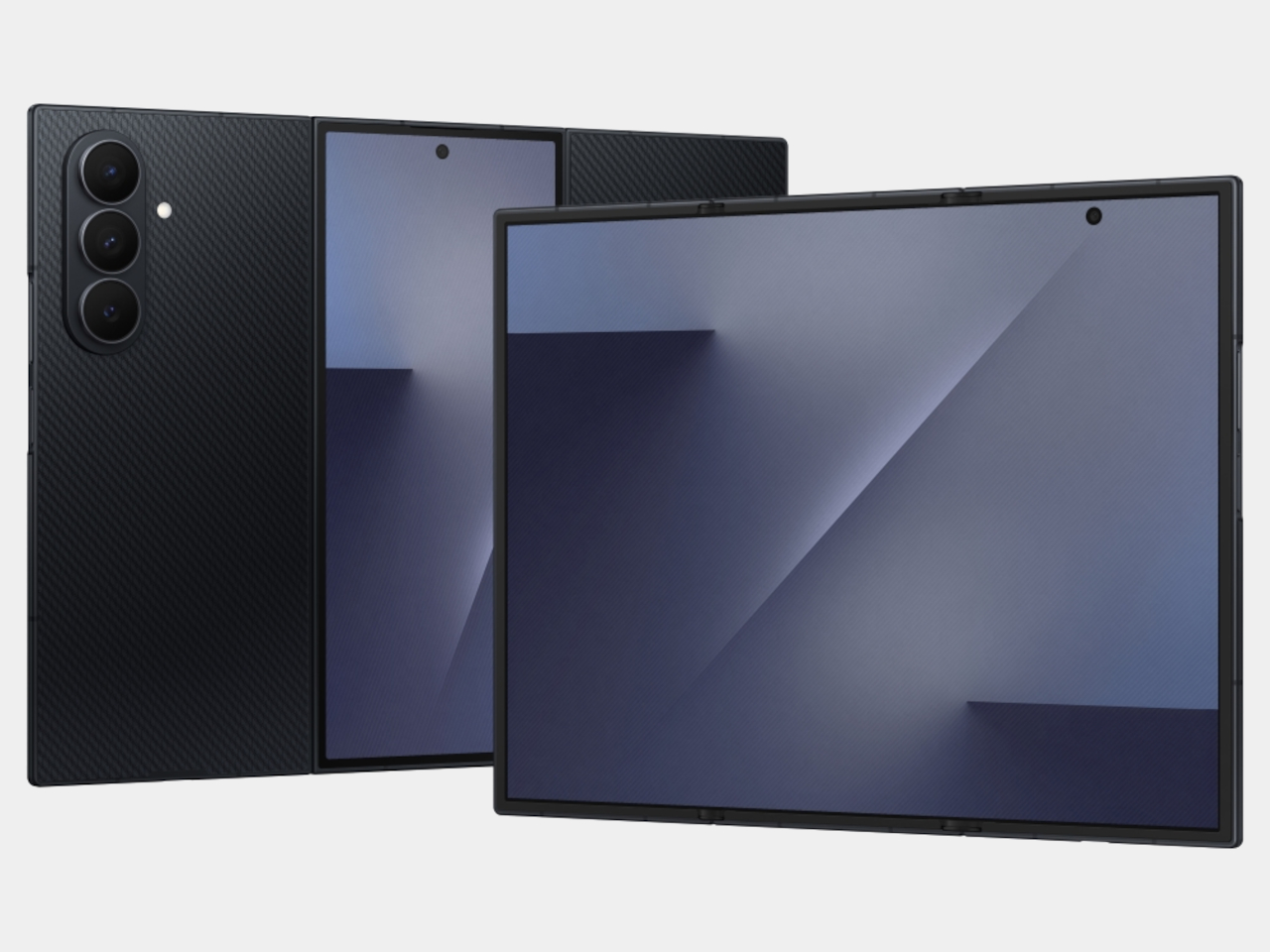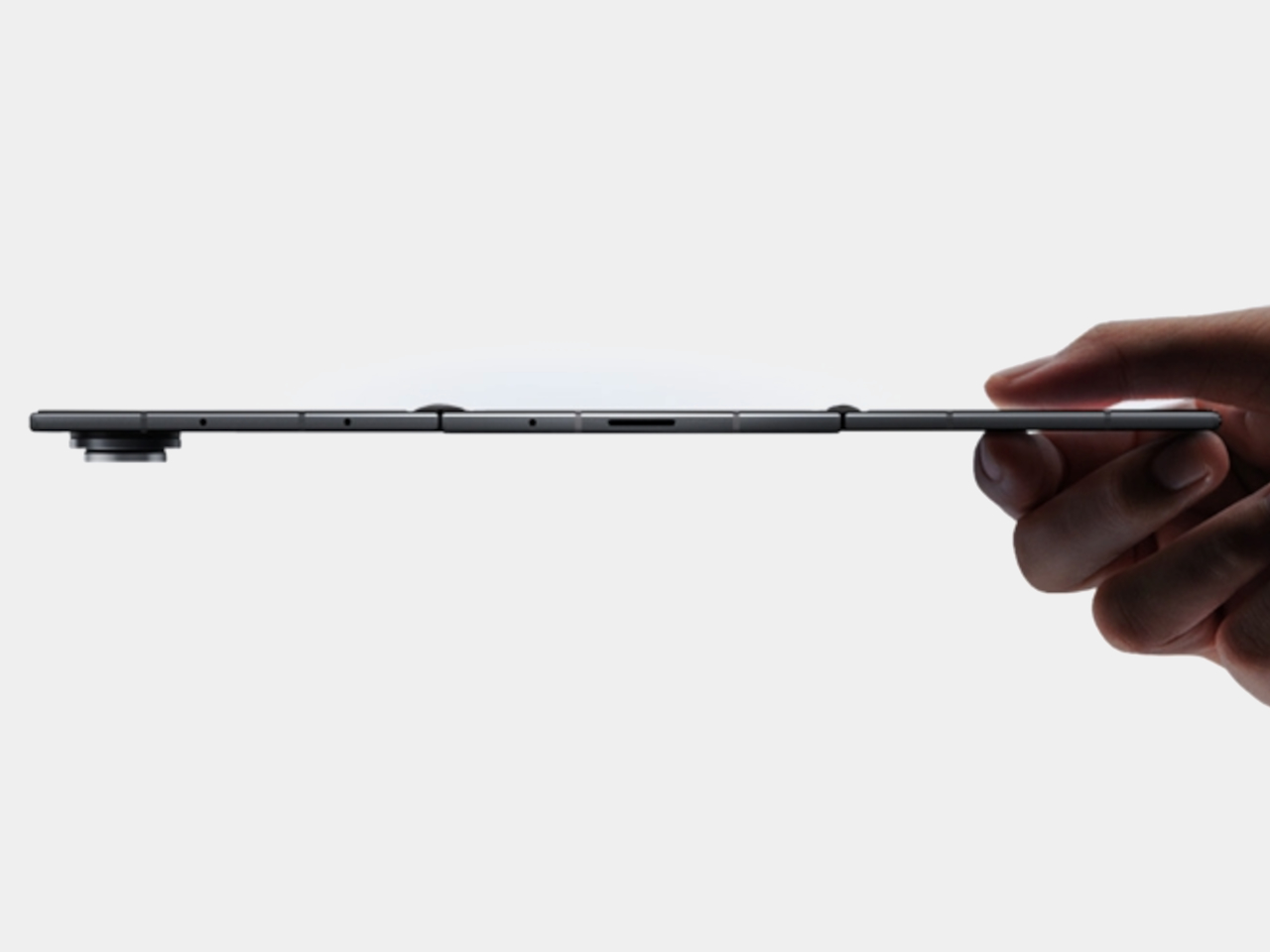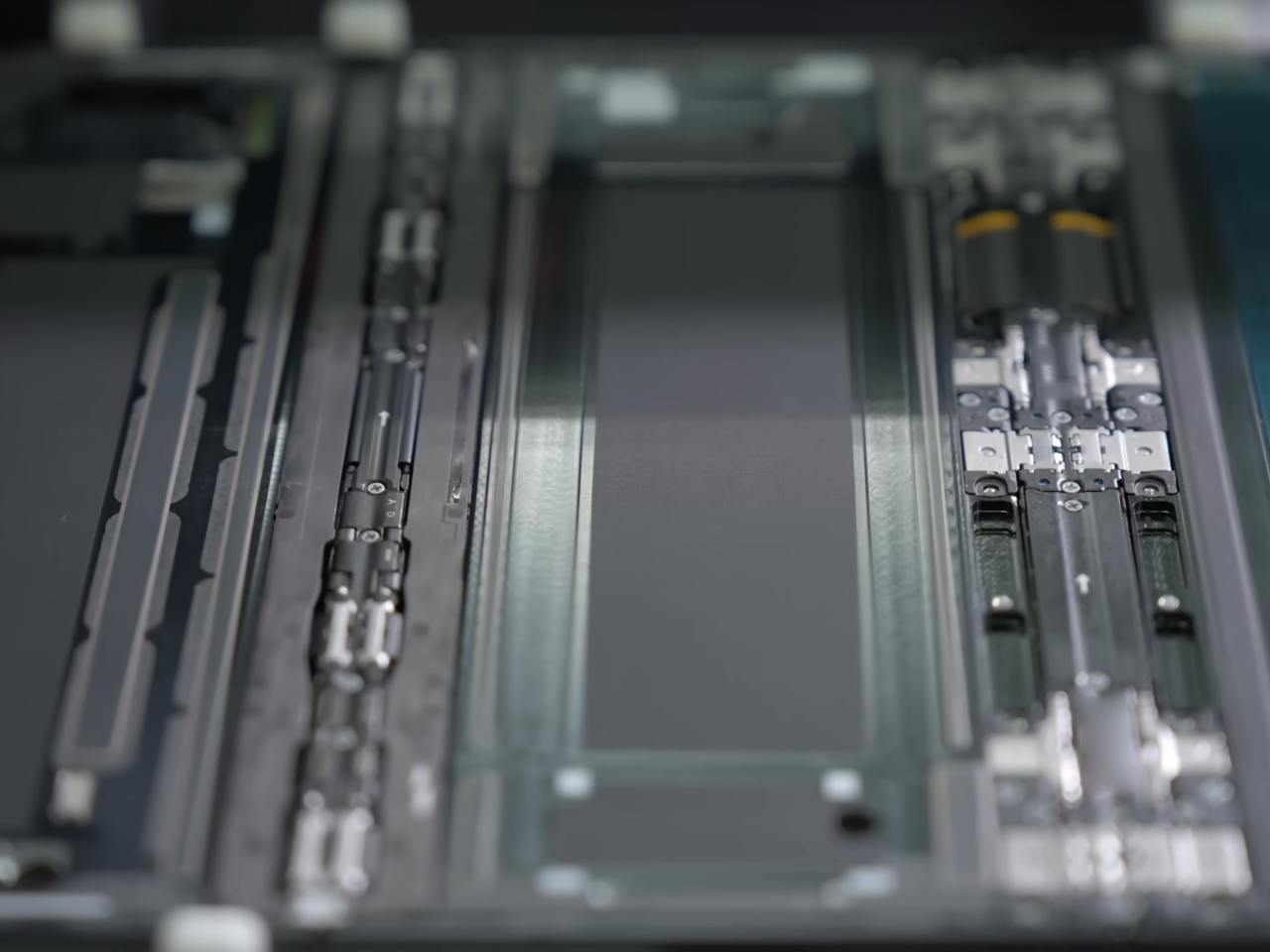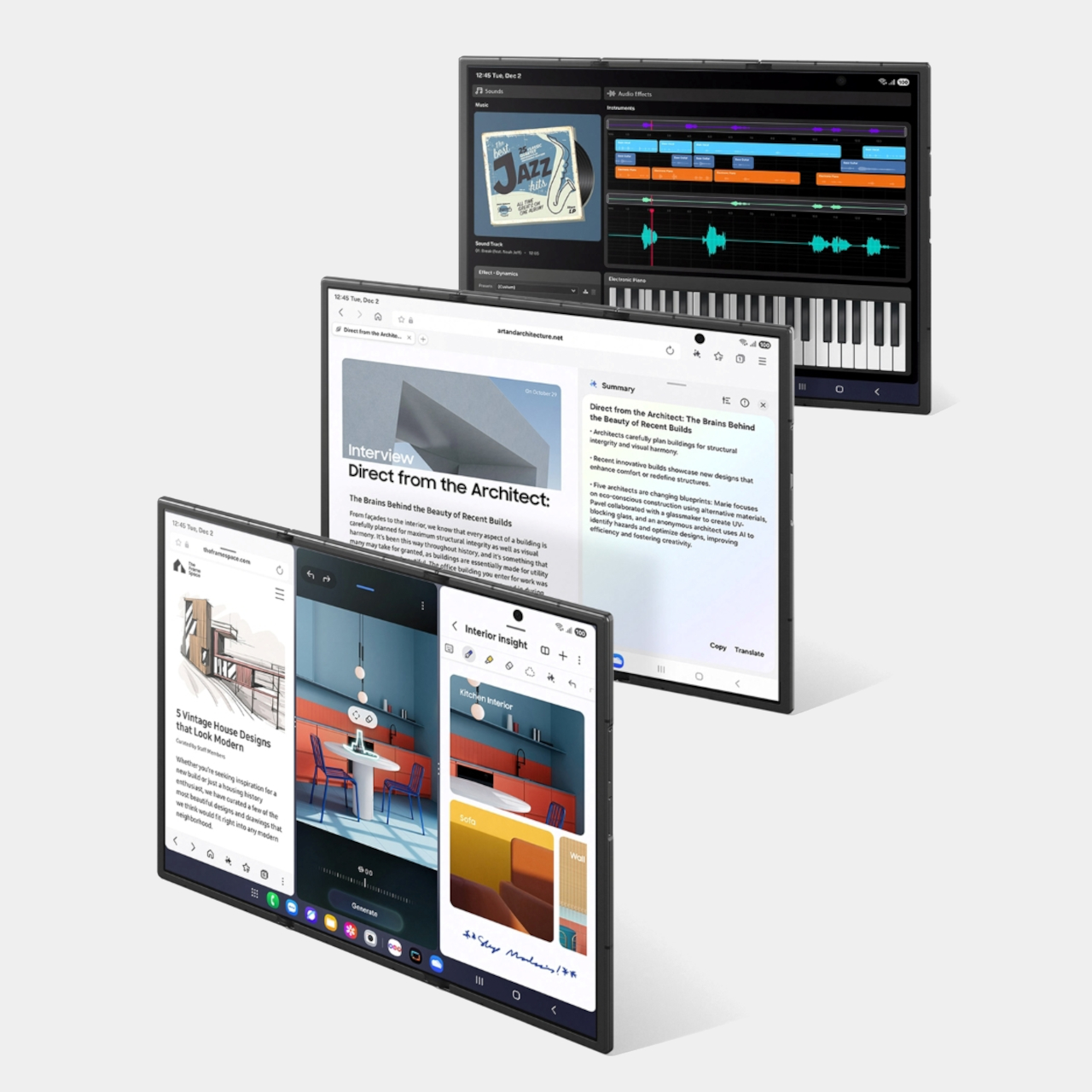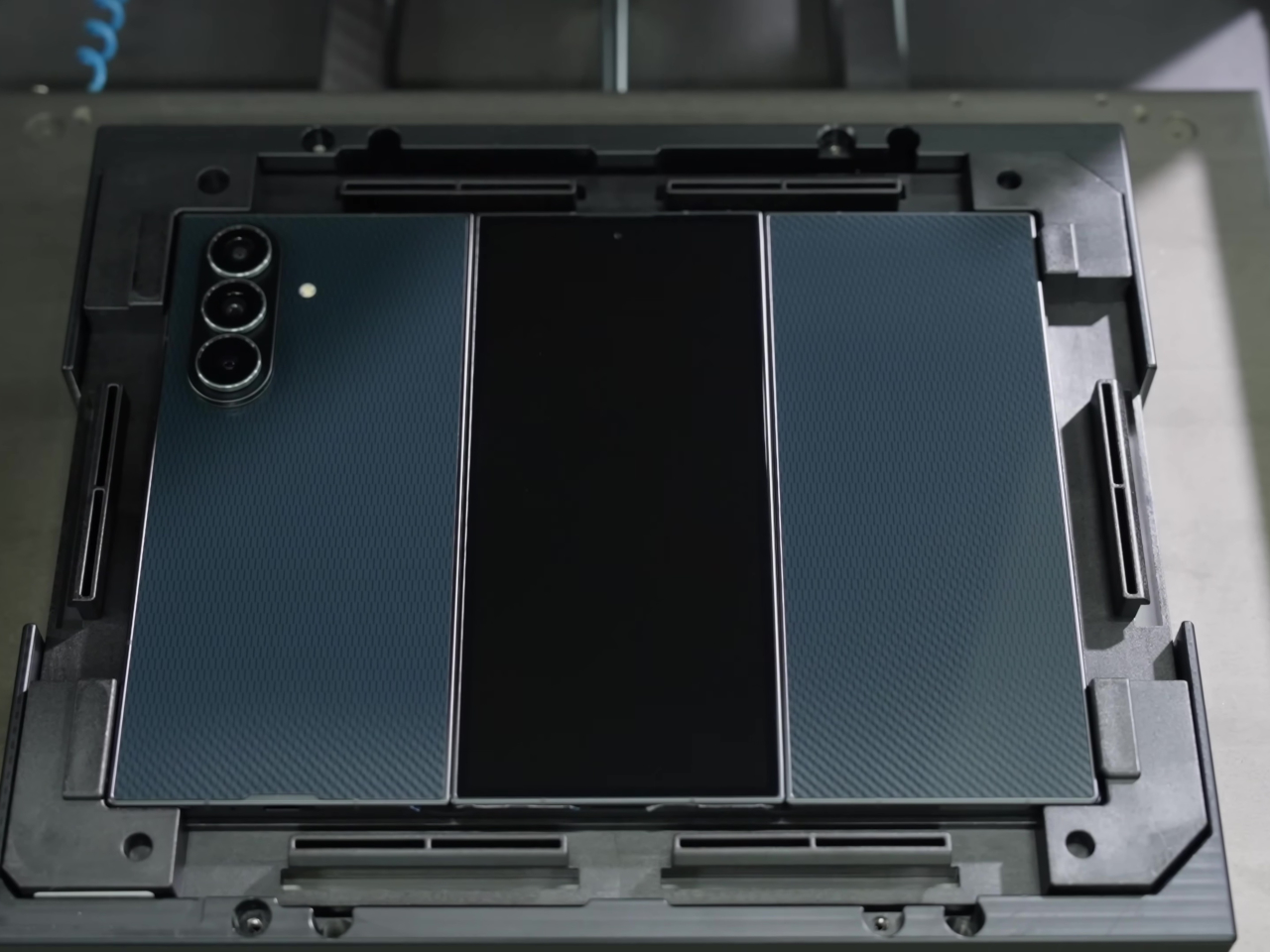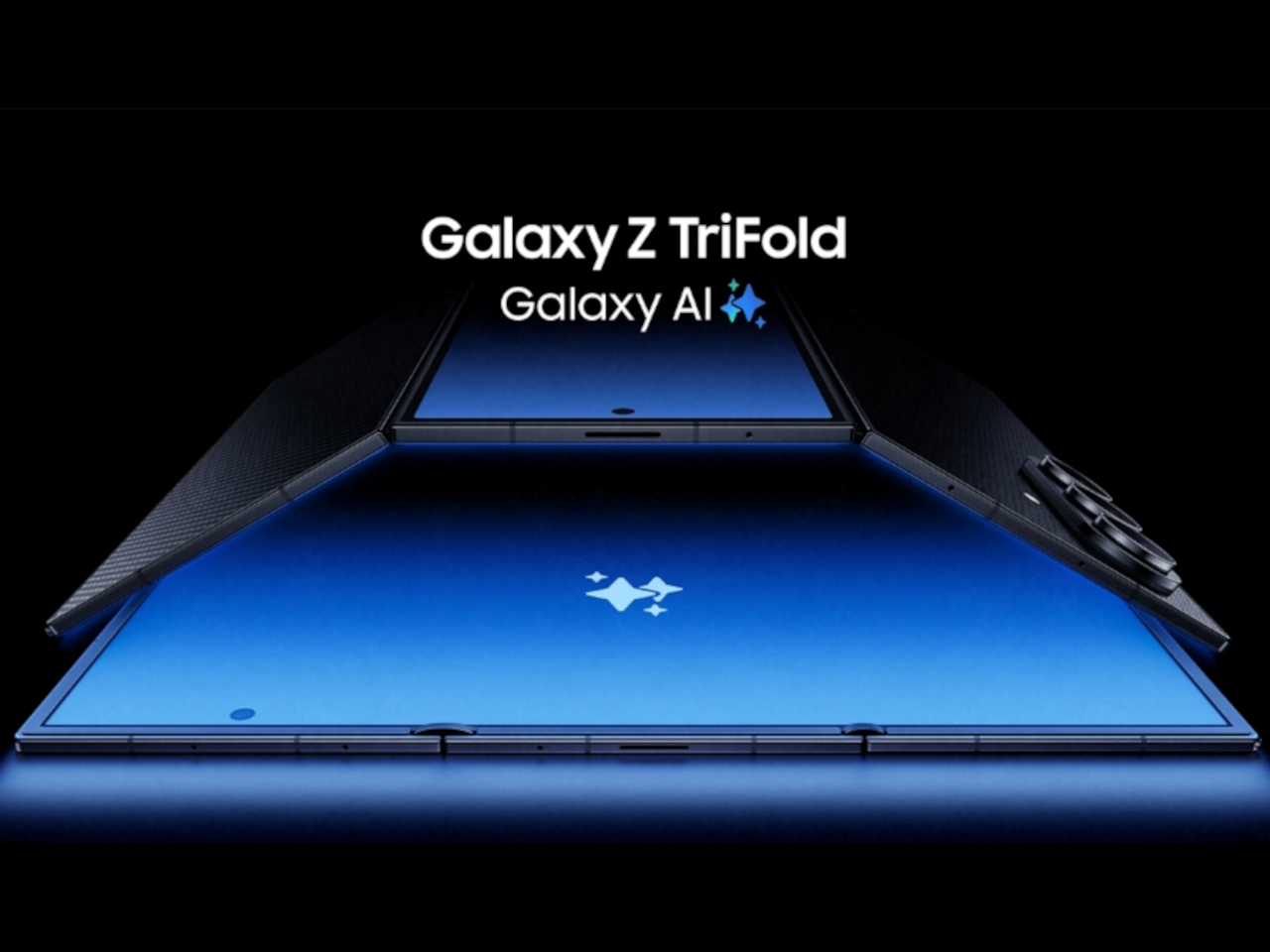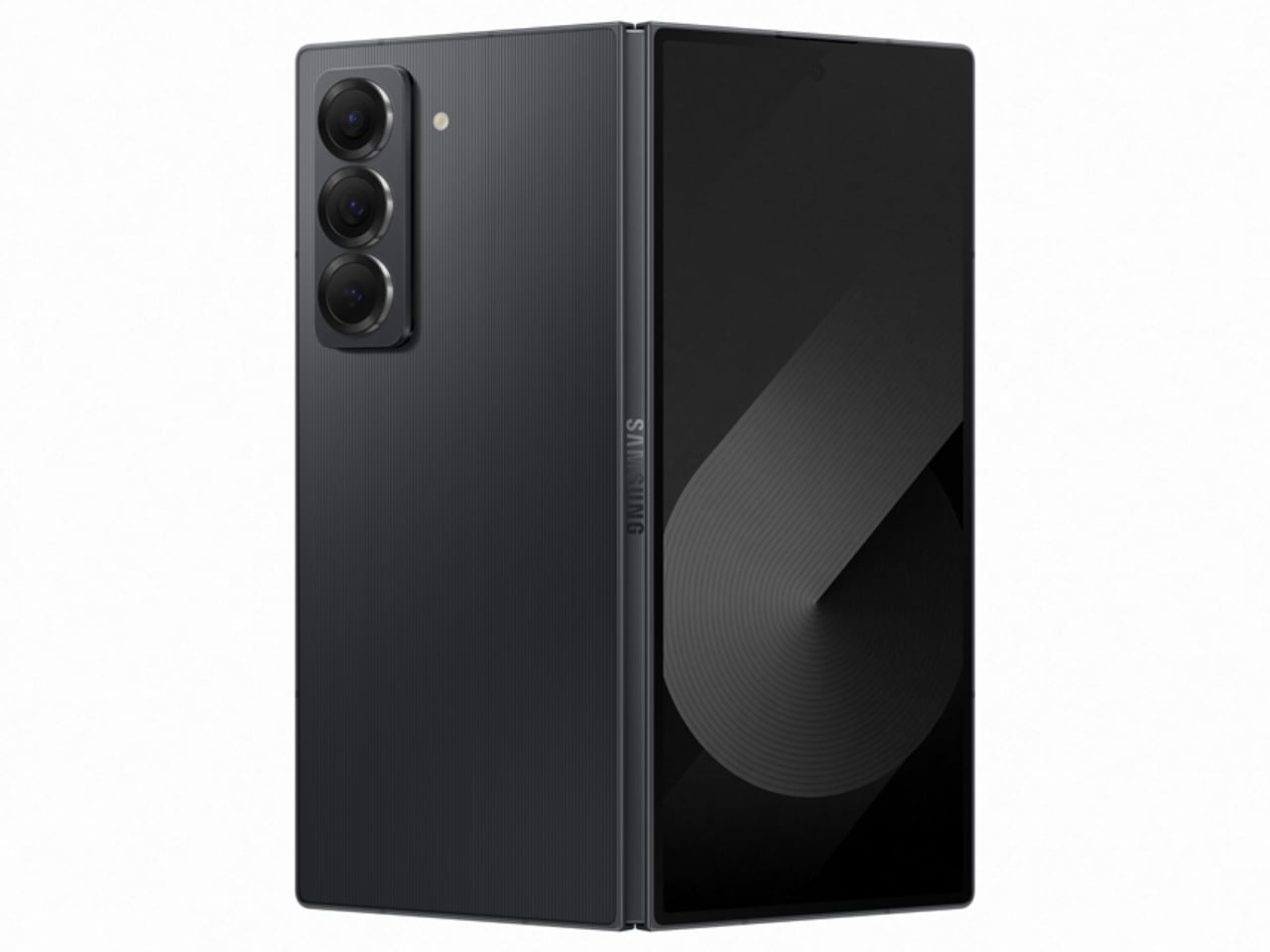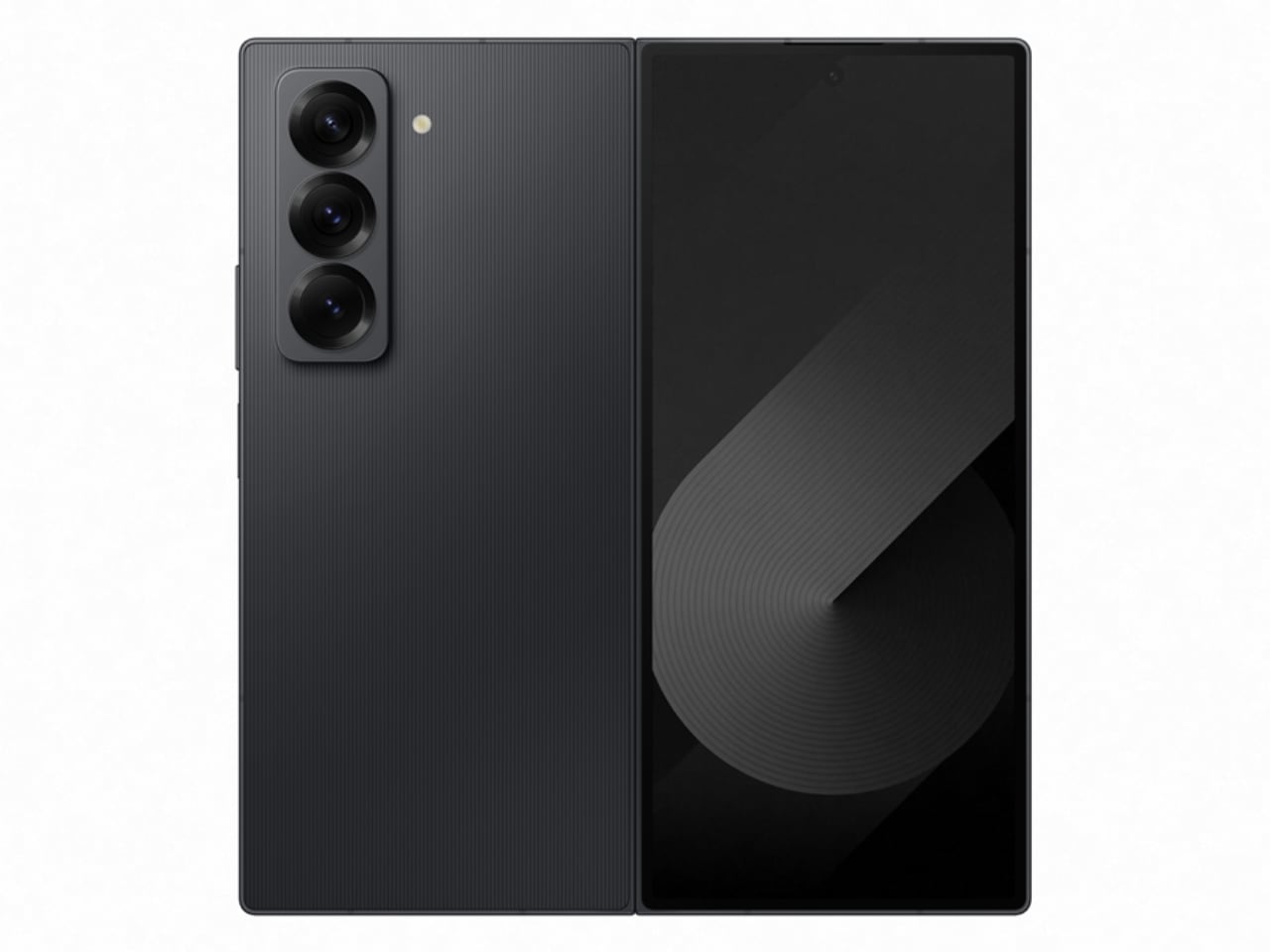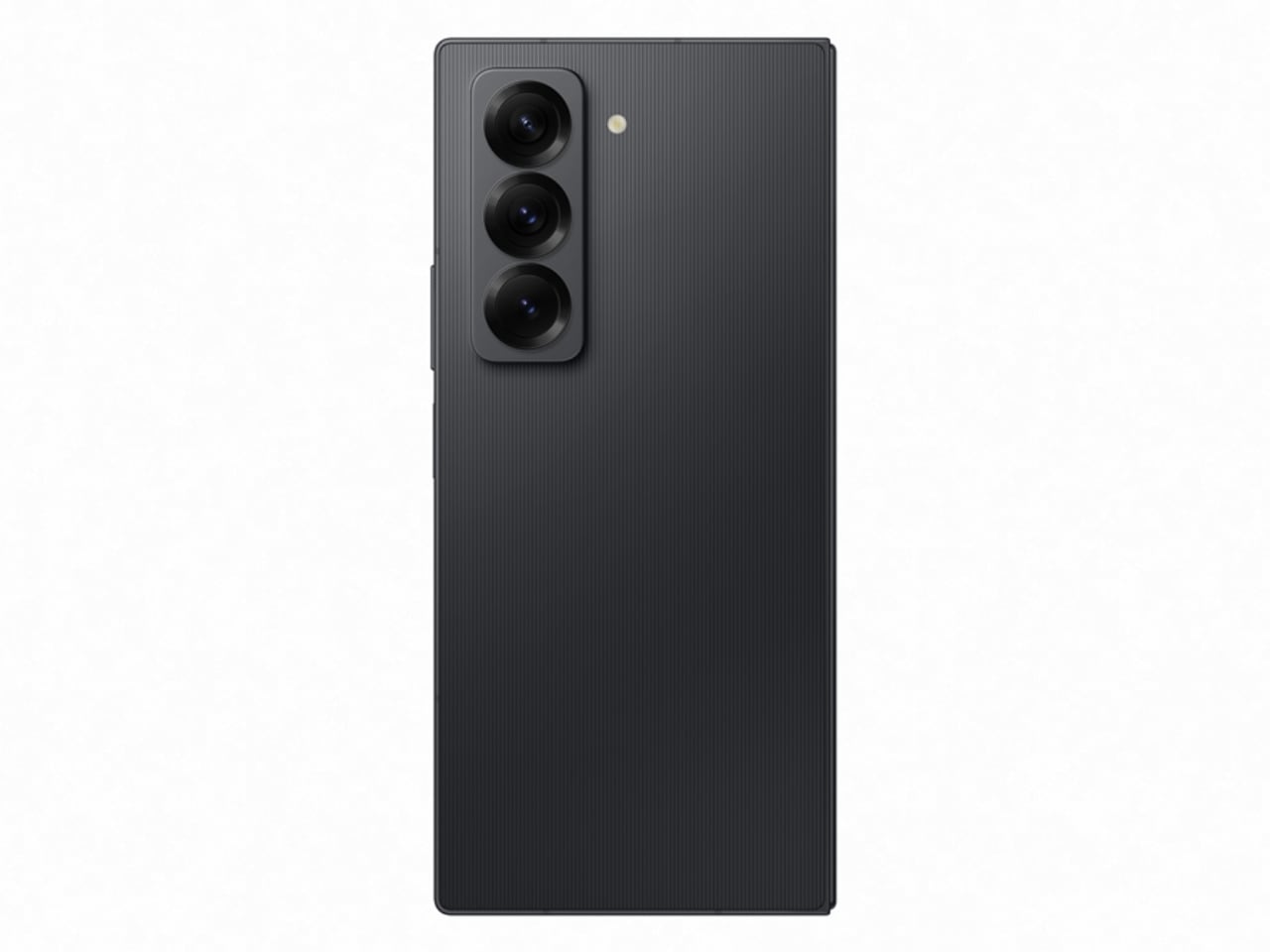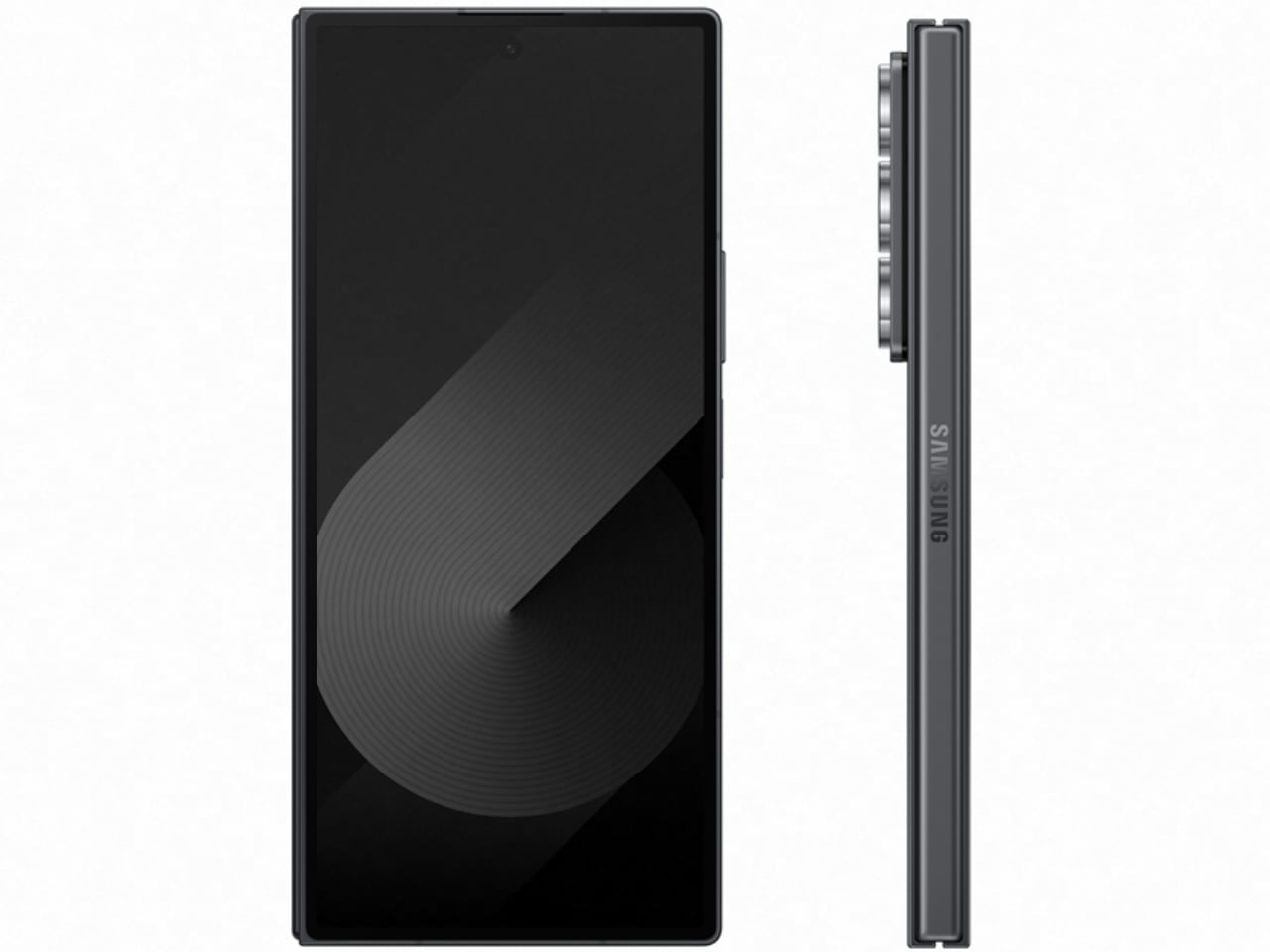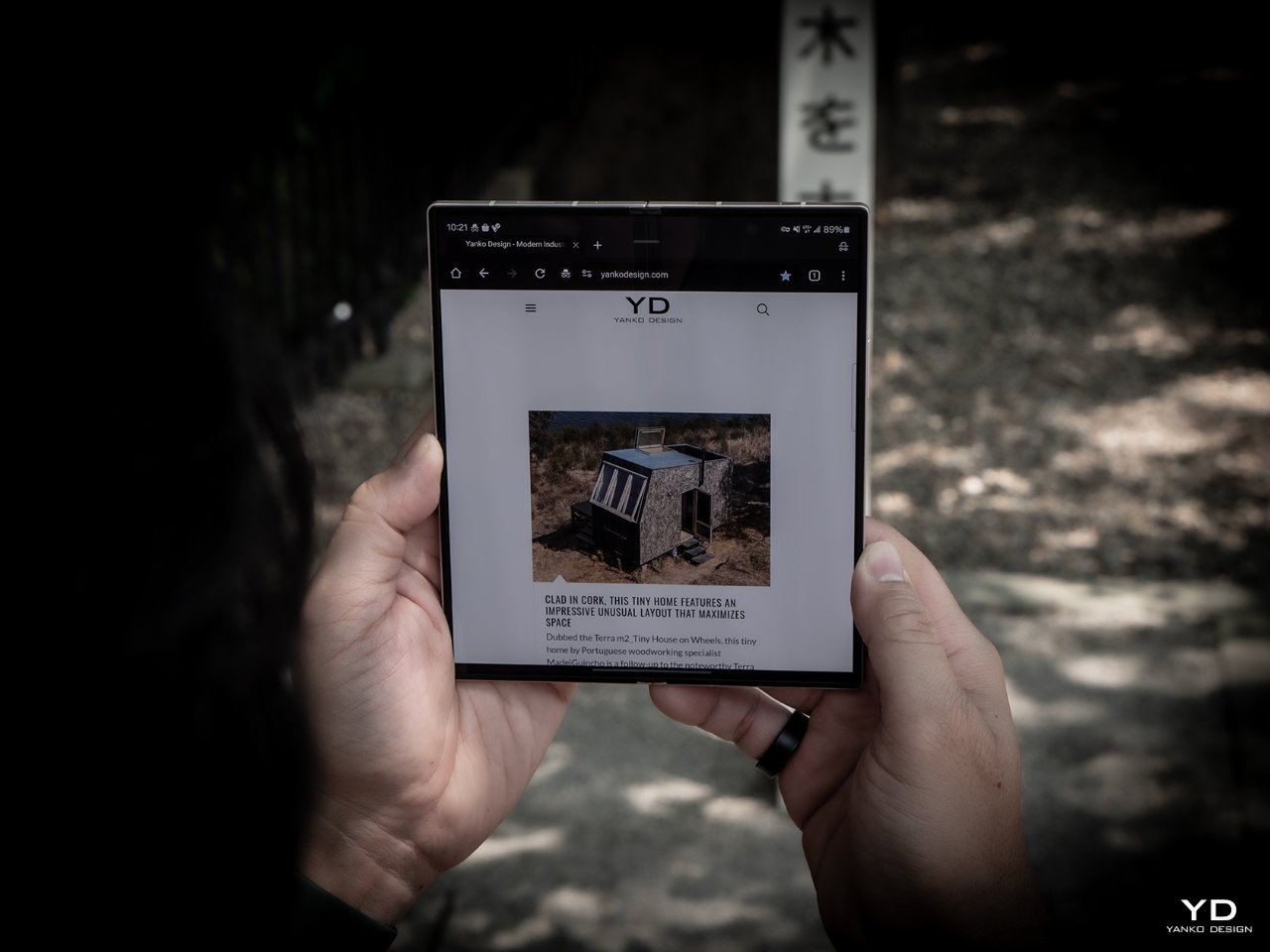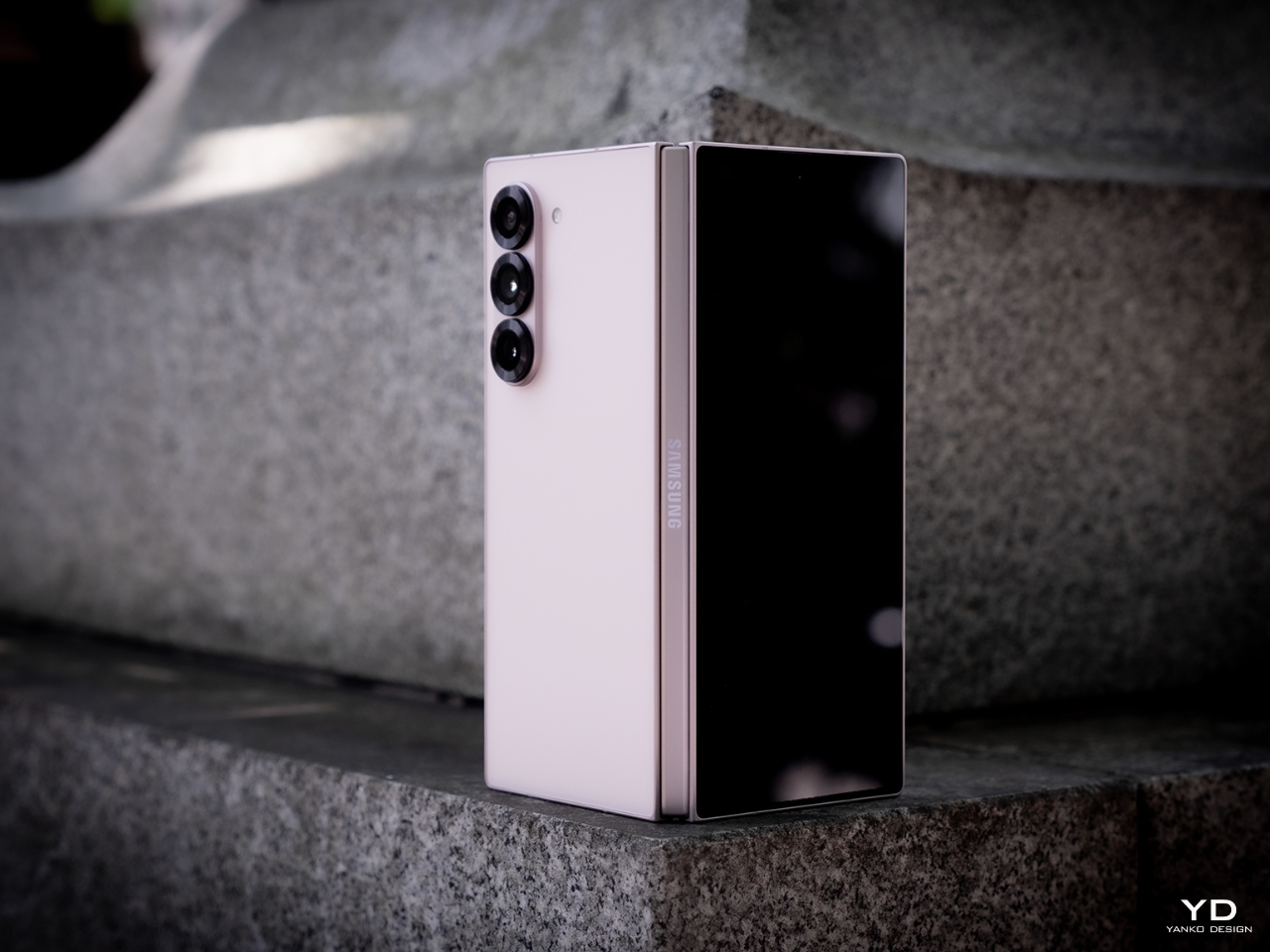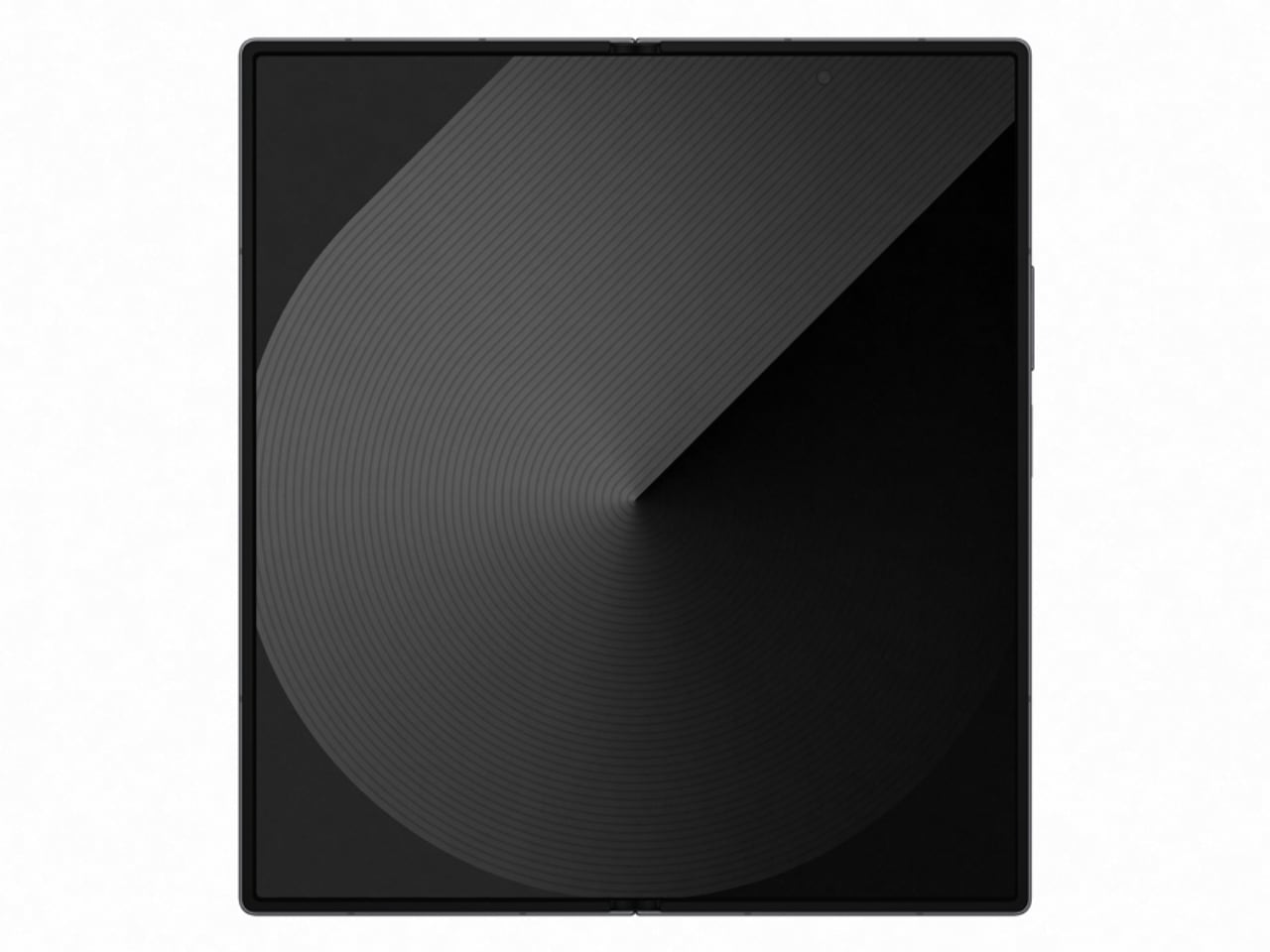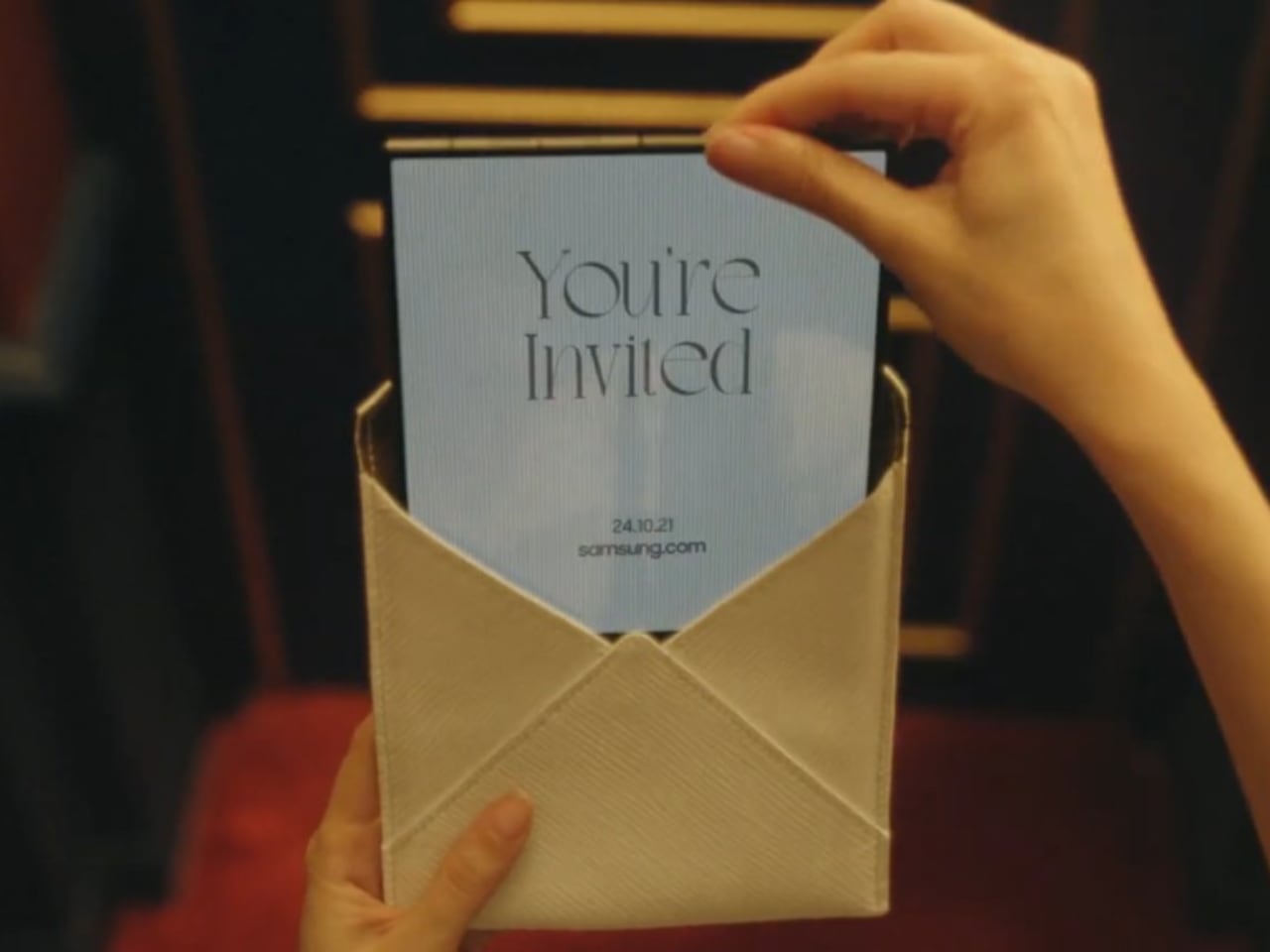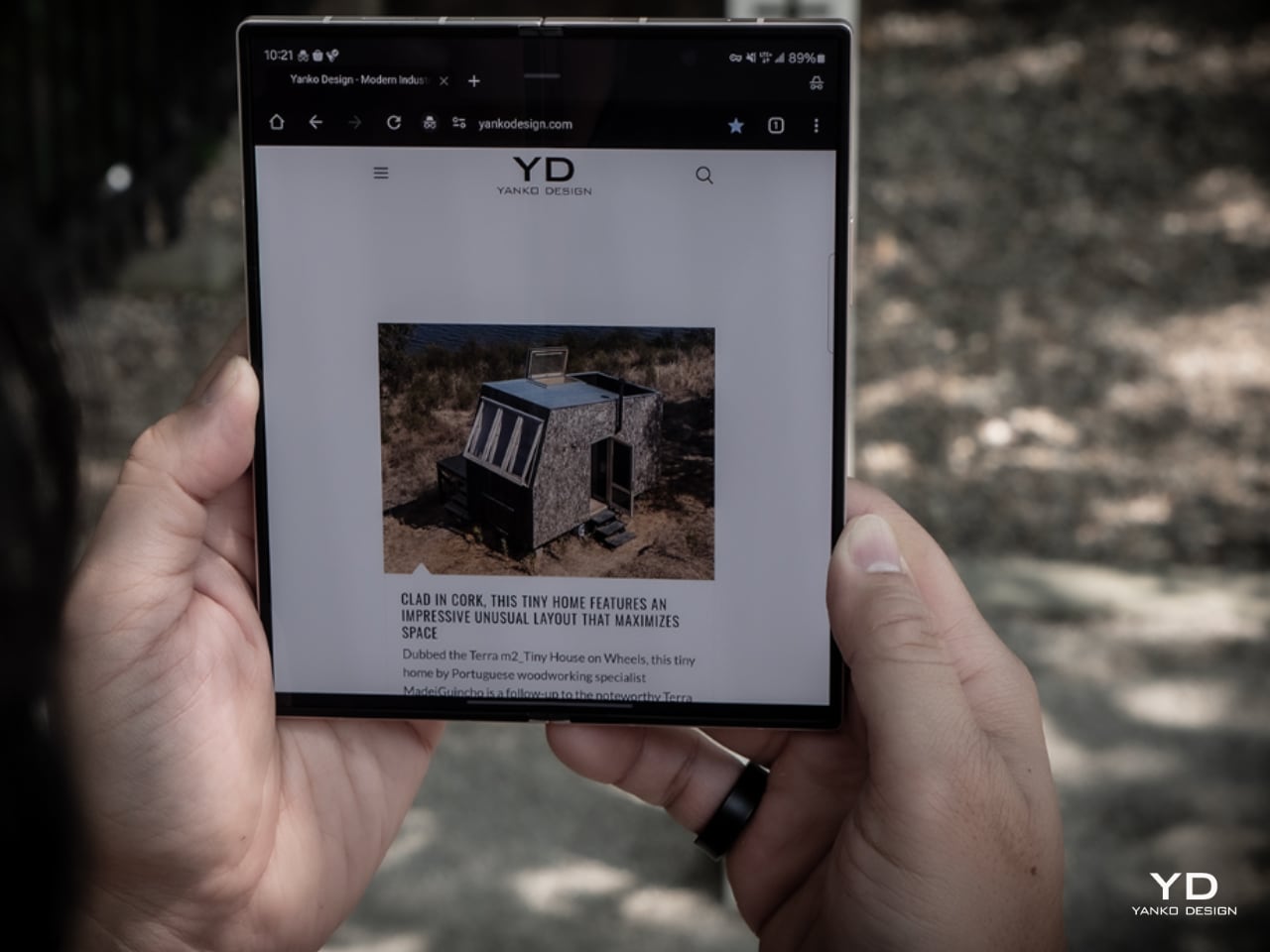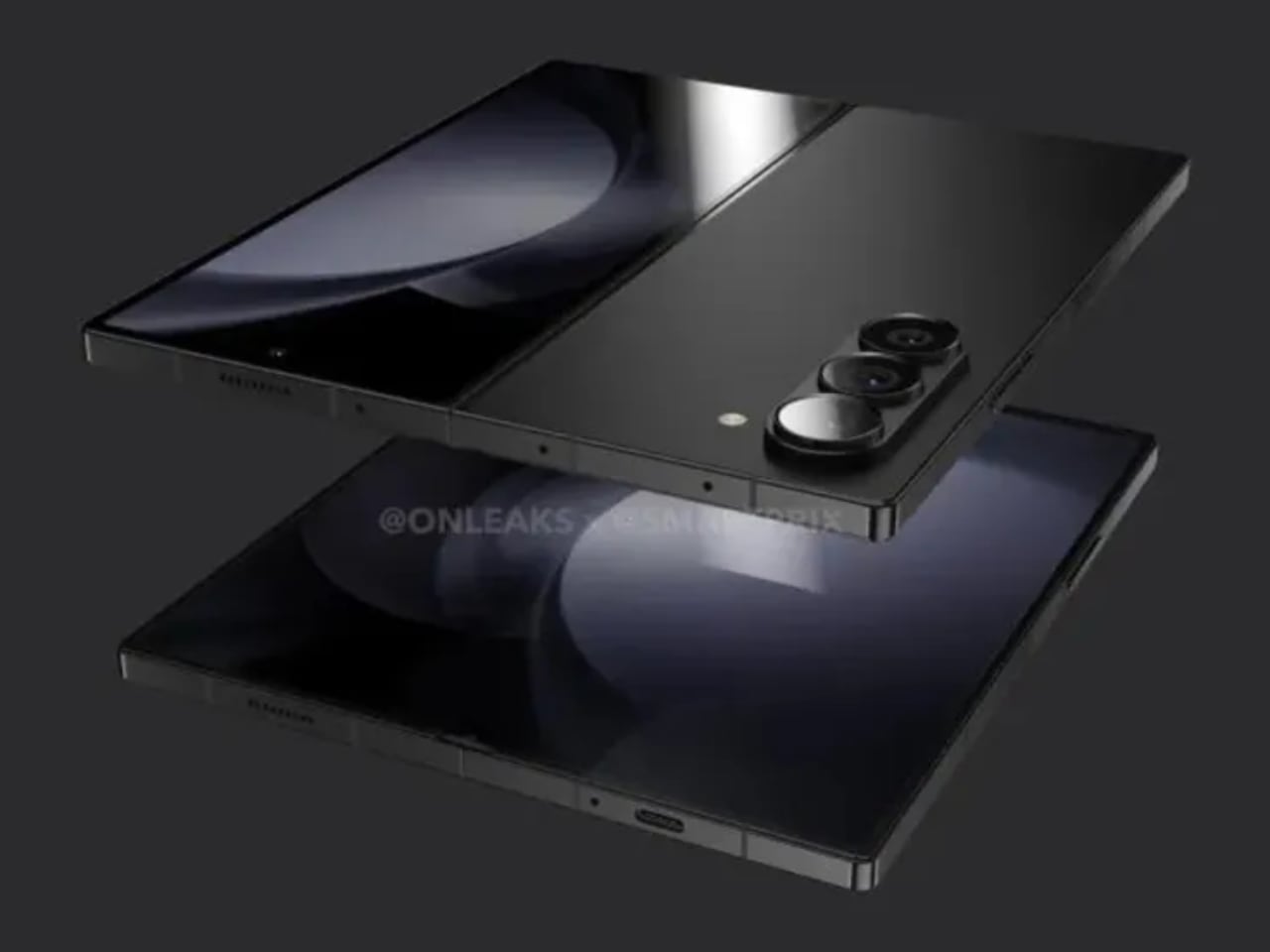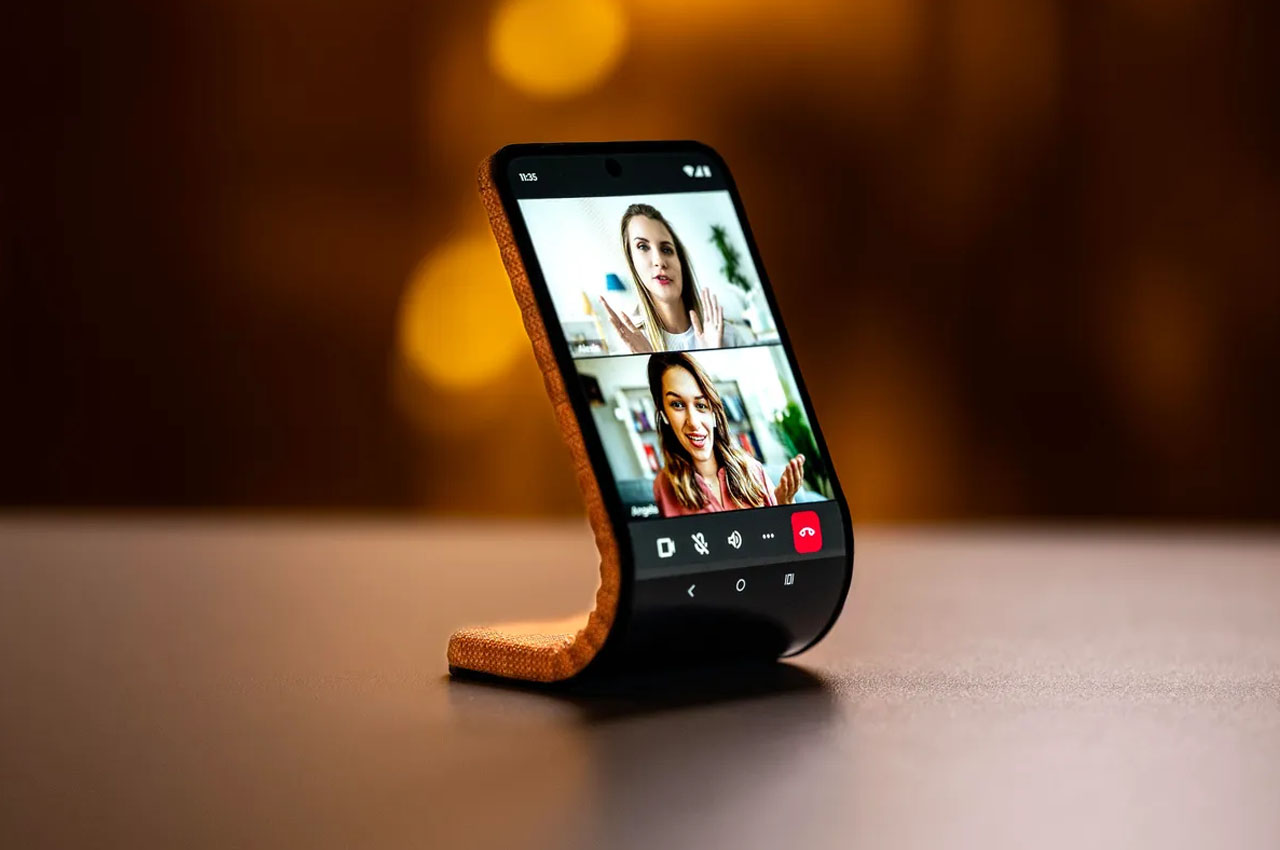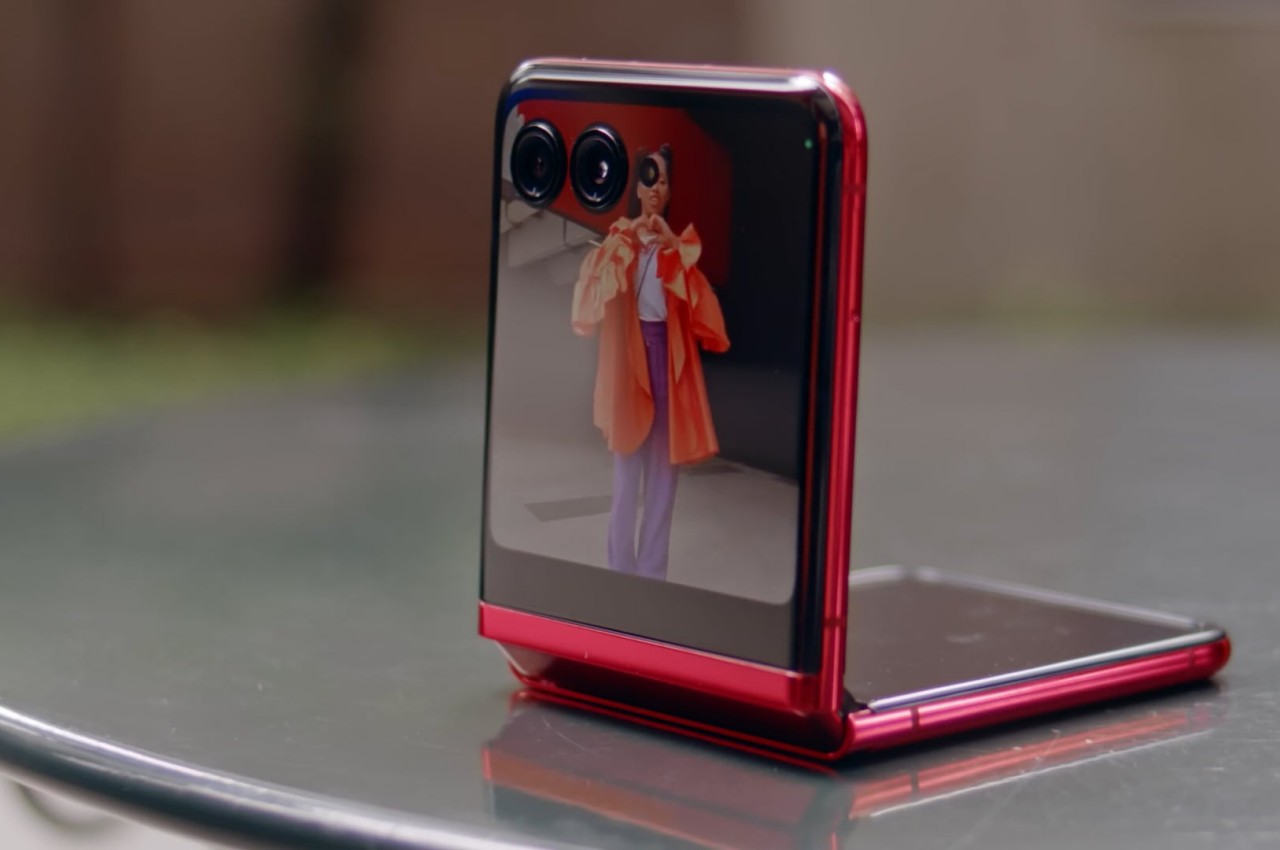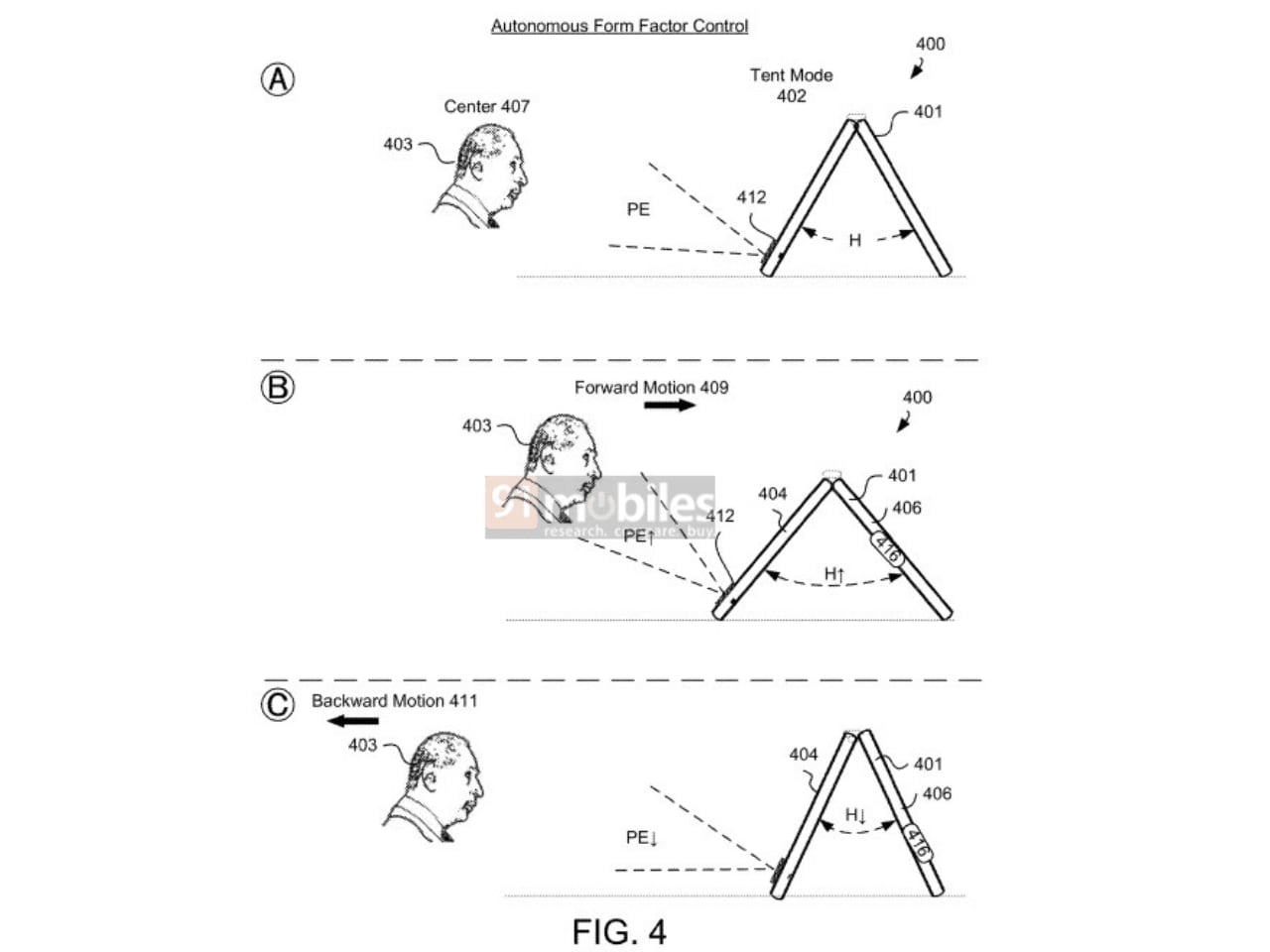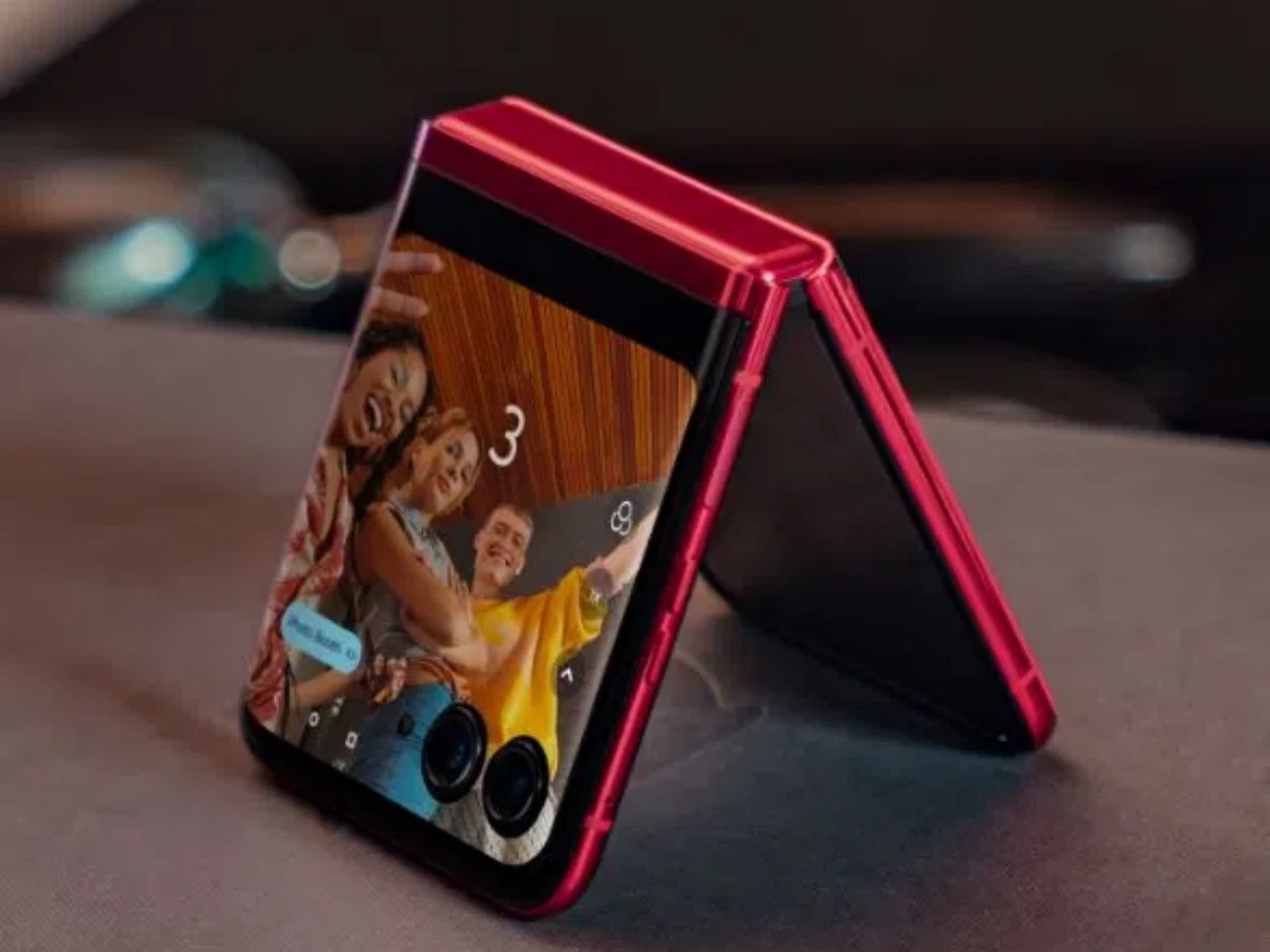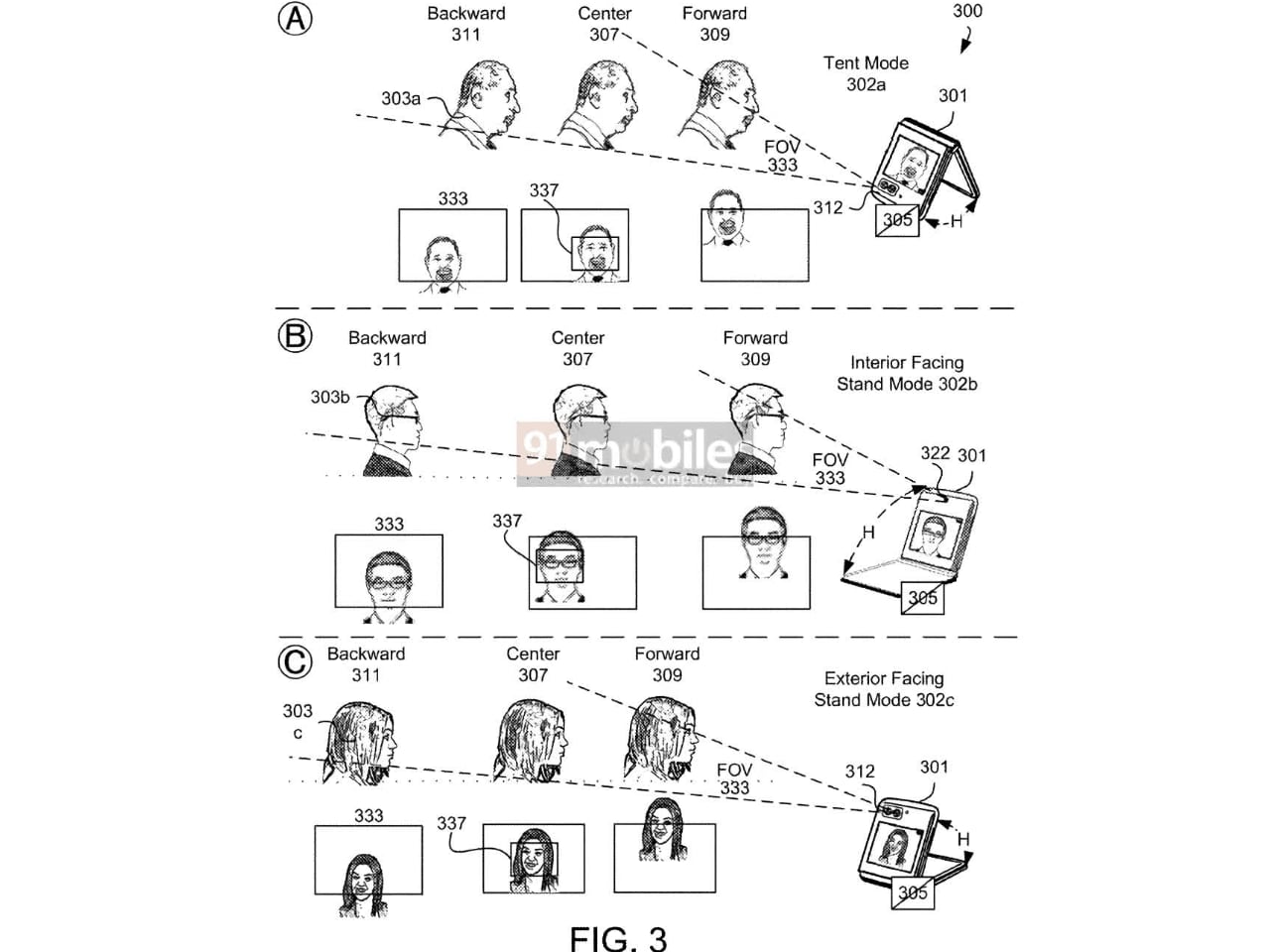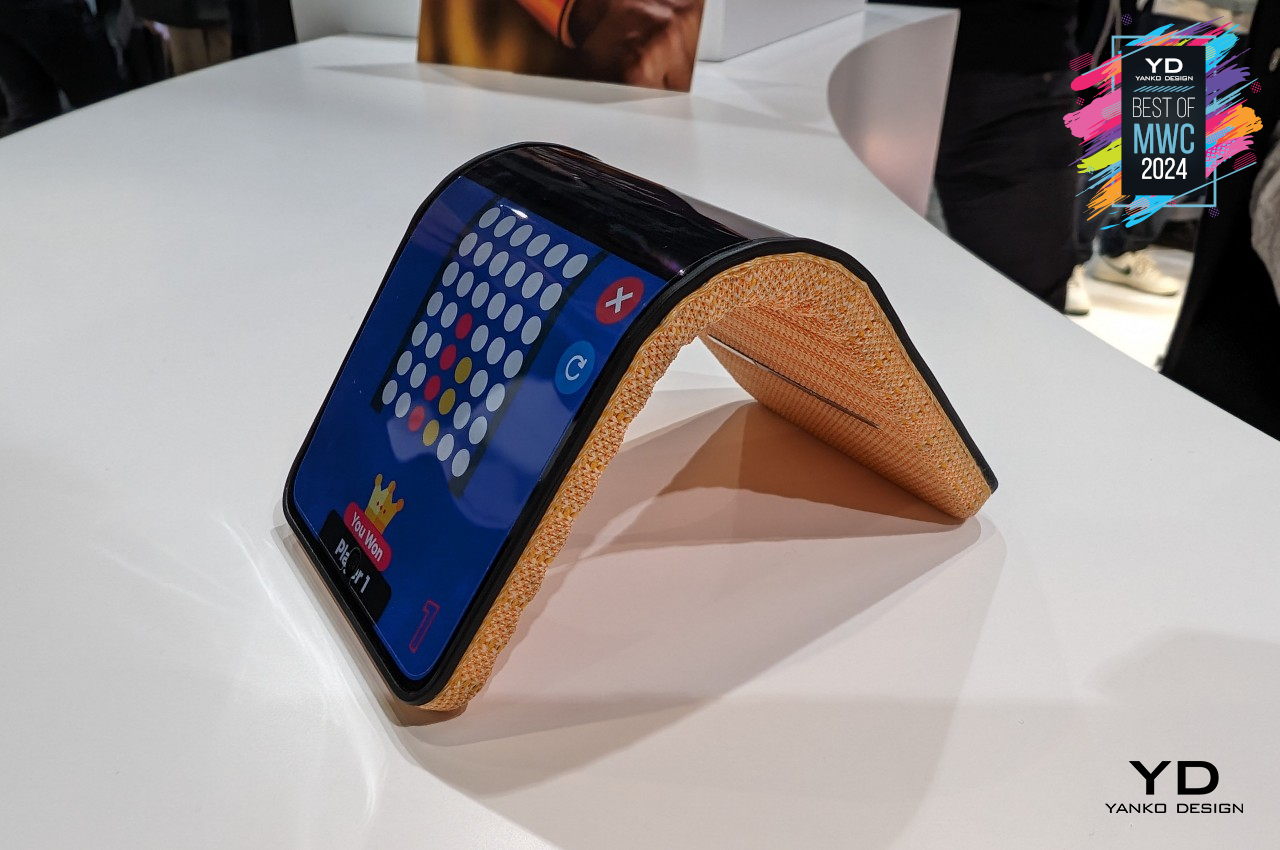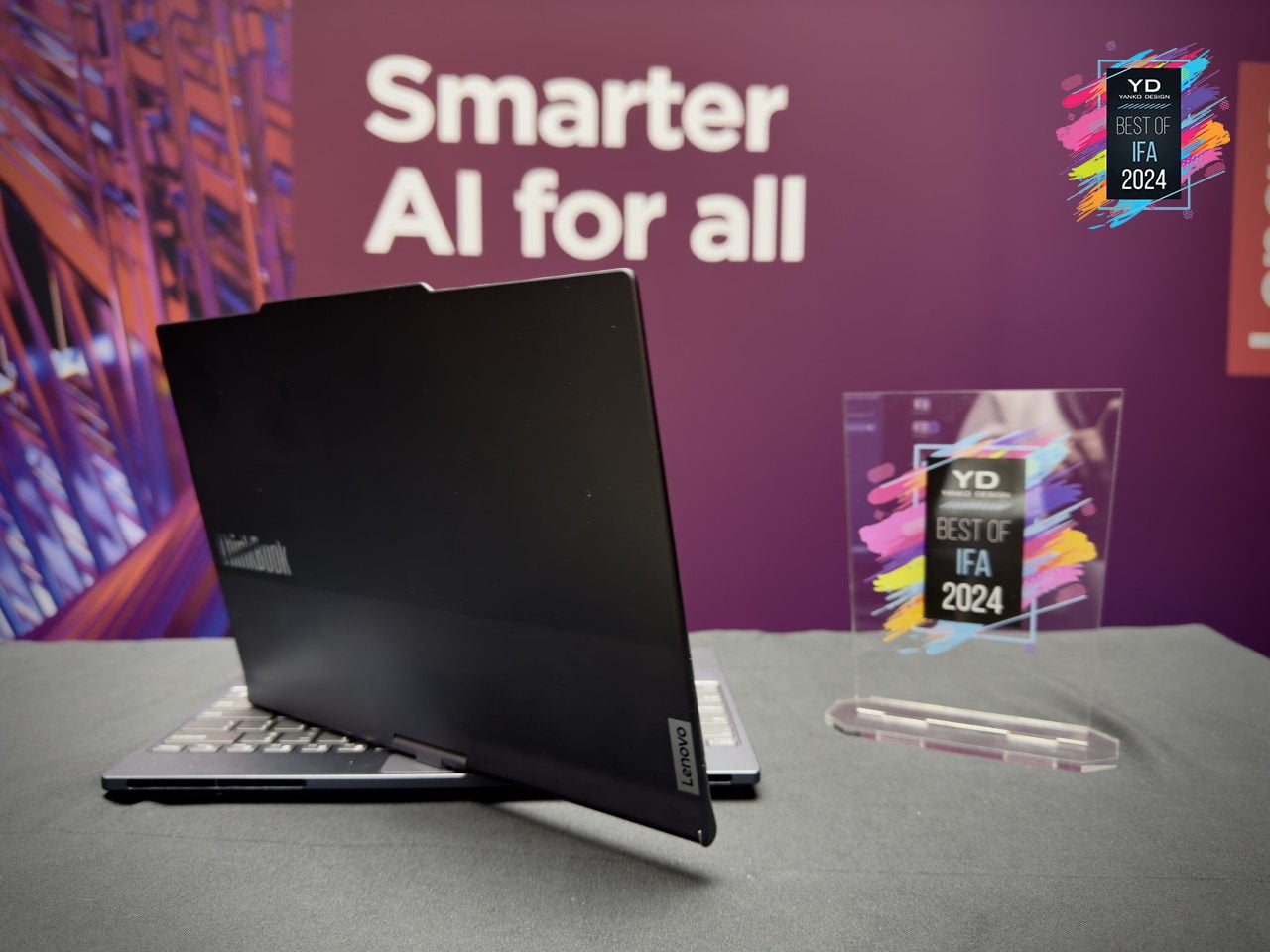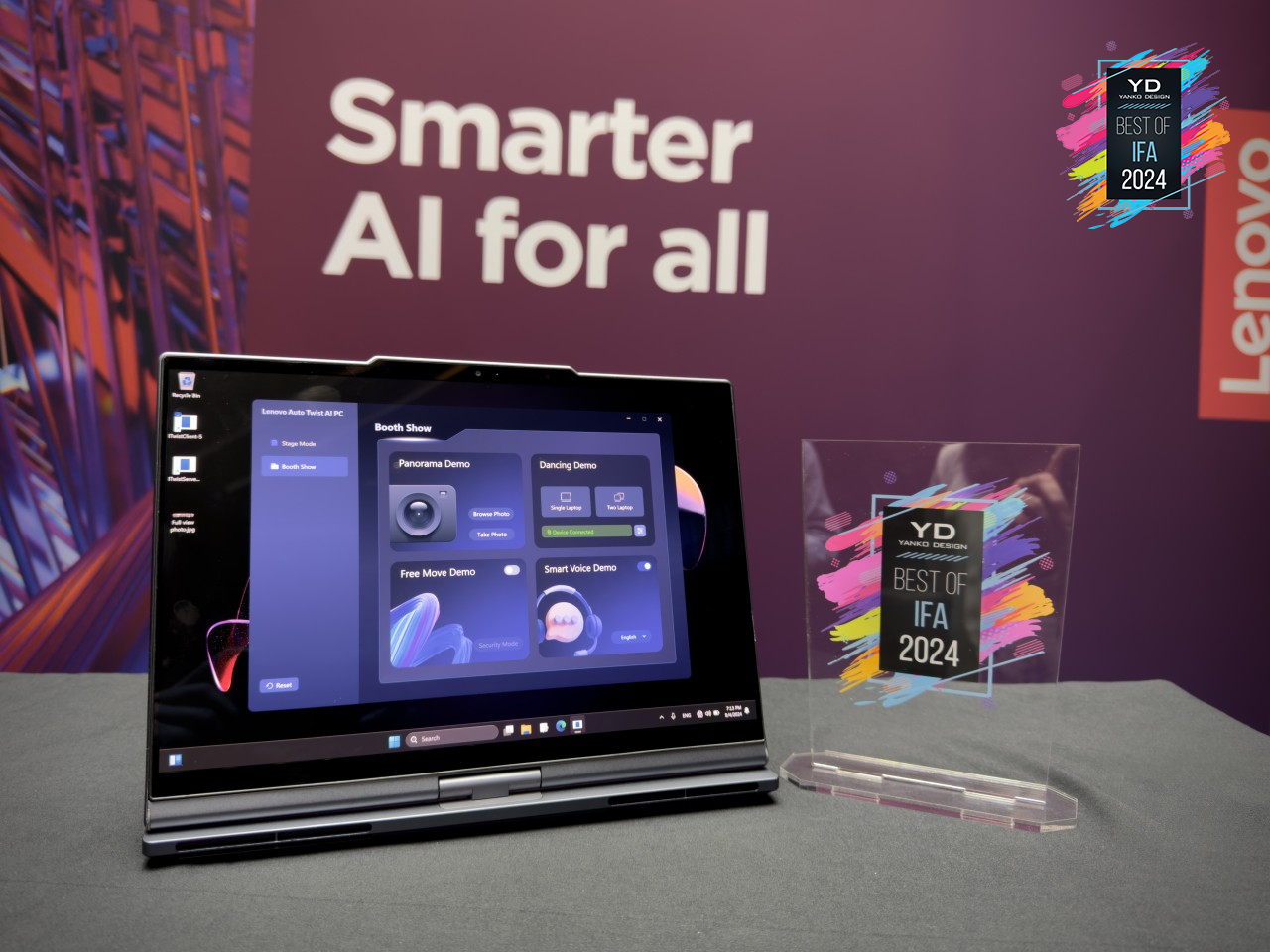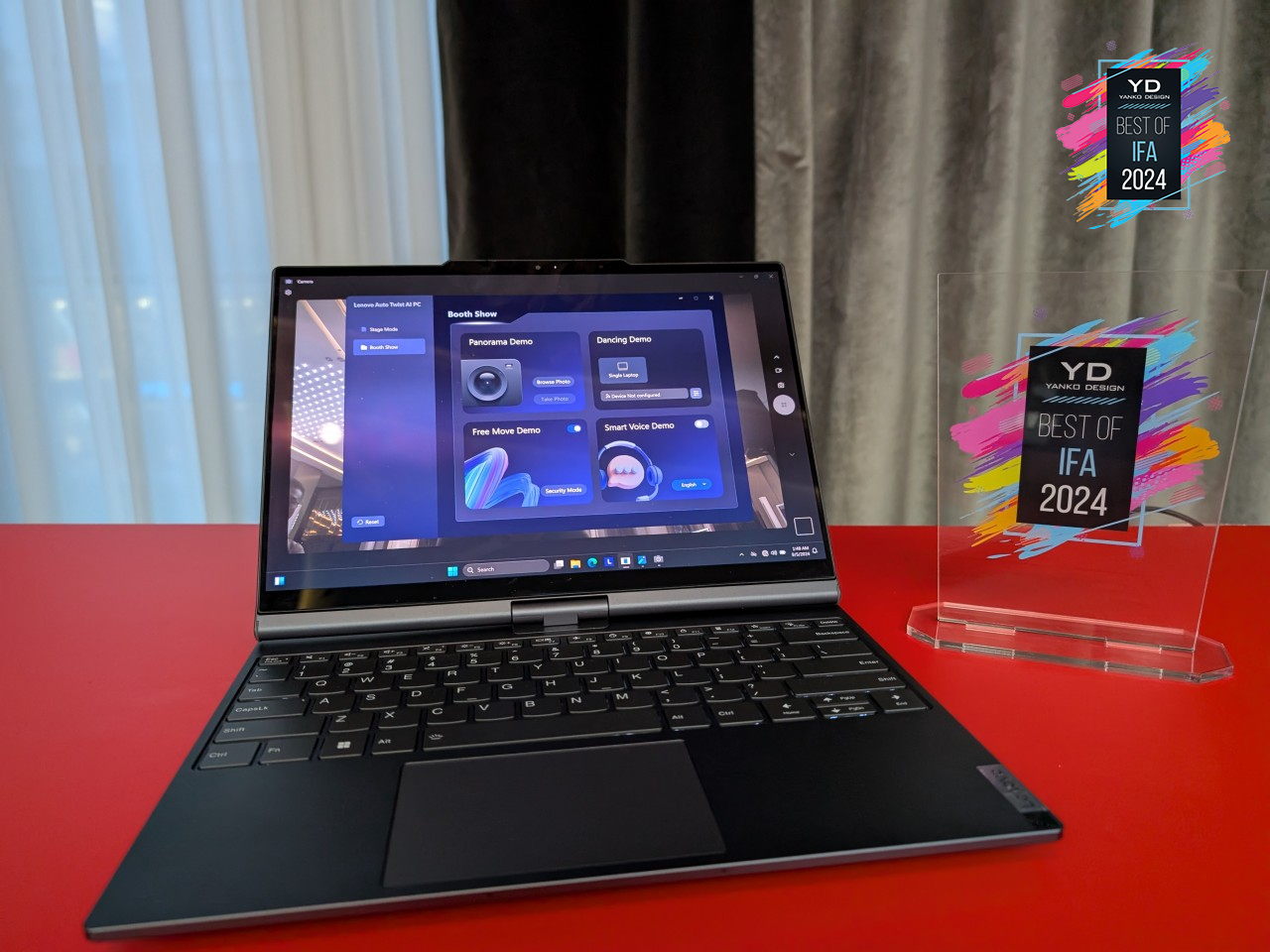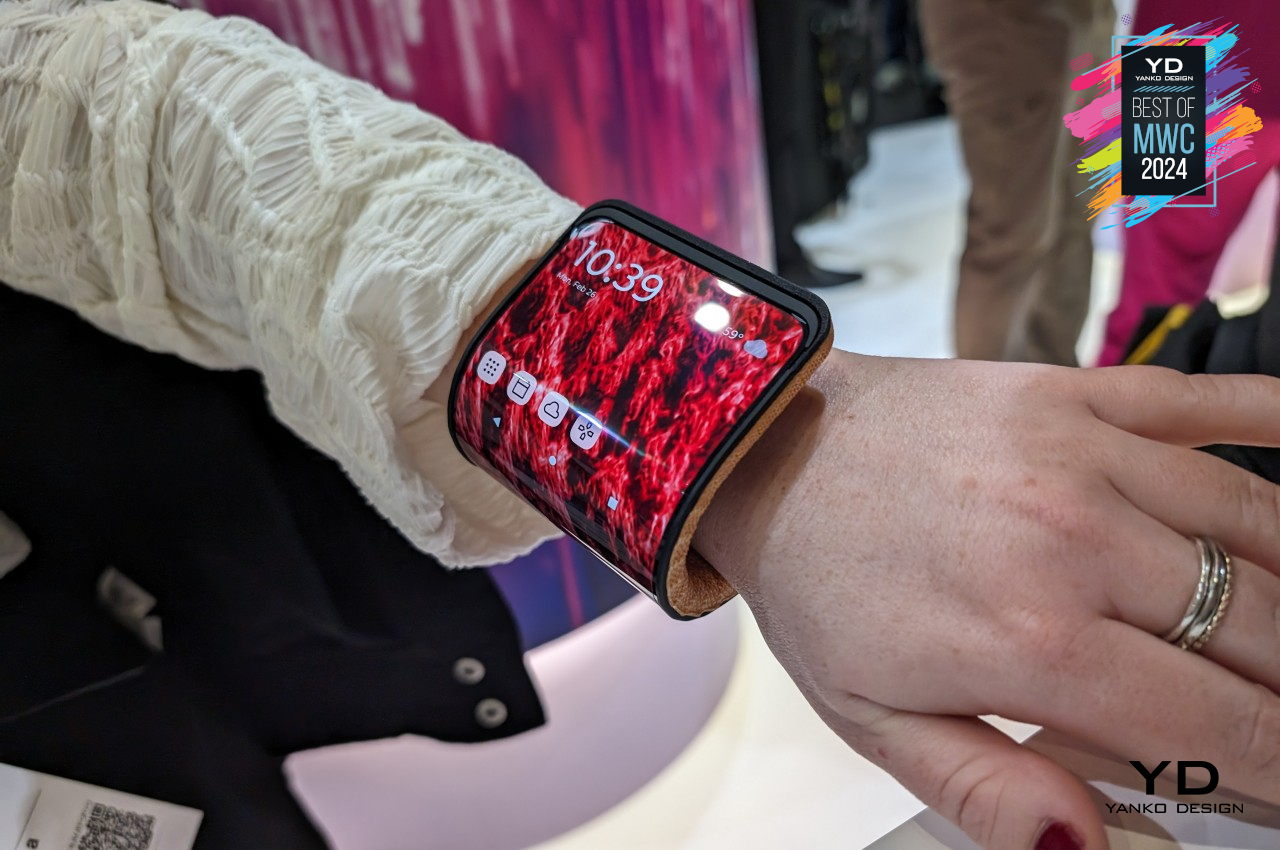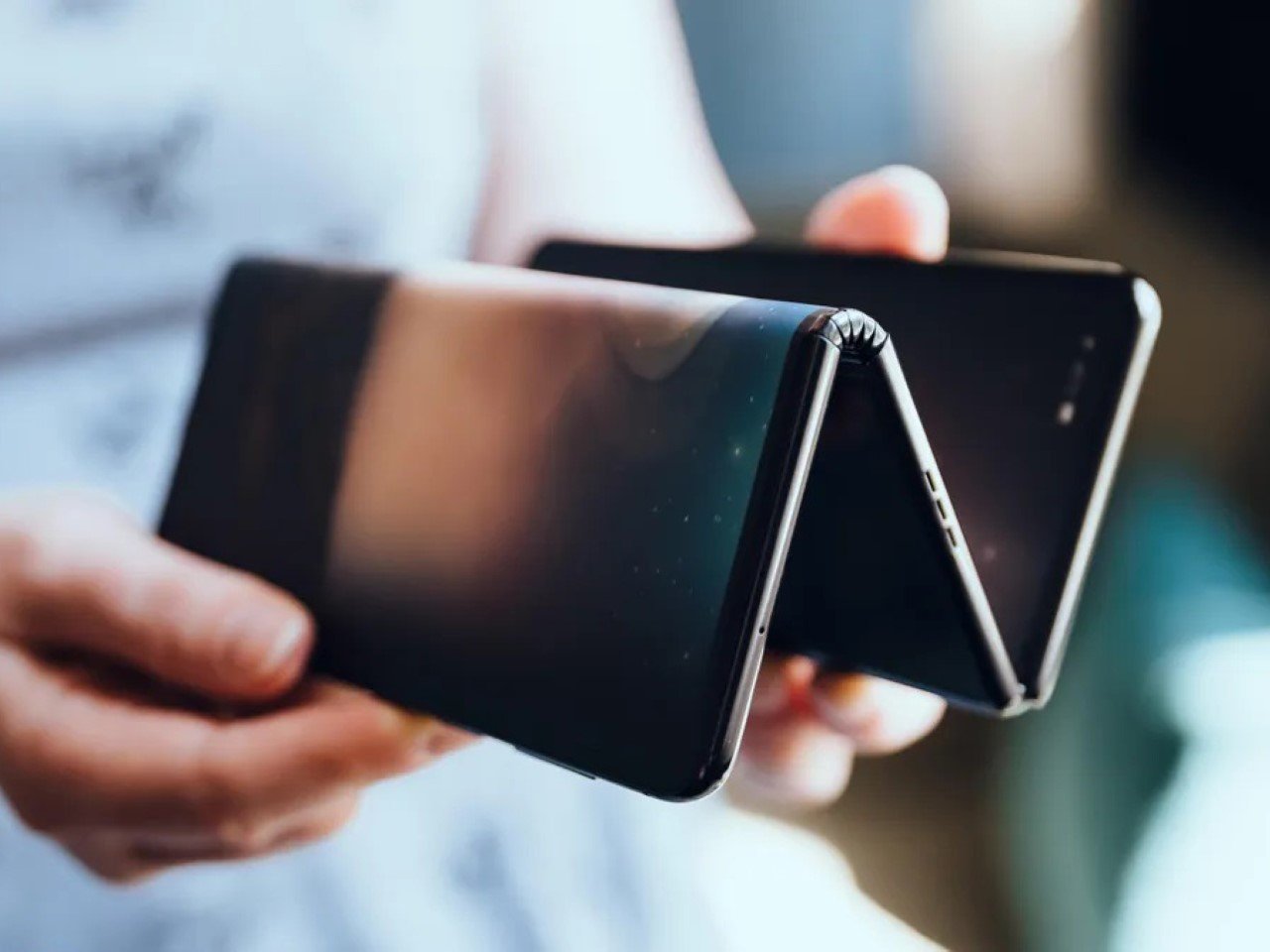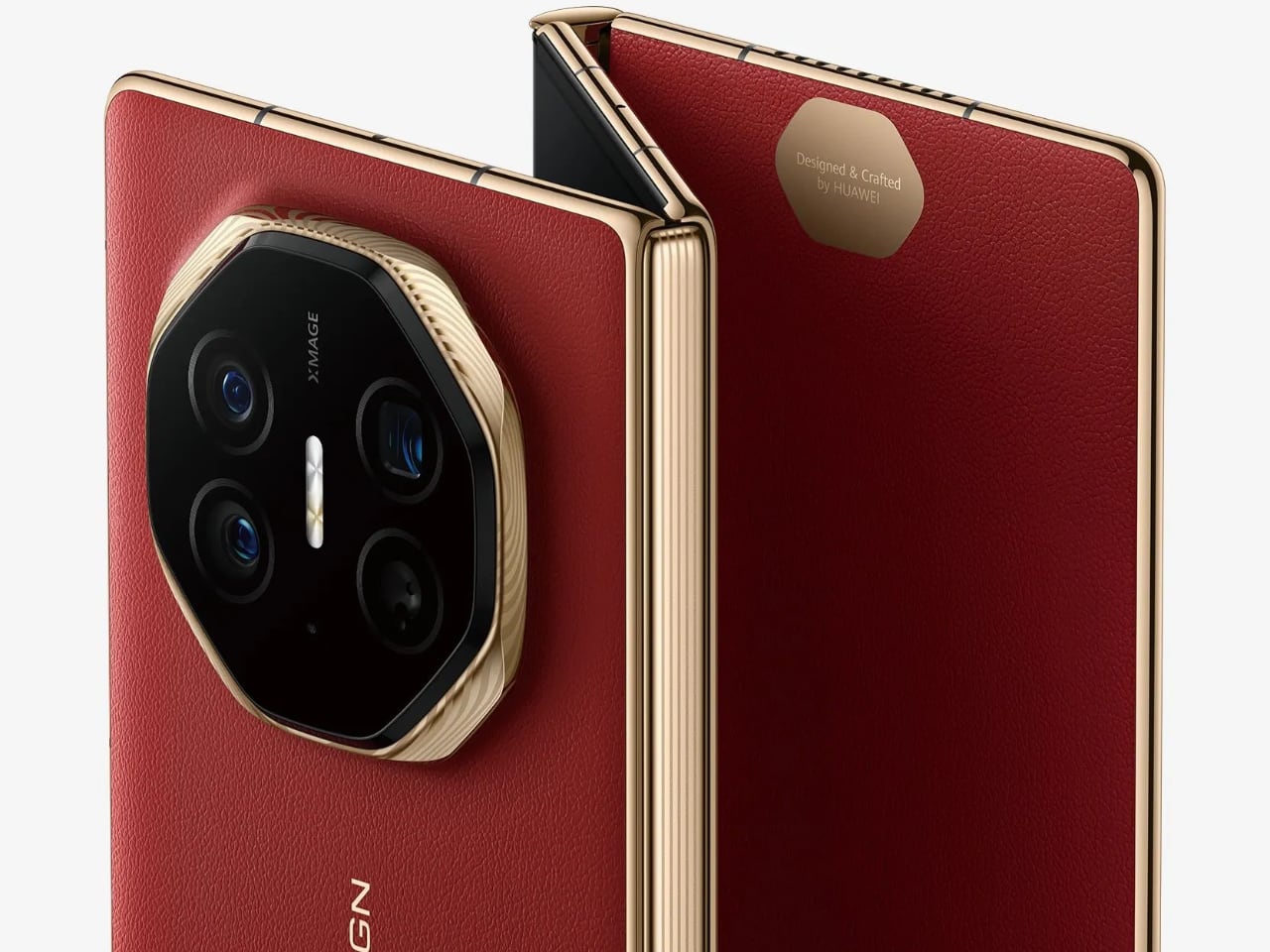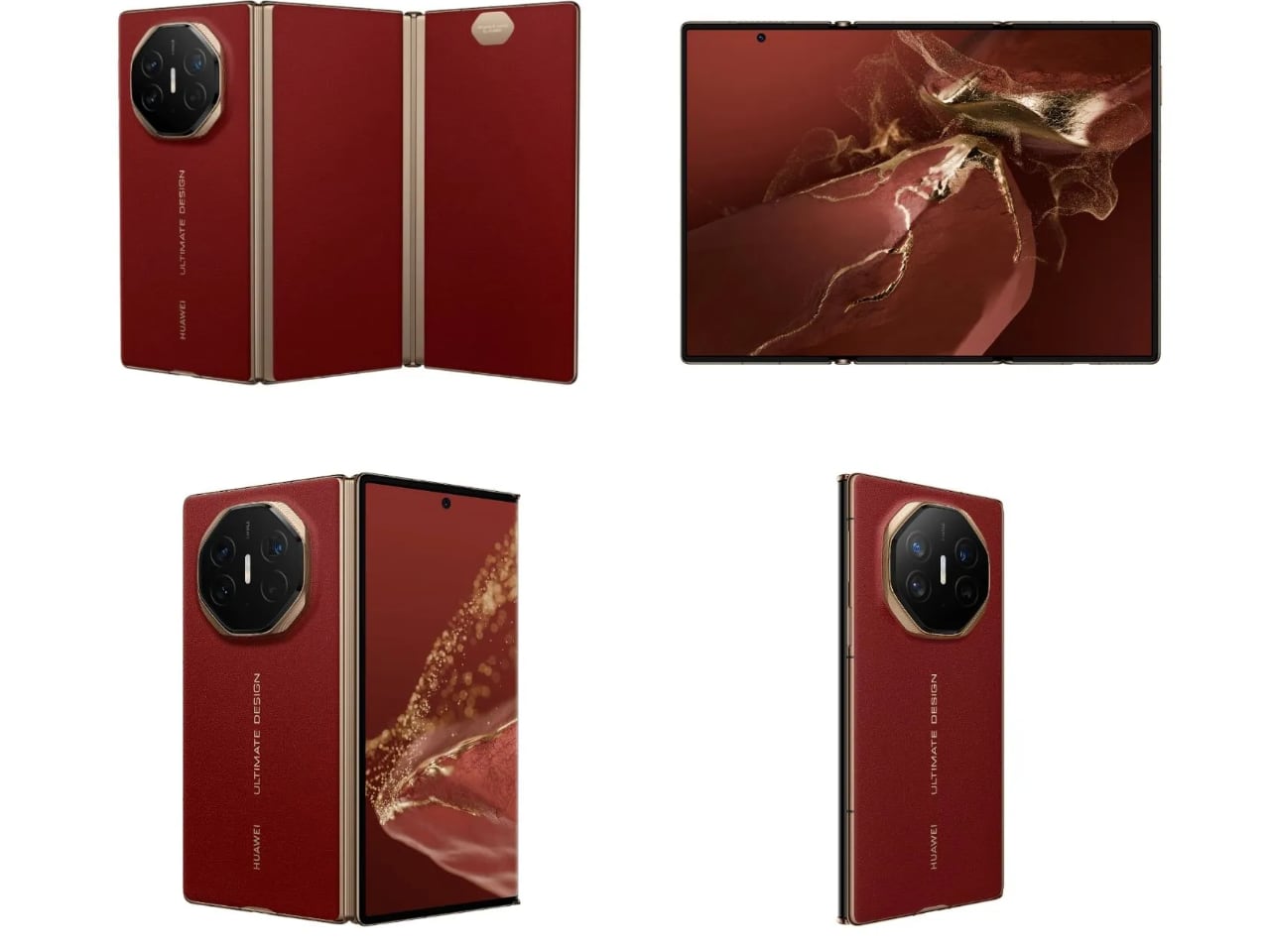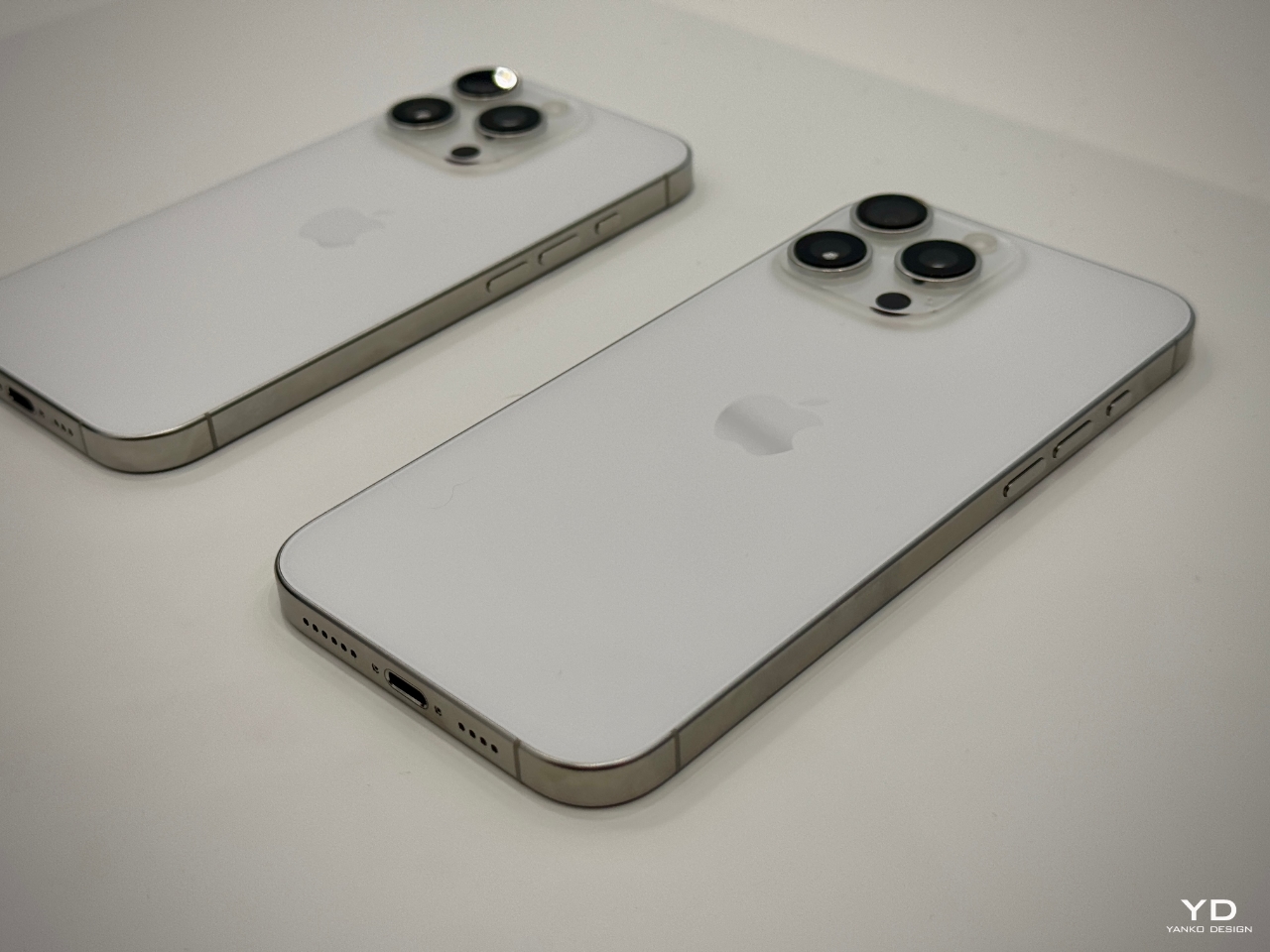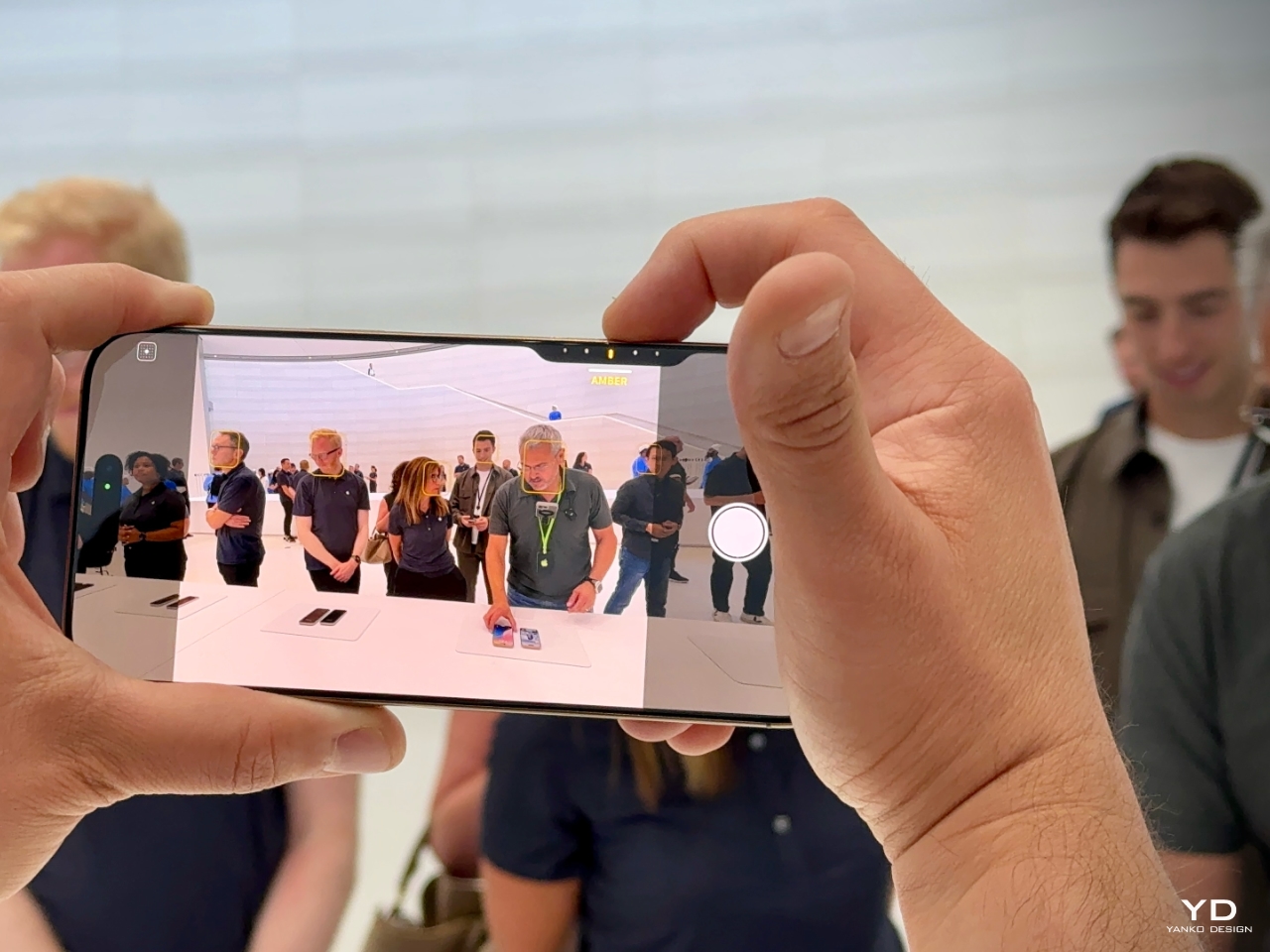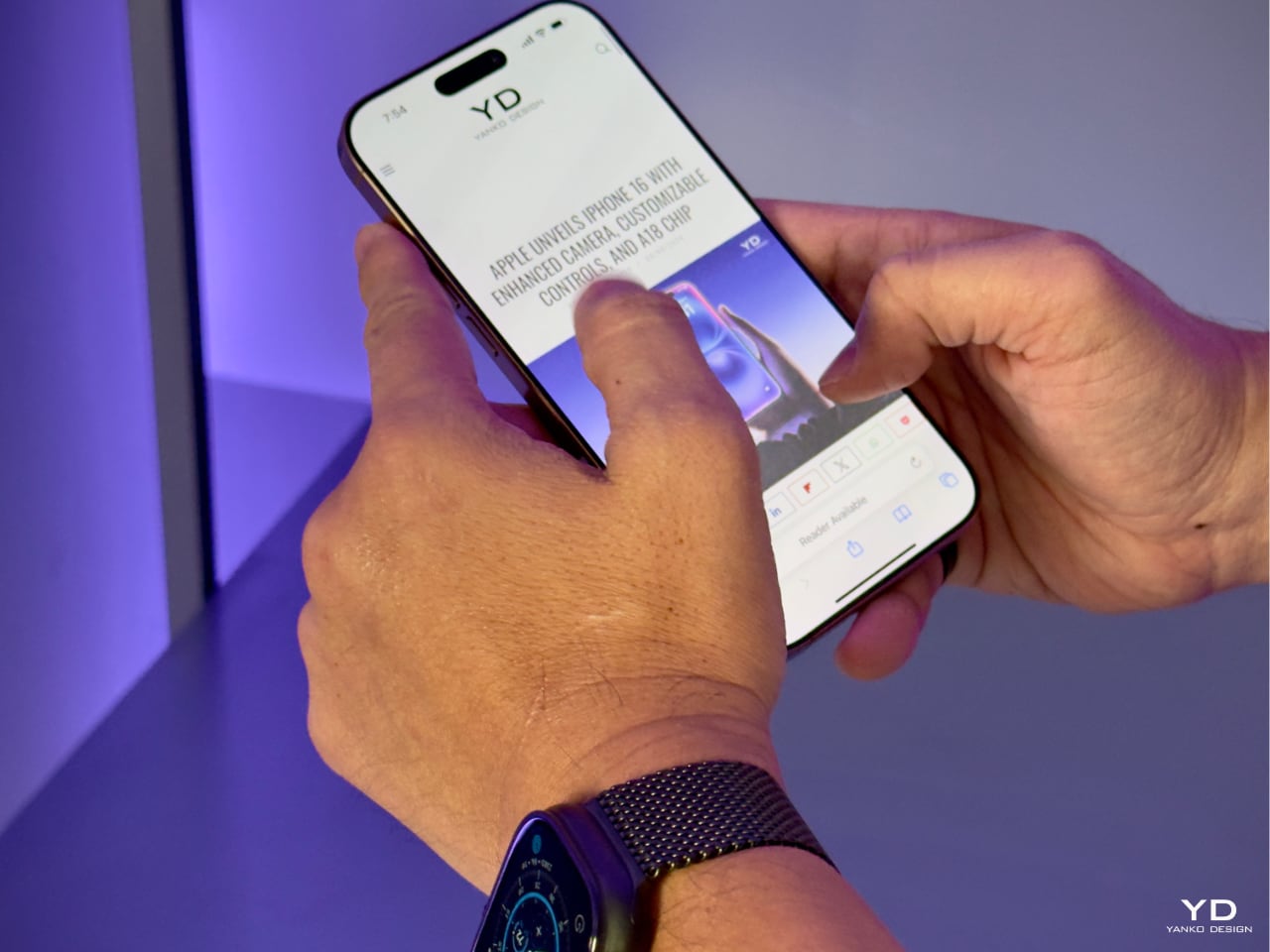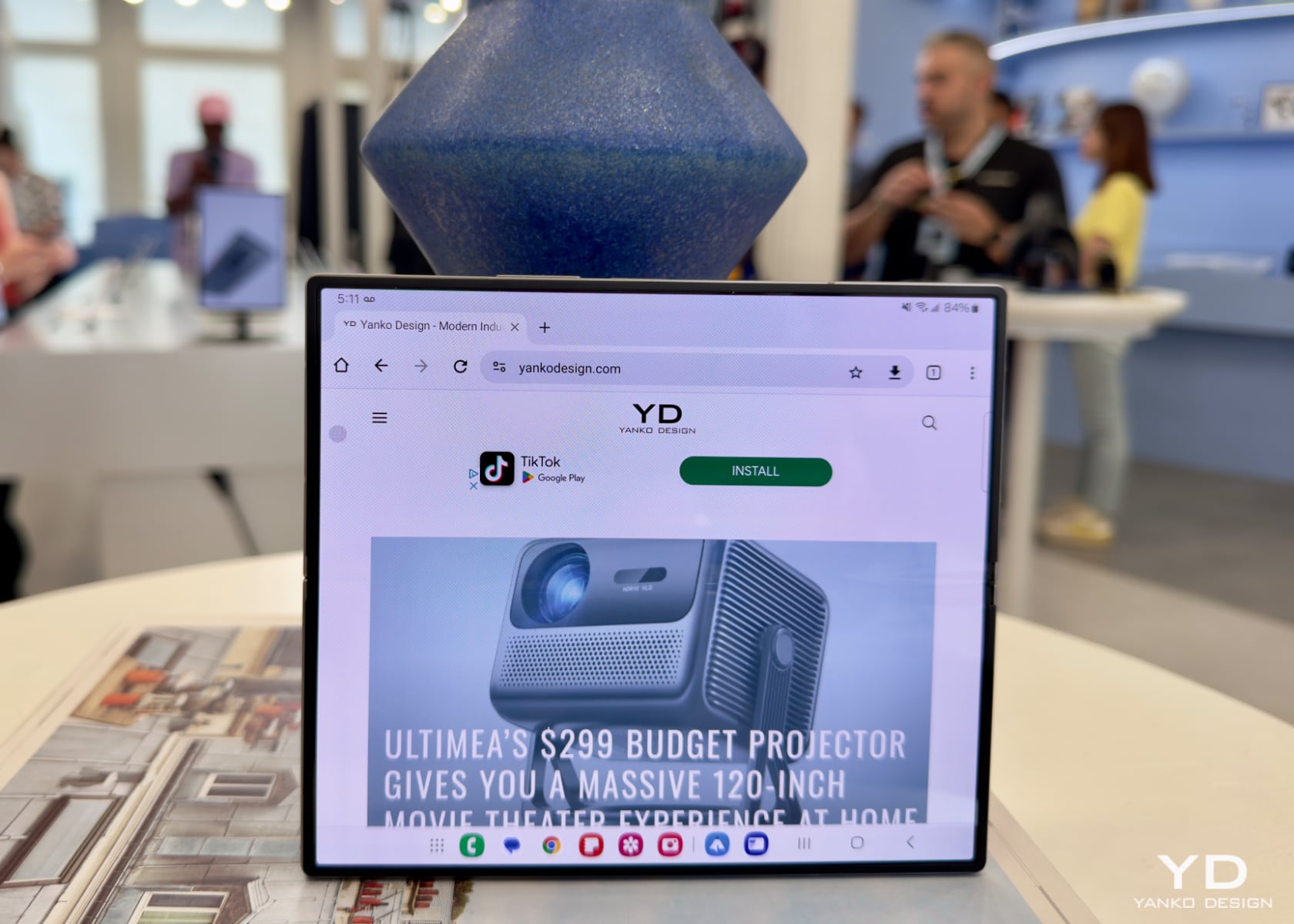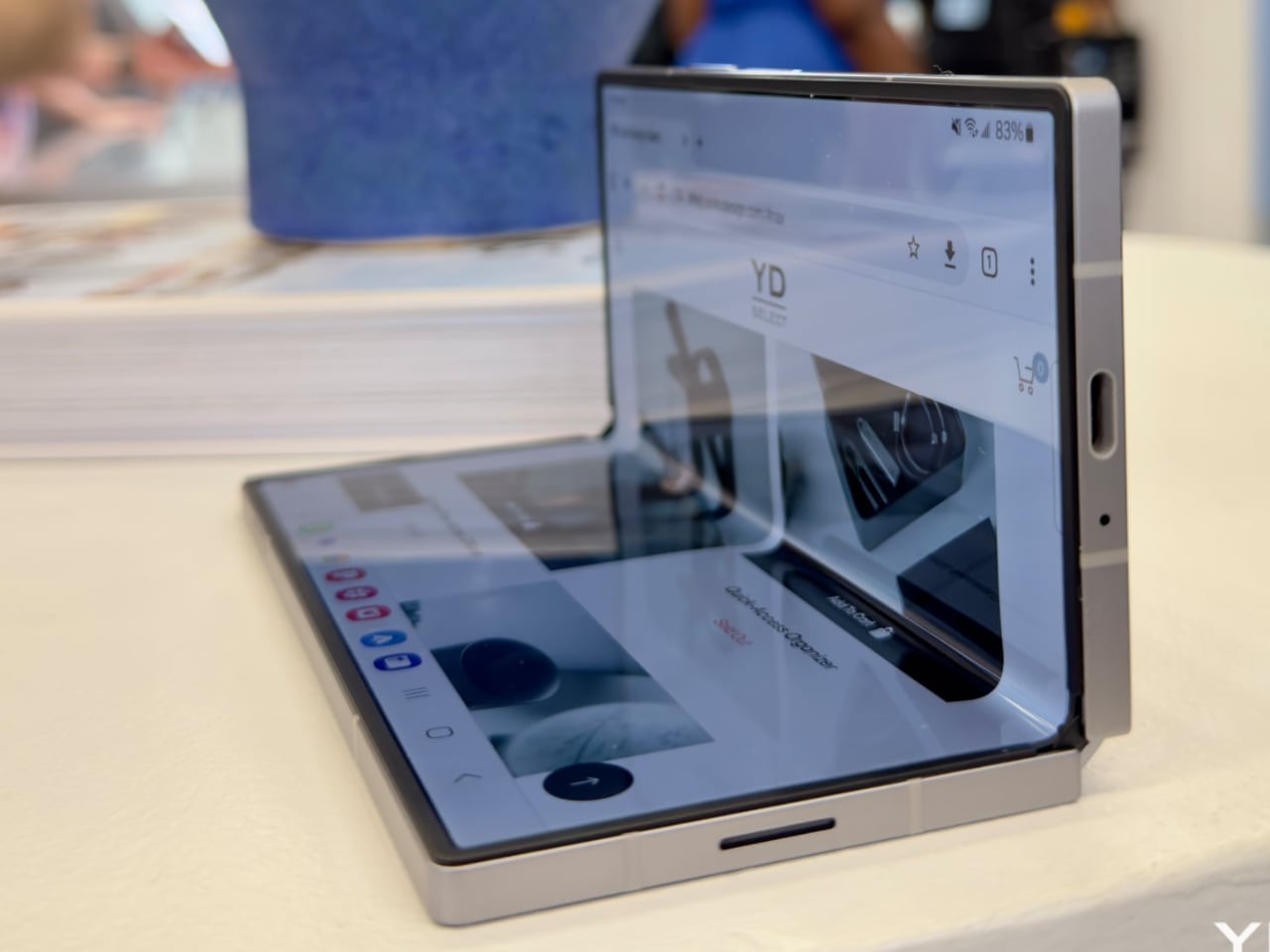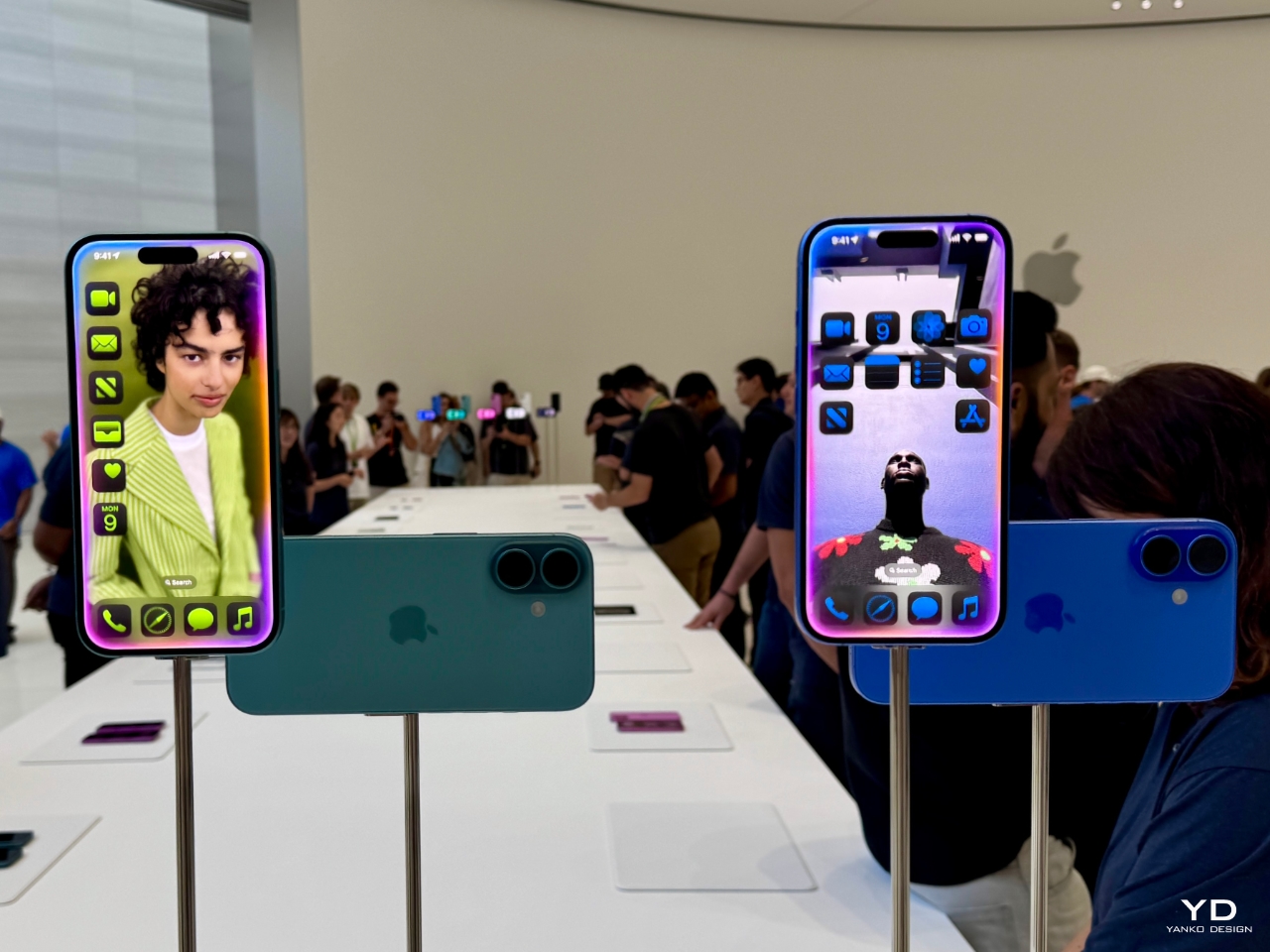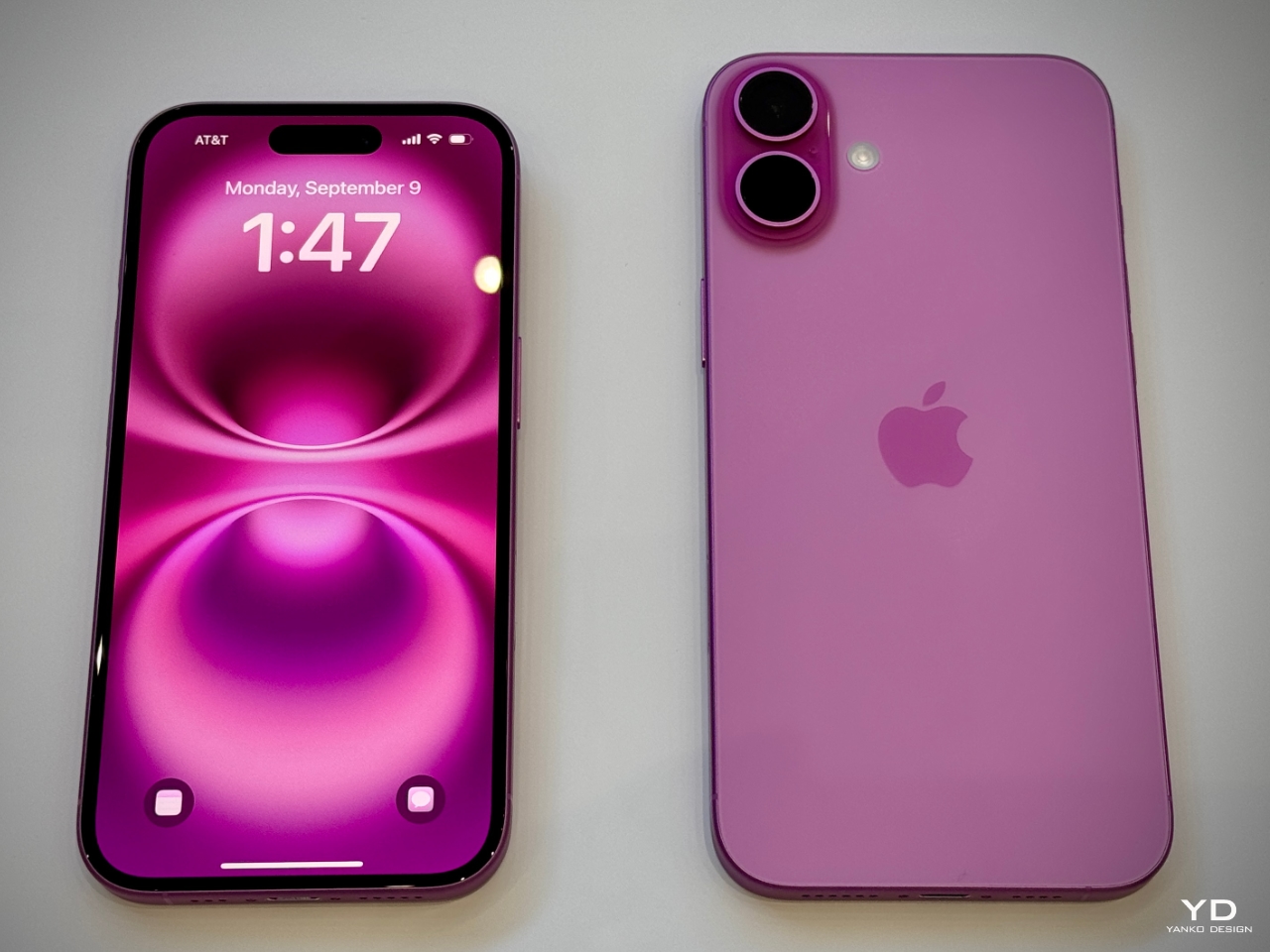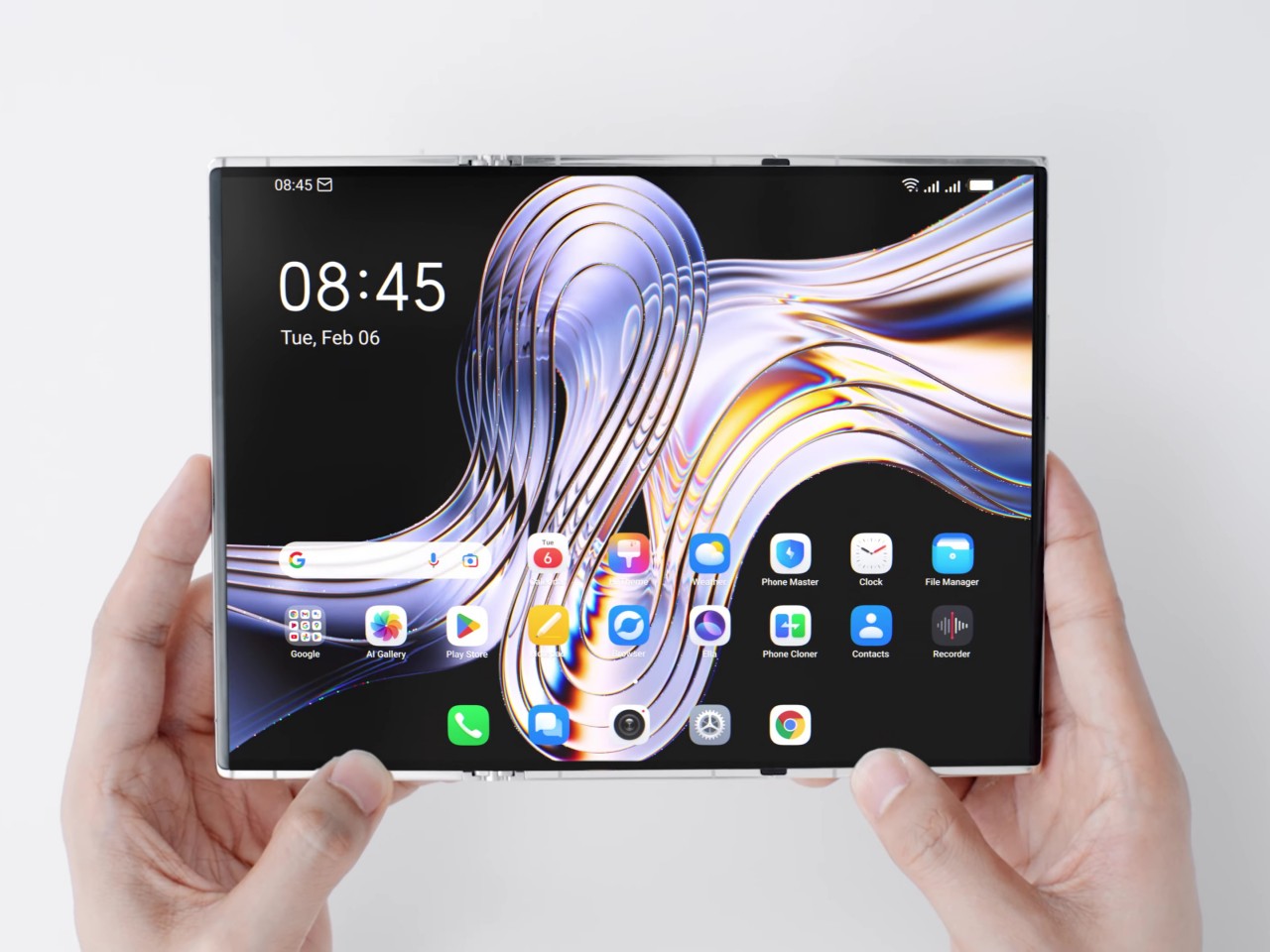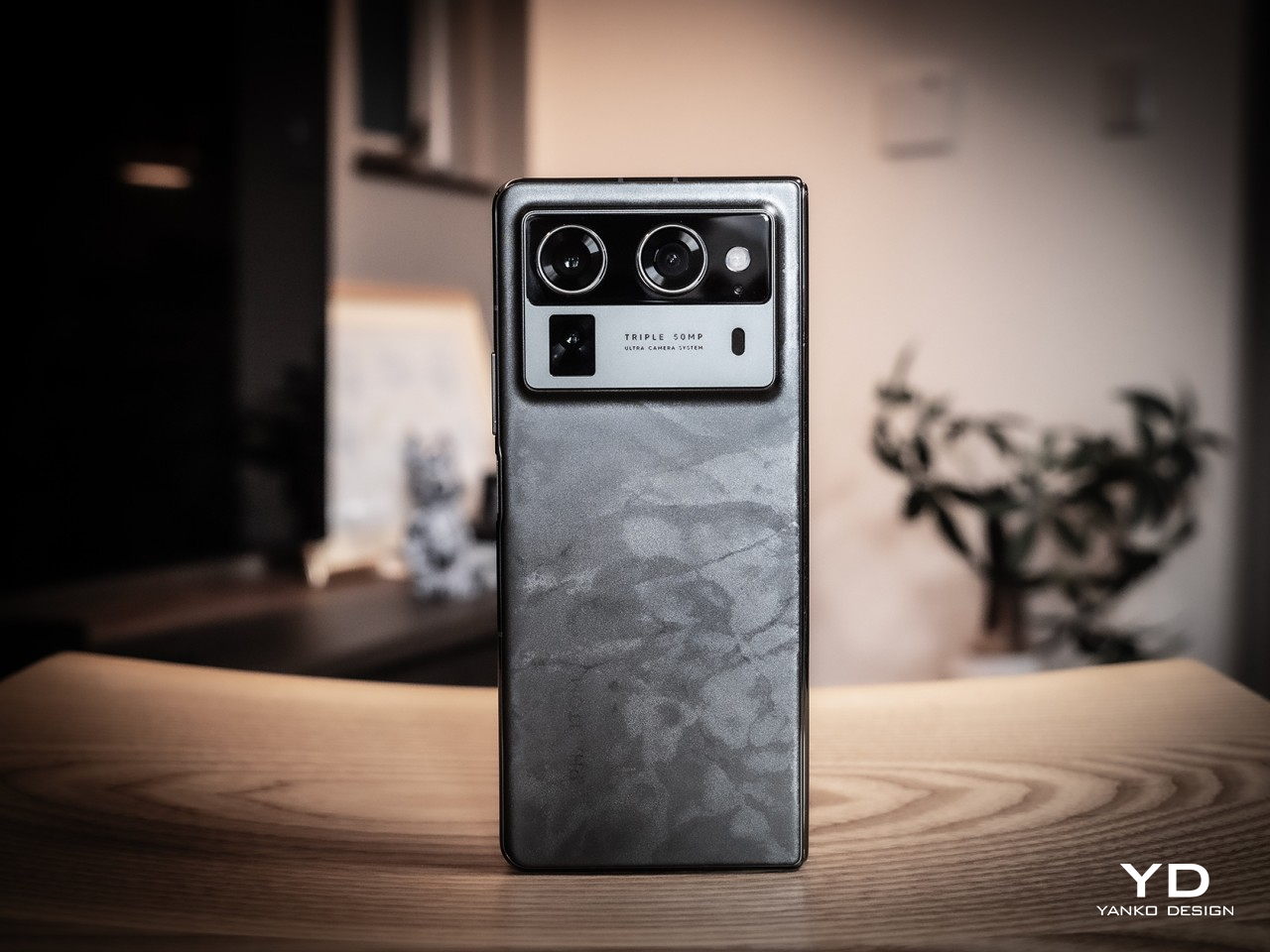
PROS:
- Gorgeous aesthetics and ergonomic design
- Supports pen input for precision and creativity
- Capable triple 50MP camera system
CONS:
- Benchmark performance is behind current flagships
- AI features need time to mature
RATINGS:
SUSTAINABILITY / REPAIRABILITY
EDITOR'S QUOTE:
Whether you’re looking for a productivity powerhouse or a device for creative expression, the TECNO Phantom V Fold2 5G is a standout choice in the foldable market, offering an excellent balance of cutting-edge technology, premium design, and sustainability-focused innovation.
TECNO’s Phantom V Fold2 5G sets itself apart in an increasingly competitive market for foldable smartphones by combining aesthetics, performance, and forward-thinking design choices. With its large foldable screen, durable build, and smart AI features, the Phantom V Fold2 5G feels like a step forward, combining form and function in ways that aim to enhance productivity and creativity.
Designer: TECNO + Loewe
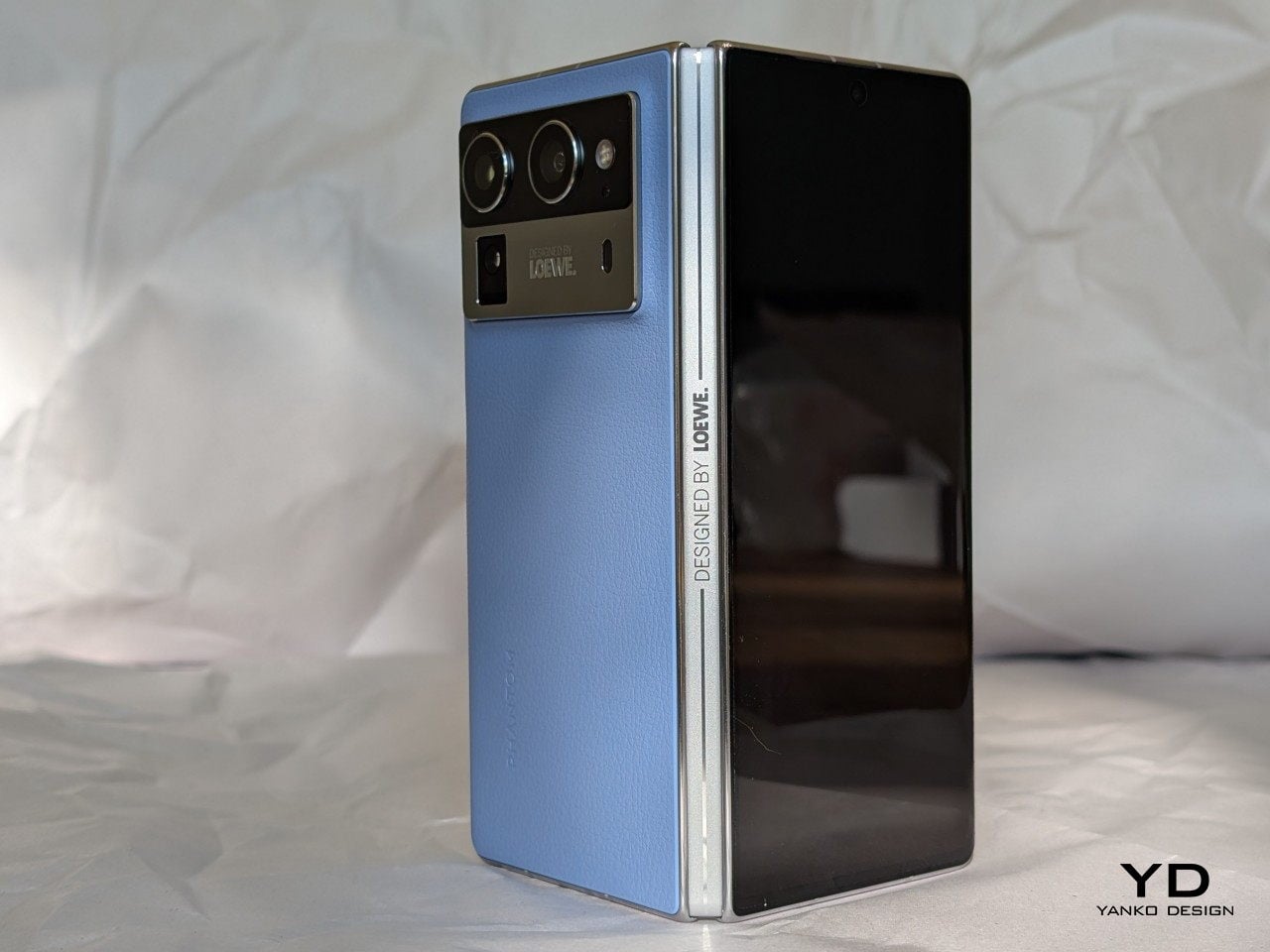
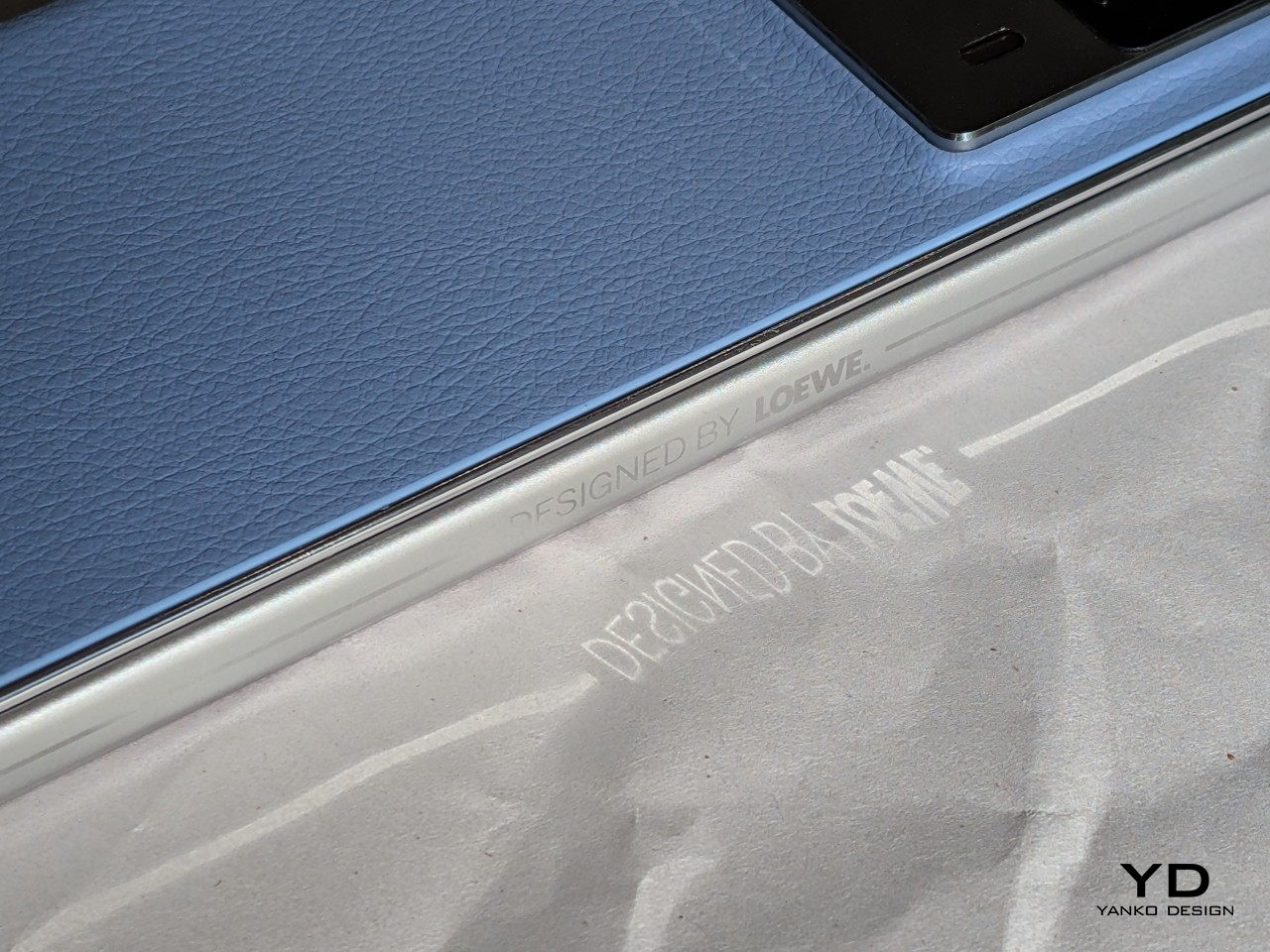
My review unit, the Loewe. edition, goes beyond being another foldable phone. It’s designed for those who appreciate cutting-edge tech, luxury, and sustainability. The collaboration between TECNO and the German brand Loewe has brought a new level of craftsmanship, blending eco-conscious design with high-end aesthetics. Let’s dive into every aspect of this phone to see whether it lives up to its expectations in form and function.
Aesthetics and Design
The TECNO Phantom V Fold2 5G design immediately catches attention, especially the Loewe Edition, which blends premium aesthetics with practical everyday use. The Rippling Blue and Karst Green editions bring their own luxury flavor. However, what’s impressive about the Phantom V Fold2 5G is how these design elements translate into a seamless user experience.
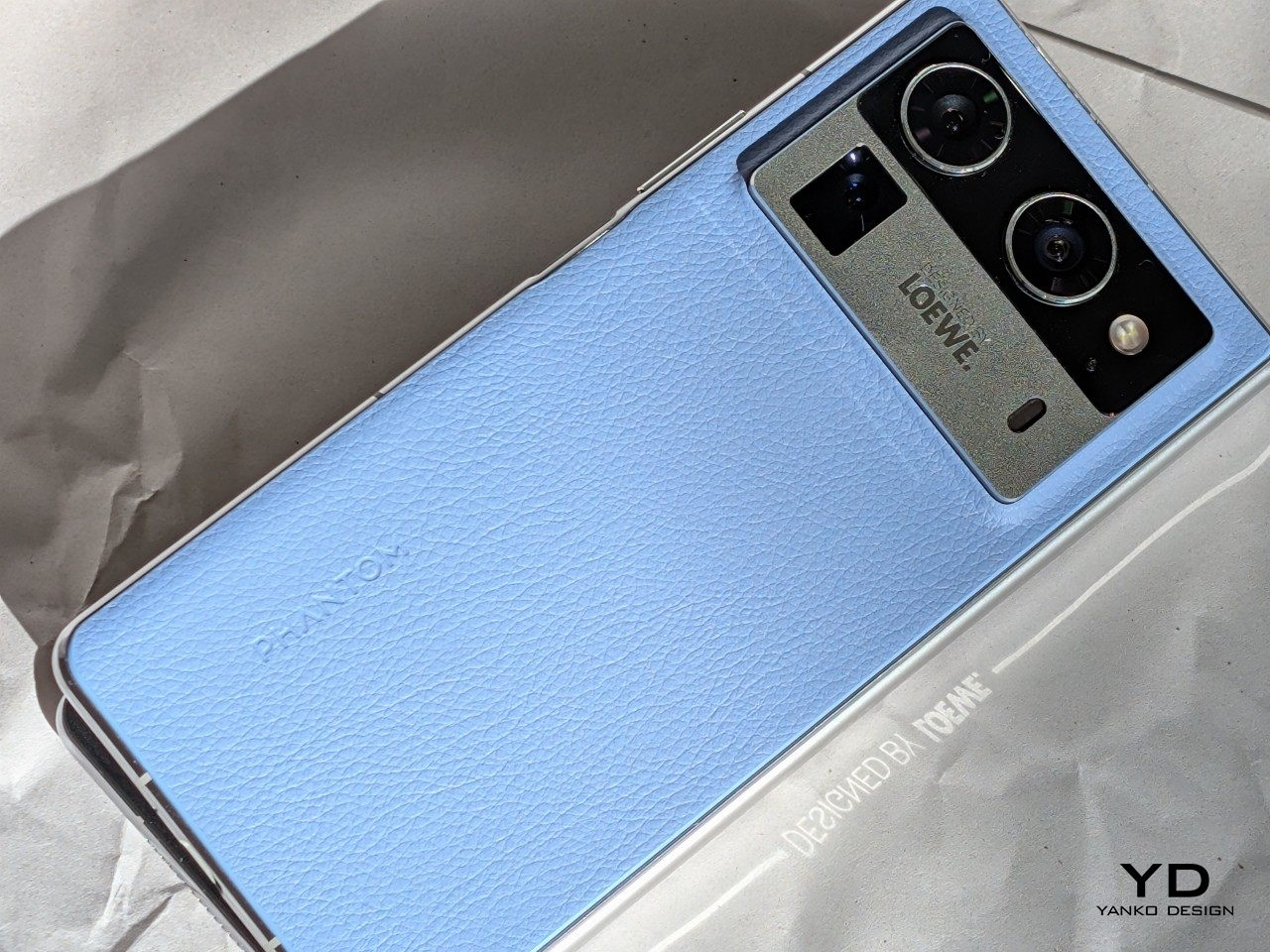
The Rippling Blue edition, crafted with eco-friendly leather, gives the phone a textured, high-end feel that looks great and makes the device more practical for daily use. The texture ensures a better grip, which is crucial when holding such a large device. I found that even during more extended periods of use, the grip felt secure, reducing the chance of the phone slipping from my hand. Its ability to resist dirt and fingerprints also makes a big difference; there’s no need to constantly wipe smudges off the back, keeping the phone as pristine as the day it came out of the box.
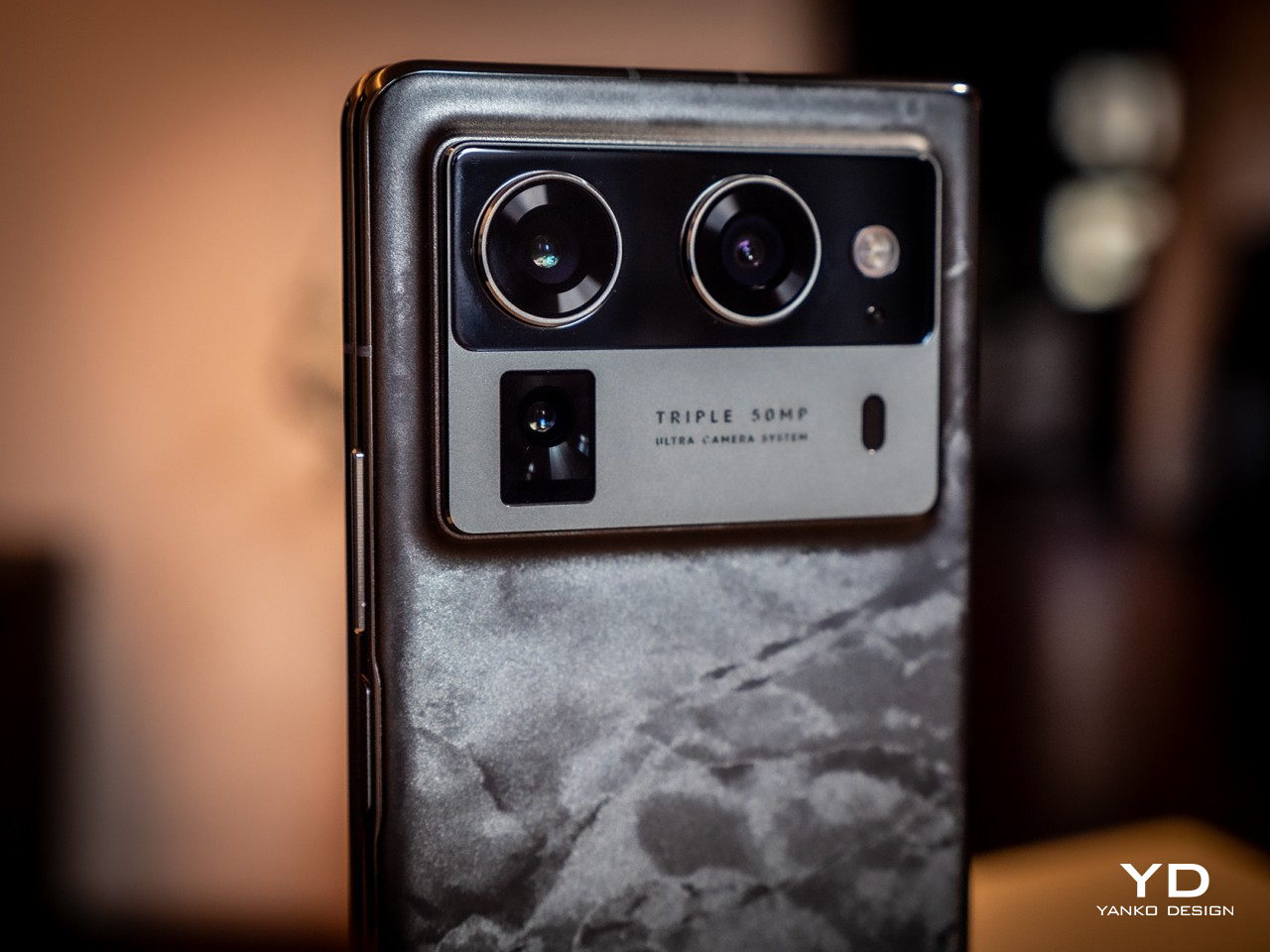
On the other hand, the Karst Green version features a marble-patterned fiberglass back, a significant upgrade in terms of durability. It feels notably lighter than a glass-backed foldable while maintaining a premium touch. This was particularly noticeable when using the phone throughout the day—taking it in and out of pockets, placing it on different surfaces, and handling it during daily tasks. The fiberglass material gives you confidence that the phone can handle the occasional bump or drop without adding unnecessary weight. Despite being 25% lighter than glass, the 100 times better drop resistance means you can carry it without worrying too much about accidental damage, which is always reassuring.
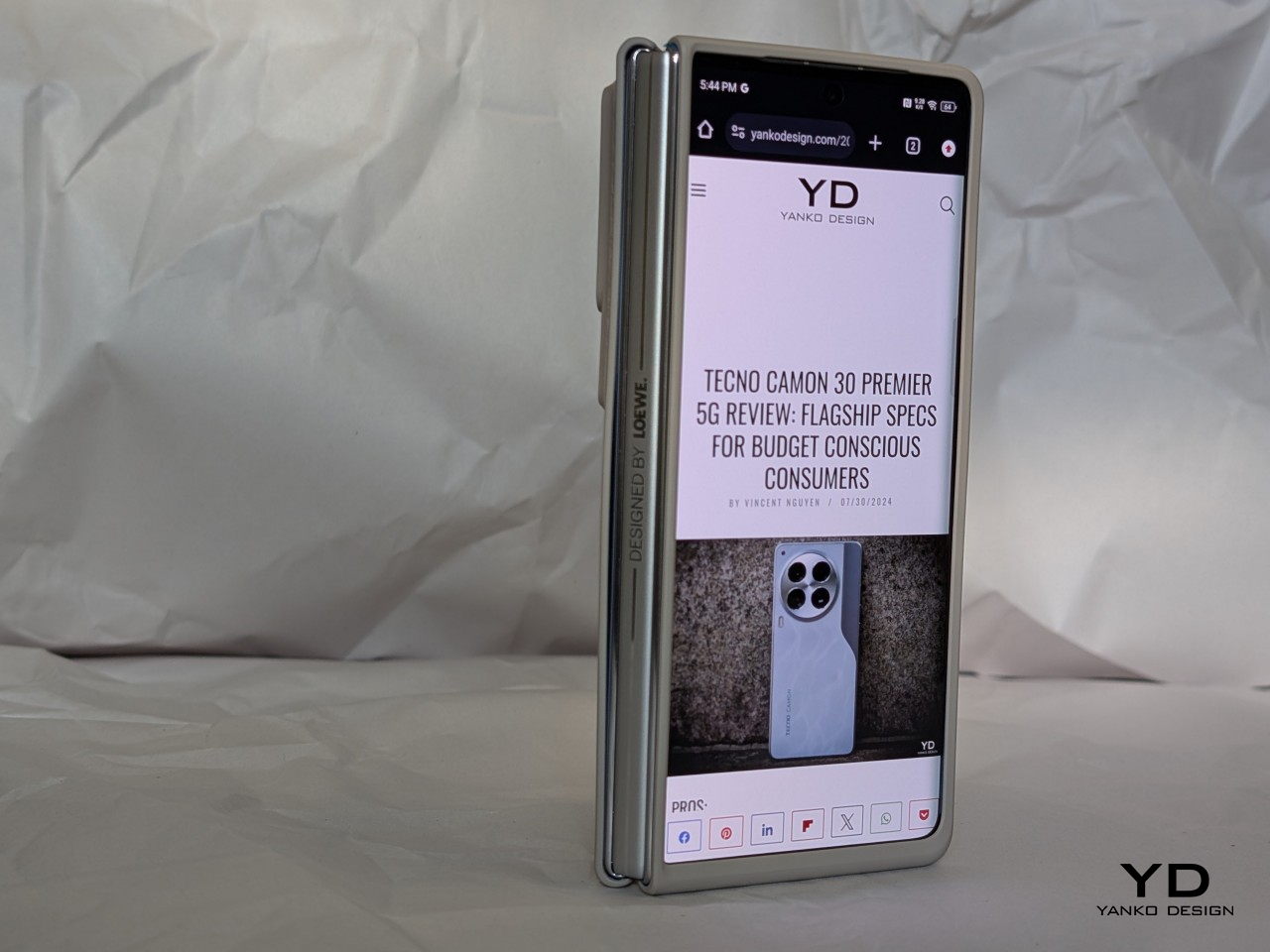
From a size and weight perspective, the Phantom V Fold2 5G balances portability and functionality. When folded, it’s compact enough to fit in most pockets and easy to hold in one hand for quick tasks, measuring 156.5 x 72.9 x 11.78 mm. I found the folded size ideal for checking notifications, scrolling through social media, or responding to texts. However, when unfolded, it transforms into something far more versatile. The device expands to 156.5 x 141.2 x 5.52 mm, offering a large, tablet-like display perfect for more immersive tasks like watching videos, editing documents, or gaming.
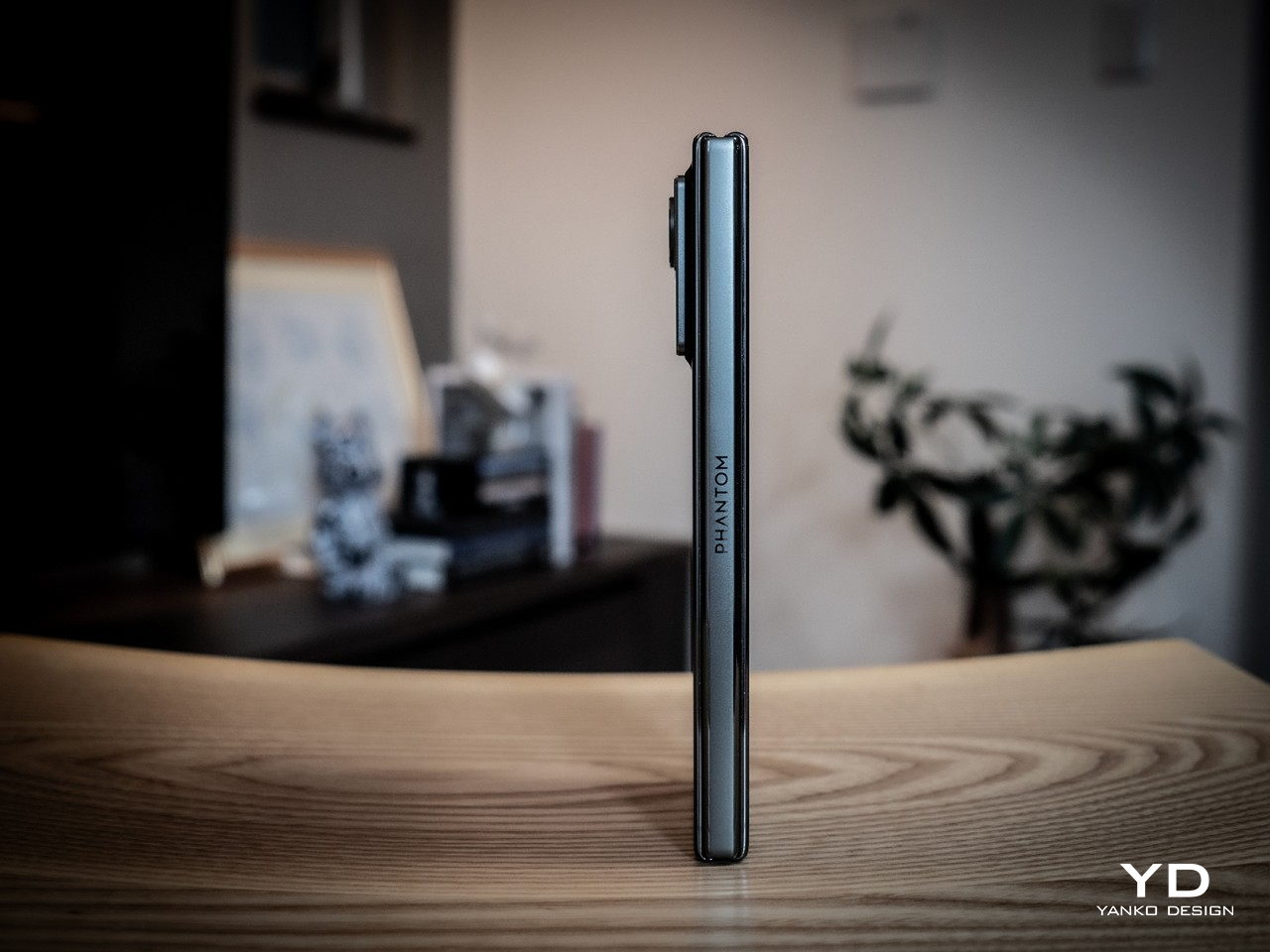
The 249g weight feels surprisingly light given its foldable form factor, and it’s well-balanced in hand. Whether folded or unfolded, I didn’t feel strain during longer use sessions, a common issue with heavier foldables. The weight is distributed evenly, so the phone doesn’t feel top-heavy or awkward in either configuration, making it easy to carry around throughout the day without discomfort.
One feature that enhances everyday use is the 3D micro-arc curved frame. The phone’s pebble-like shape feels smooth and natural in the hand, making it easy to grip. This design minimizes sharp edges, which helps make the device feel comfortable to hold, even for extended periods. The rounded edges are subtle, but they make a noticeable difference compared to a more squared-off foldable that can dig into your hand after a while.
The aerospace-grade droplet-shaped hinge is another standout feature. You’ll first notice how smoothly the phone opens and closes. There’s no stiff or awkward resistance—it’s a fluid motion that feels precise and well-engineered. This hinge supports 400,000 folds, which means it’s built to last. After repeated use, I didn’t notice any significant wear or creaking, which is reassuring for a device that literally hinges on this kind of mechanism. The crease in the middle of the screen is minimized to 0.1mm, making it barely noticeable during use. Whether watching videos, reading, or working on documents, the crease fades into the background, and you quickly forget it’s even there.
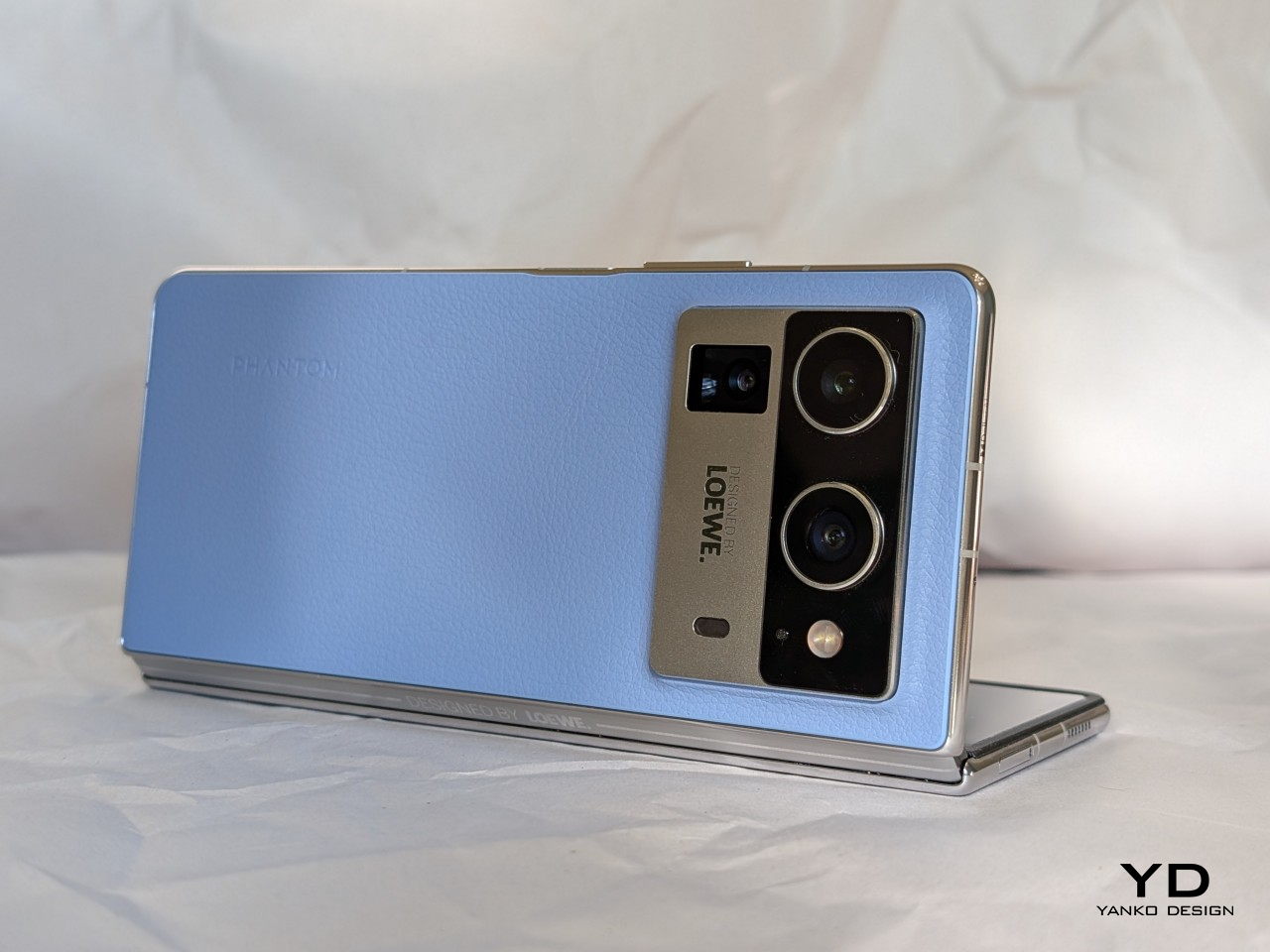
Another practical feature is the hinge’s ability to hover at angles between 30° and 120°, which turns the phone into a hands-free device. This comes in handy for video calls, streaming, or even following recipes without needing to prop the phone up awkwardly. It’s easy to adjust the phone to your preferred angle and stays securely in place without slipping.
For those concerned about everyday wear and tear, the IP54 rating provides peace of mind. While it won’t survive being submerged in water, the rating means it can handle splashes and dust exposure without issue. This is helpful if you’re using the phone outdoors or near water, as you don’t have to be as cautious as you would with a non-rated device. The outer display is also protected by Corning Gorilla Glass Victus, which helps with scratch resistance and adds durability. Throughout my usage, I didn’t notice any significant scuffs or marks on the outer display, even after sliding it in and out of pockets and placing it on various surfaces.
Ergonomics
Despite its large size when unfolded, TECNO has ensured that the Phantom V Fold2 5G remains comfortable and easy to handle. The device’s weight is well-balanced, and the marble-patterned fiberglass material offers excellent grip without feeling slippery. The foldable design adds another layer of ergonomics, as the phone can be propped up at different angles for hands-free use. This is perfect for video calls, watching movies, or using split-screen apps without holding the device.
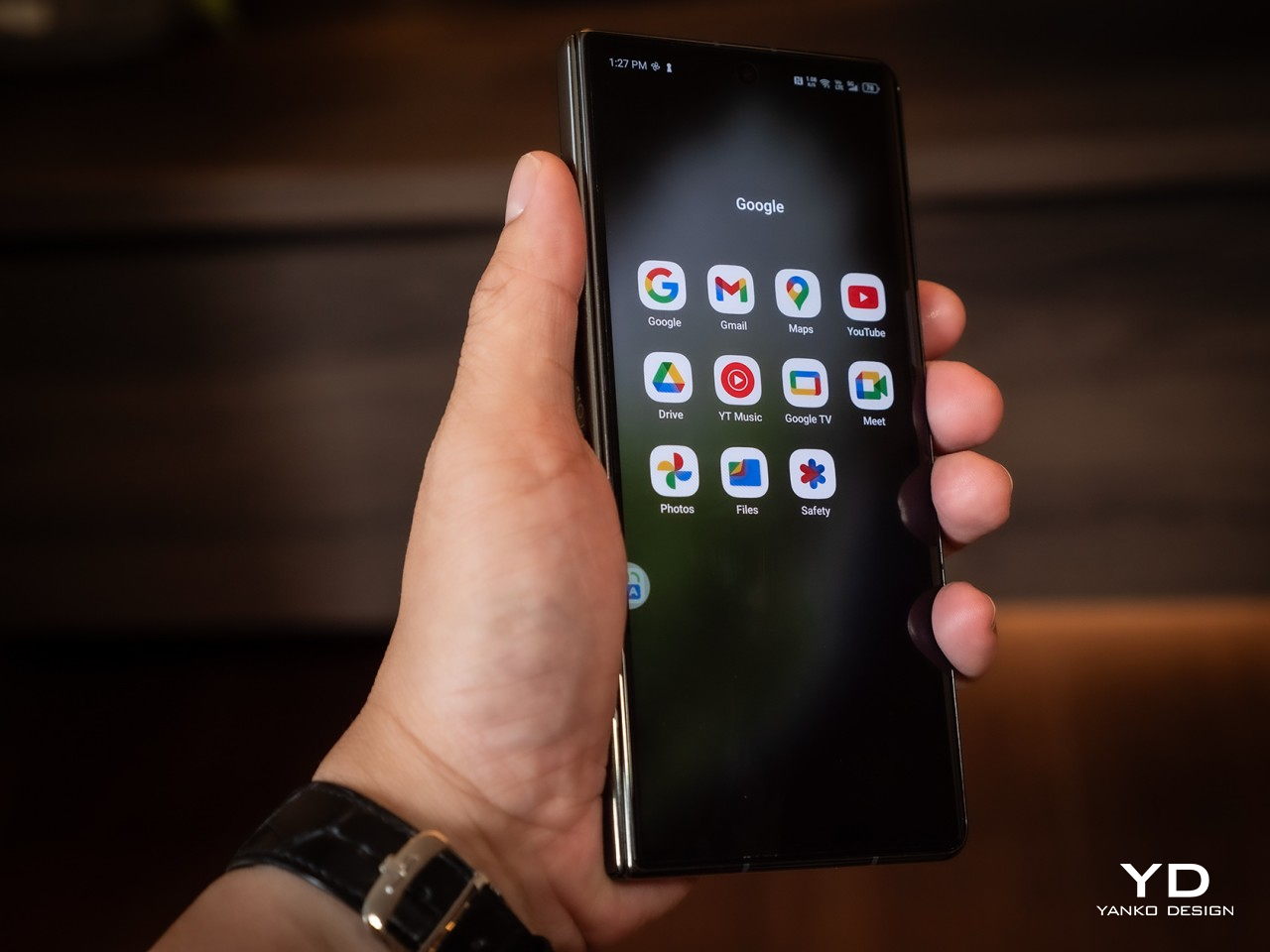
The side-mounted fingerprint sensor is intuitively placed for easy access, and it works seamlessly, unlocking the phone quickly with just a touch. The volume buttons are also conveniently positioned, though users with smaller hands might find them slightly out of reach during one-handed use. The overall button placement and design make the phone comfortable for prolonged use.
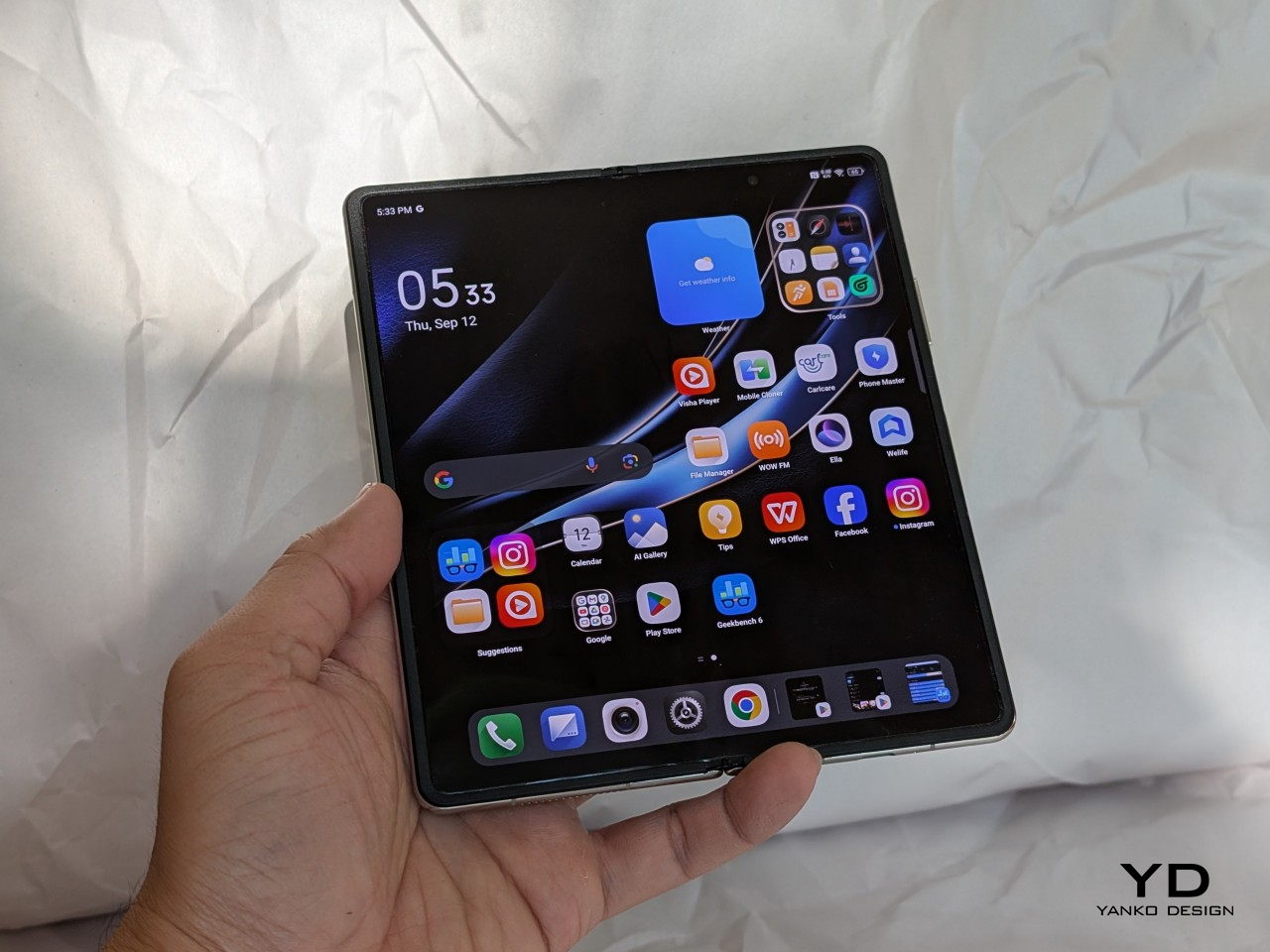
Phantom V Pen Integration
Phantom V Pen: Productivity and Precision
The Phantom V Pen significantly enhances the TECNO Phantom V Fold2 5G, turning it into a versatile tool for both productivity and creativity. Weighing just 10g, the pen is light and comfortable to use for extended periods, whether you’re jotting down notes, sketching, or annotating documents. Its integration with the foldable display is seamless, making tasks like handwriting recognition and calculations quick and efficient.
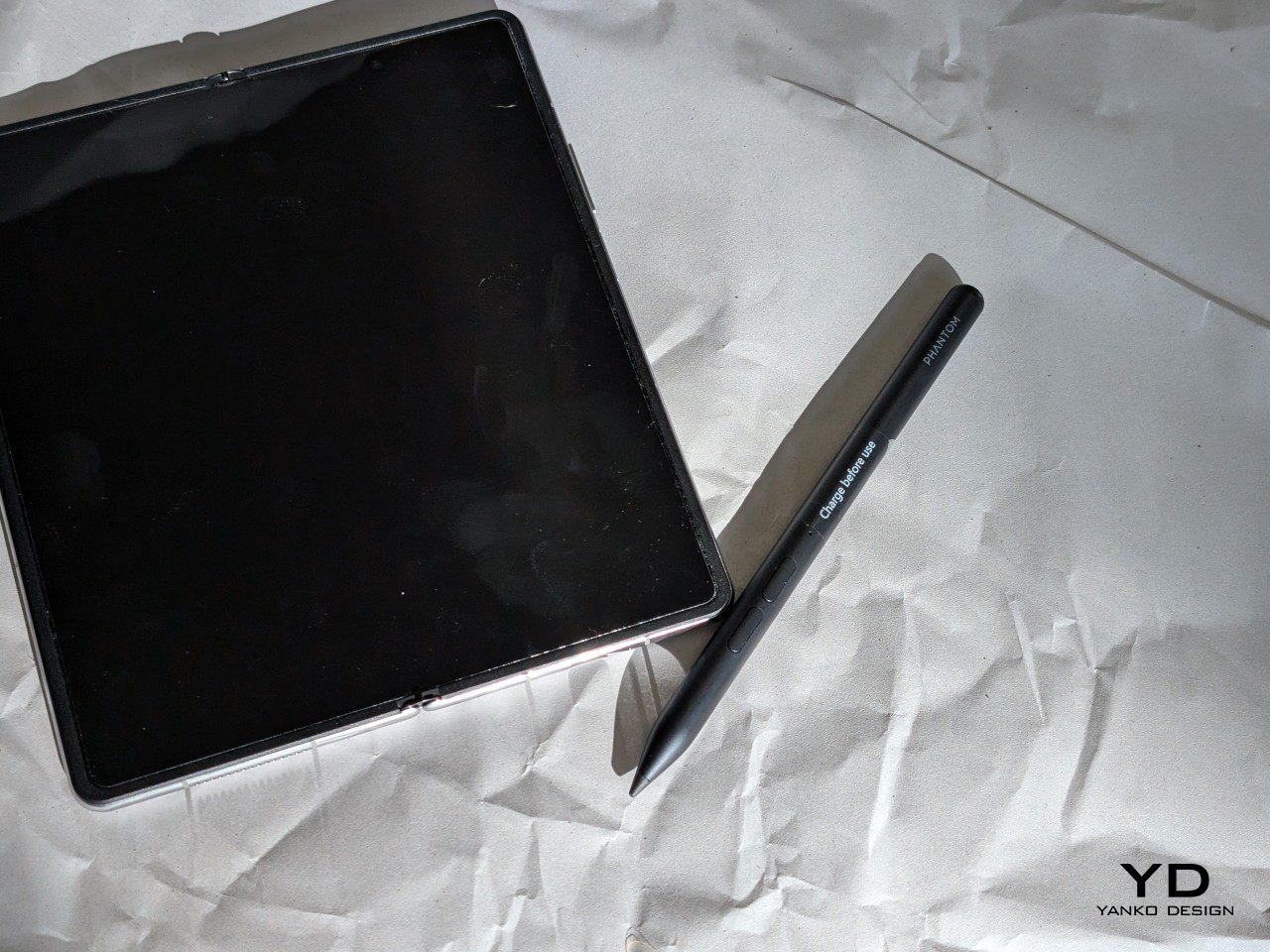
One of the pen’s standout features is its remote control functionality, which adds an extra layer of versatility. With its two buttons, you can control presentations, media playback, and even take photos—making it particularly useful for business users or those on the go. The remote functionality is especially handy during meetings or when navigating through slides without needing to touch the device.
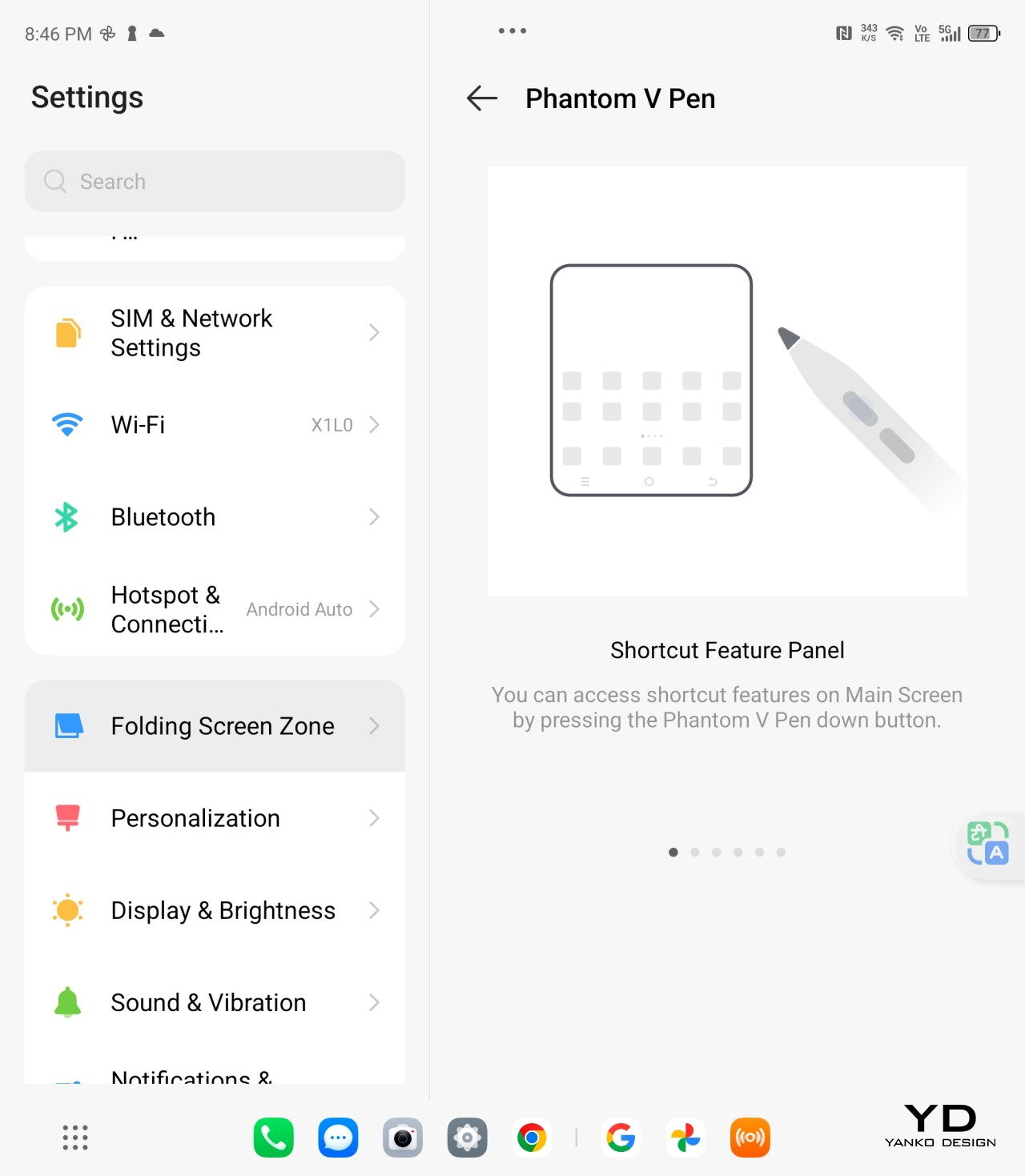
The pen’s precision is supported by its super-resolution algorithm, ensuring a smooth and responsive experience, whether you’re sketching on the 7.85-inch inner screen or making detailed annotations. Creatives will find the pen particularly useful for more intricate work, where accuracy and control are paramount.
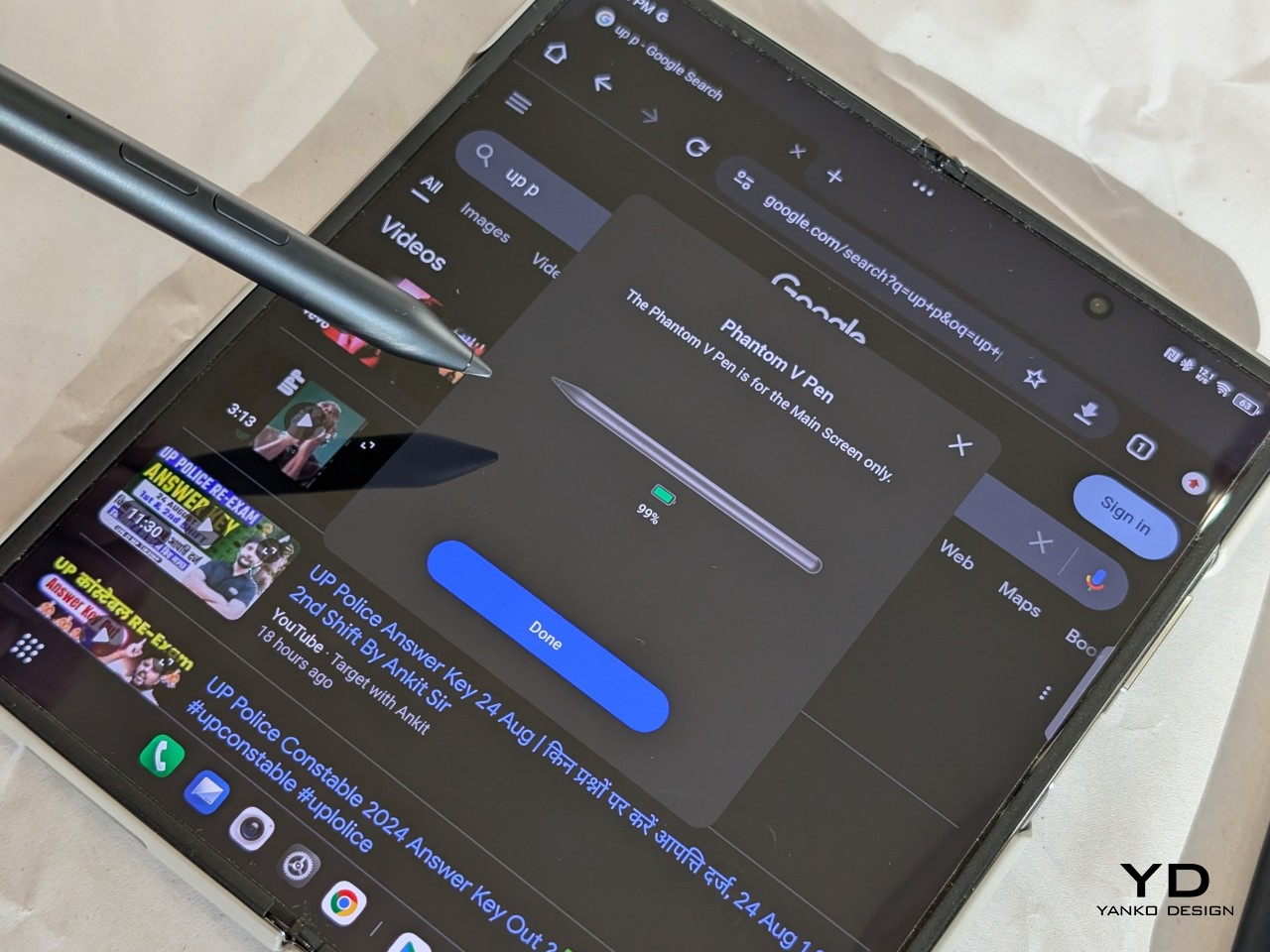
With up to 14 days of battery life on a single charge, the Phantom V Pen is a reliable tool that doesn’t require constant charging, which is ideal for professionals who need it throughout the day. Its range of features extends the overall functionality of the Phantom V Fold2 5G, making it a valuable addition for those who want to get the most out of their foldable device.
Performance
From the moment you start using the Phantom V Fold2 5G, it’s clear that performance is one of its strengths. Powered by the MediaTek Dimensity 9000+ chipset, this phone doesn’t break a sweat, and it handles just about anything you throw at it. Whether it’s casual multitasking, switching between apps, or diving into high-end gaming, the phone remains snappy and responsive. With 12GB of RAM and up to 512GB of storage, you’ve got more than enough room and power to handle everything from daily tasks to more demanding workloads.
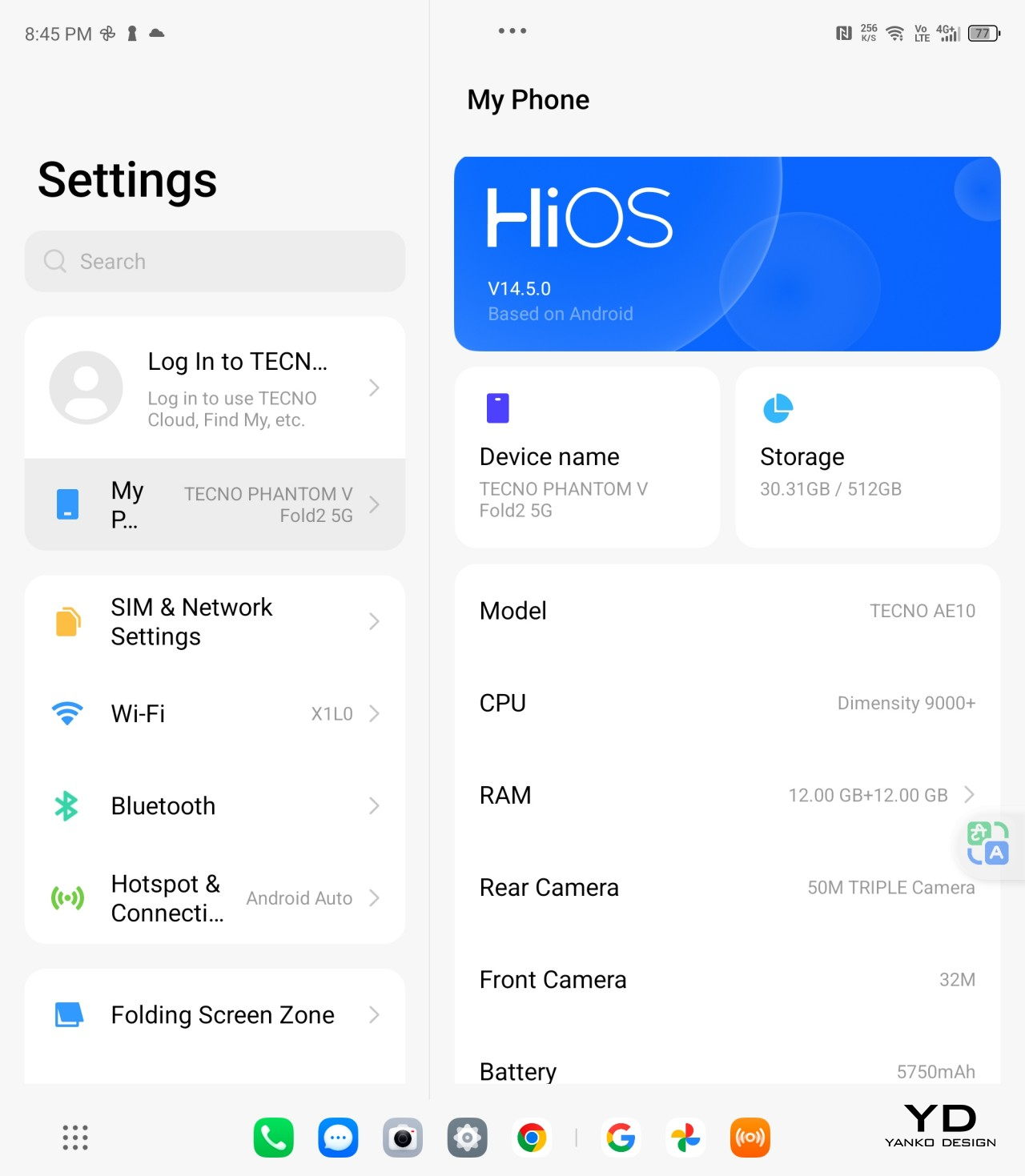
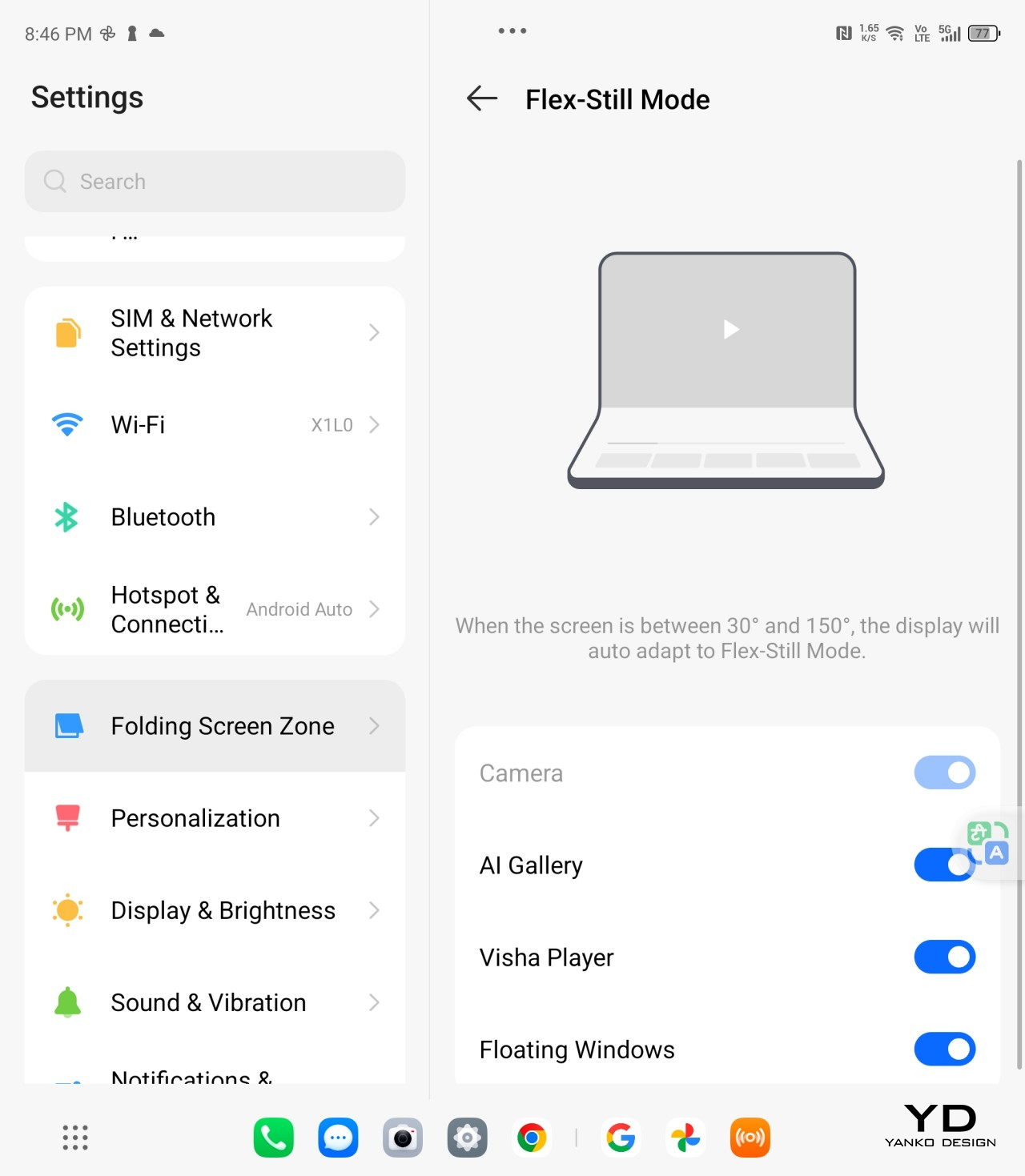
The experience is elevated by two AMOLED screens offering 120Hz refresh rates. The 6.42-inch outer screen is perfect for those quick, one-handed tasks, while the 7.85-inch foldable inner screen is where the magic happens. The colors are vibrant, the blacks are deep, and everything looks crisp and smooth, whether you’re watching a video or working on multiple apps simultaneously. The larger display is a treat for multitasking—you can open two apps side by side without feeling cramped.
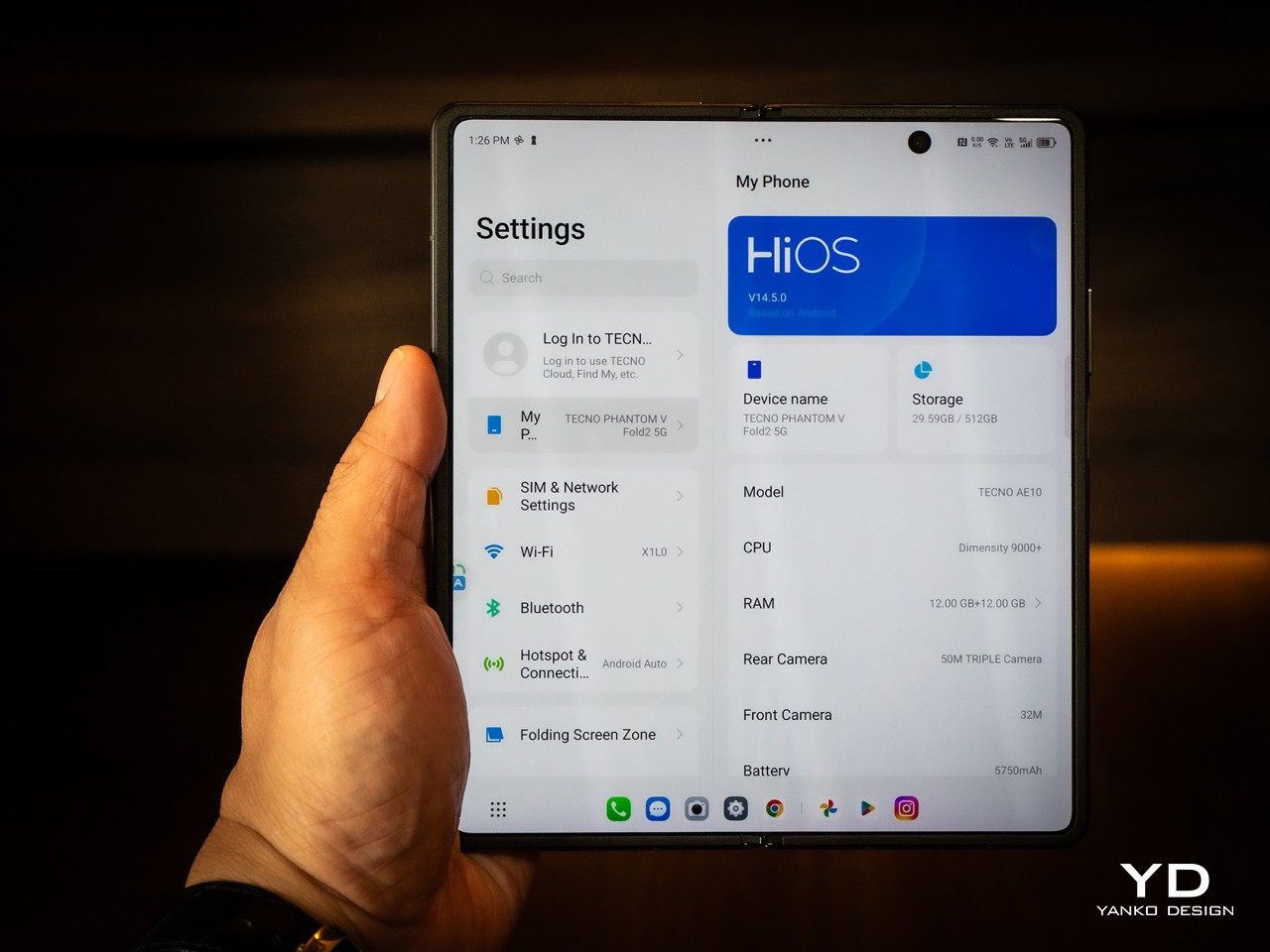
AI-Powered Features
The Phantom V Fold2 5G stands out because TECNO’s AI Suite is seamlessly integrated into the phone. It’s a productivity booster in every sense. The Ella AI Assistant is like having a personal assistant on call, whether you’re pulling up search results or managing tasks across the phone. It’s surprisingly smart and smooth, handling over 400 system functions—from switching wallpapers to optimizing your settings in real-time.
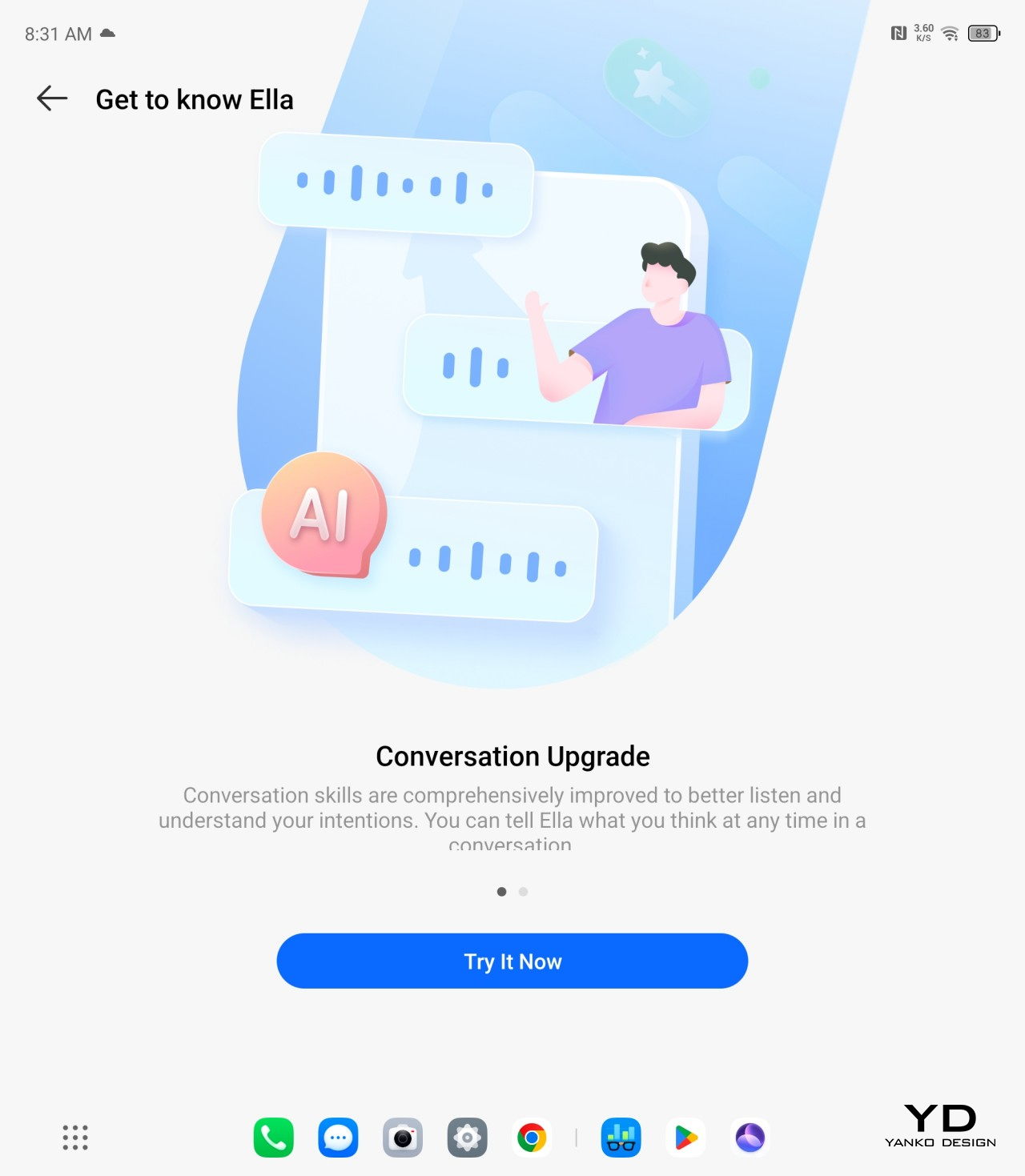
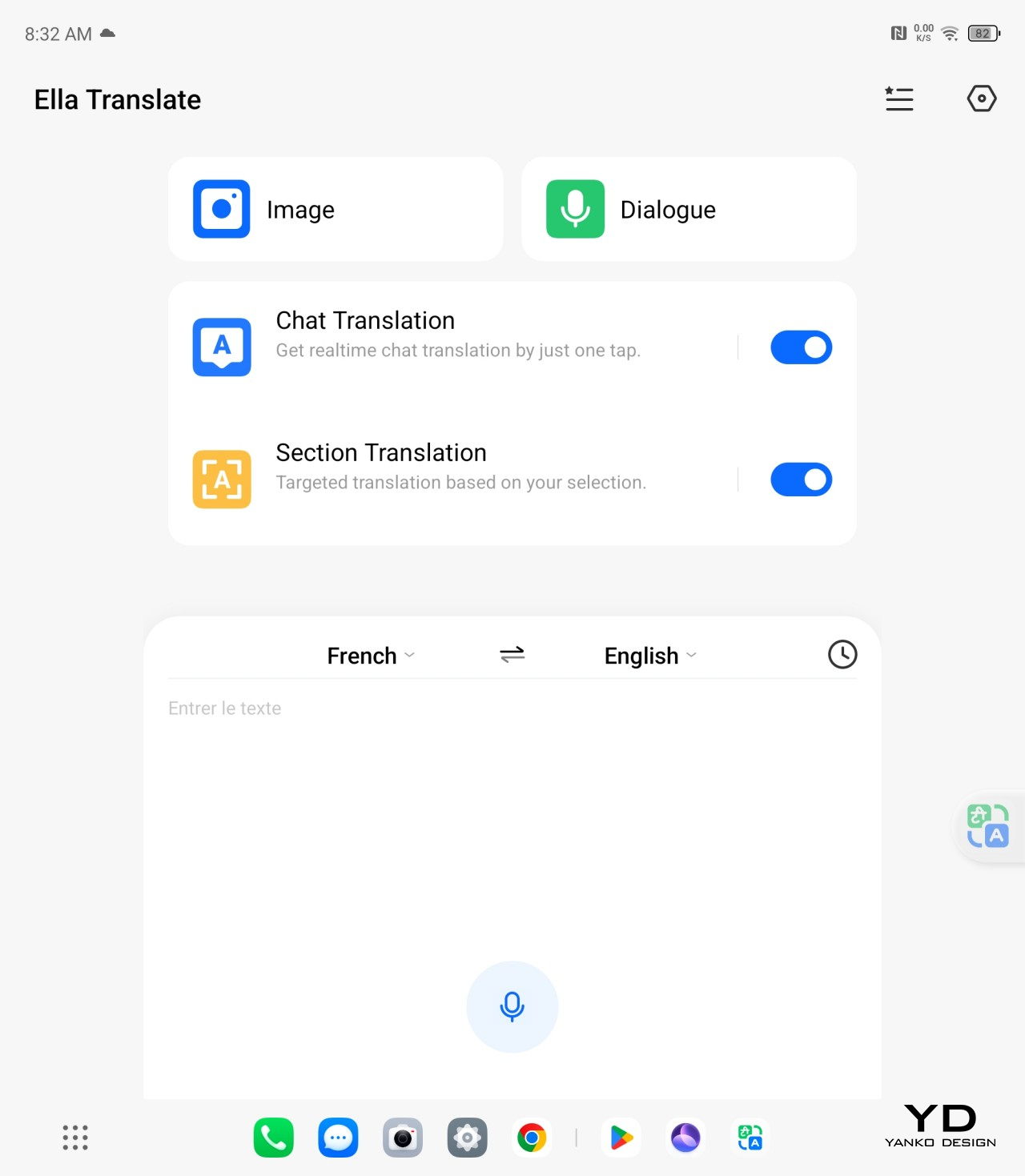
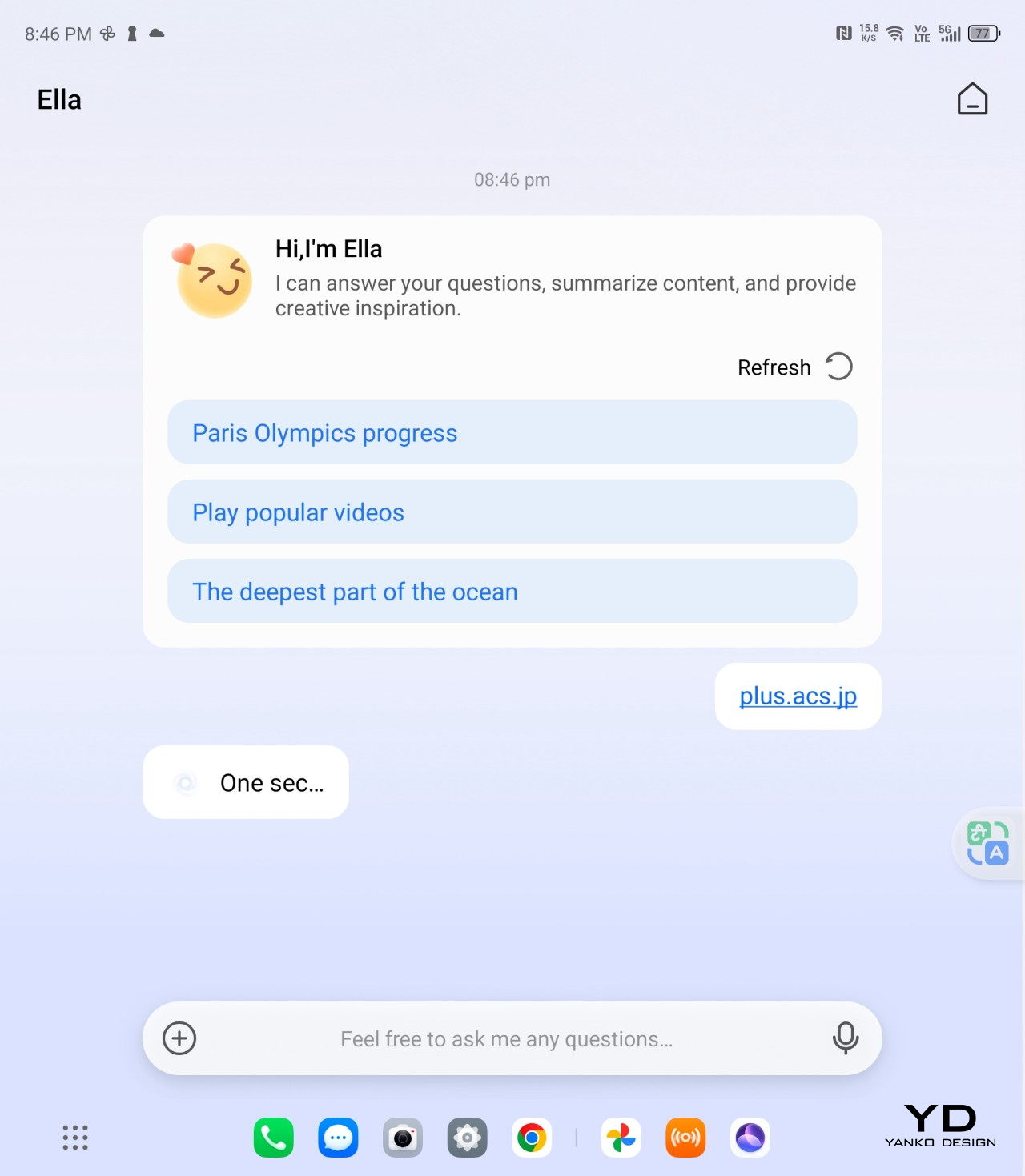
For those who often juggle between documents and need quick summaries, AI Summary instantly pulls essential details from PDFs or websites. This feature alone saves a ton of time. AI Translation works wonders for voice calls and face-to-face conversations, especially with multiple languages. And for the content creators, AI Artboard and AI Wallpaper are there to help. AI Artboard turns your quick sketches into legit artwork, while AI Wallpaper allows you to create unique backgrounds based on a few simple words.
Gaming and Everyday Use
For gamers, the Phantom V Fold2 5G delivers a solid experience. The MediaTek Dimensity 9000+ and high touch sampling rate make gaming buttery smooth, even with graphic-heavy titles. The 360Hz touch sampling rate ensures responsive controls, which makes a difference in fast-paced games. Whether running apps, browsing, or playing high-end games, the device stays cool and doesn’t lag. The 2K+ resolution on the larger display adds an extra layer of immersion when gaming, making the visuals pop.
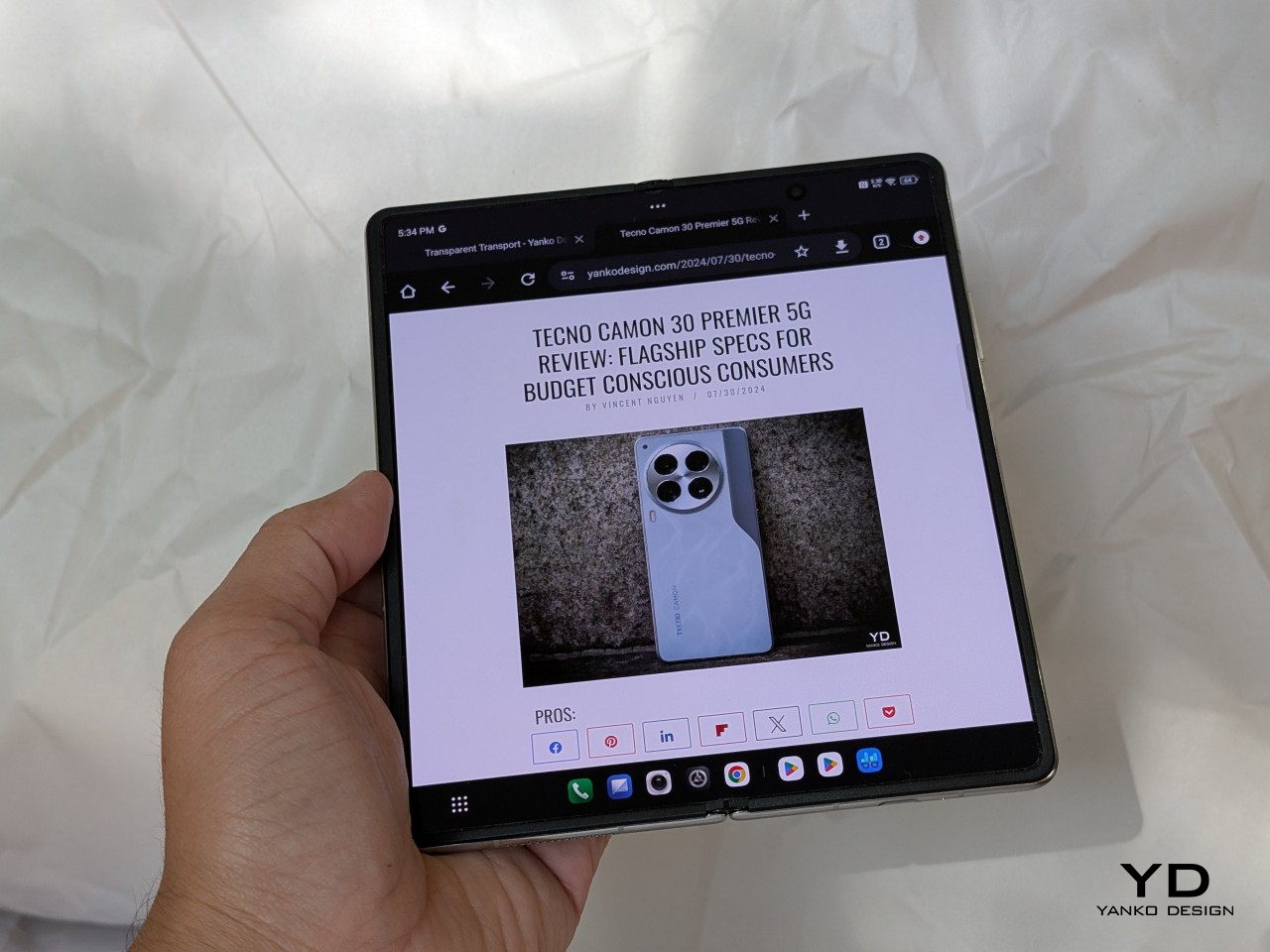
Even during regular use, the performance holds up without a hitch. Apps open quickly, there’s no noticeable stutter, and the multitasking experience with the FreeForm feature is seamless. Multiple apps can run side by side without any lag, making the most out of that larger screen. It’s a breeze whether you’re responding to emails, watching videos, or switching between tasks.
Battery Life and Charging
Now, regarding battery life, the 5750mAh Aircell battery is one of the reasons why this device works so well for power users. It can last all day, even with heavy use, like video streaming or social media browsing. TECNO claims up to 9.22 hours of continuous TikTok use and over 19 hours of Facebook scrolling, and based on my experience, those numbers hold up.
The 70W Ultra Charge gets you from 0 to 50% in just 20 minutes. That’s a huge time-saver when you’re in a rush. And if you prefer wireless charging, the 15W wireless charging option is handy, making it easier to top up without cables.
Camera Performance
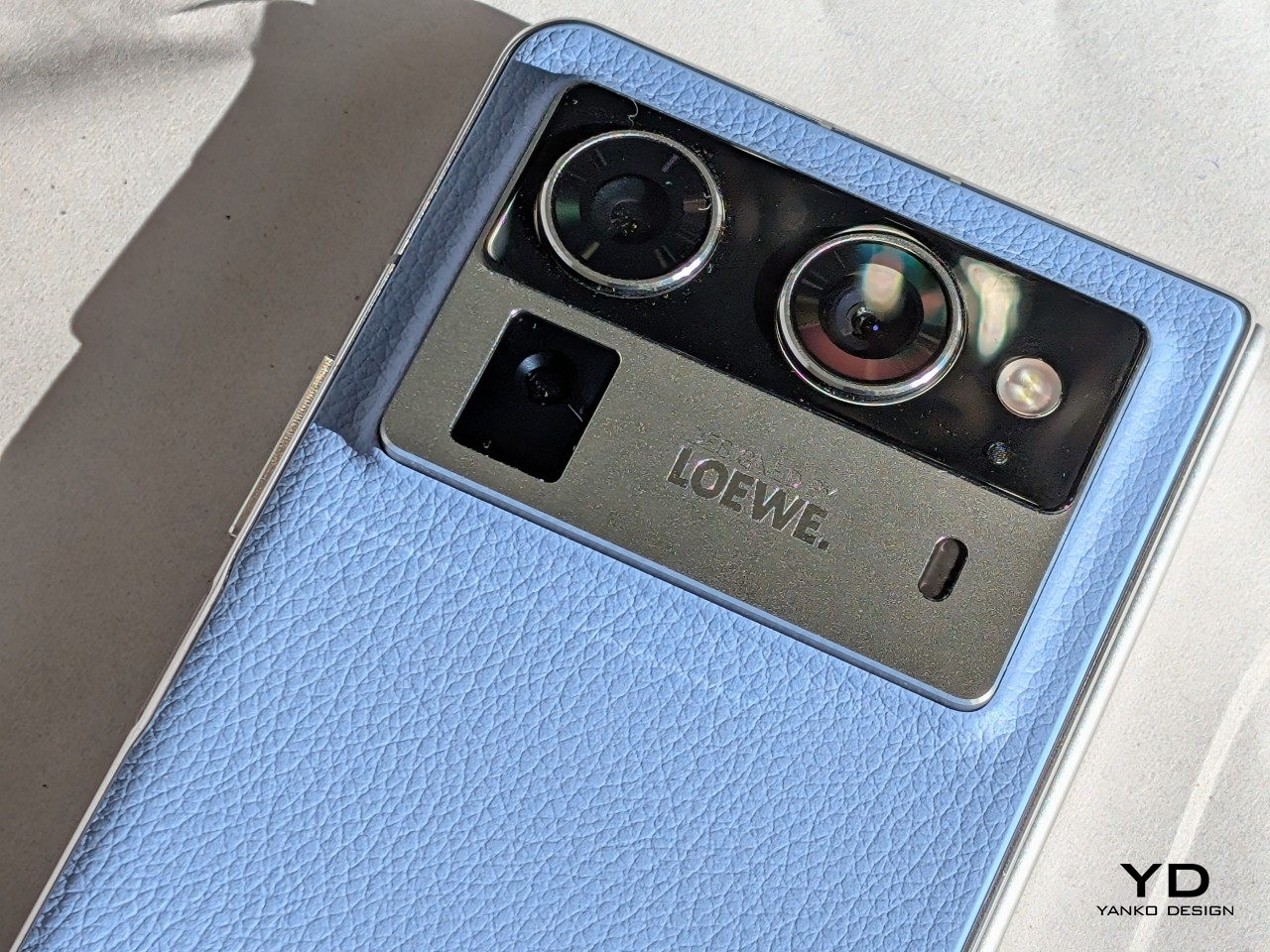
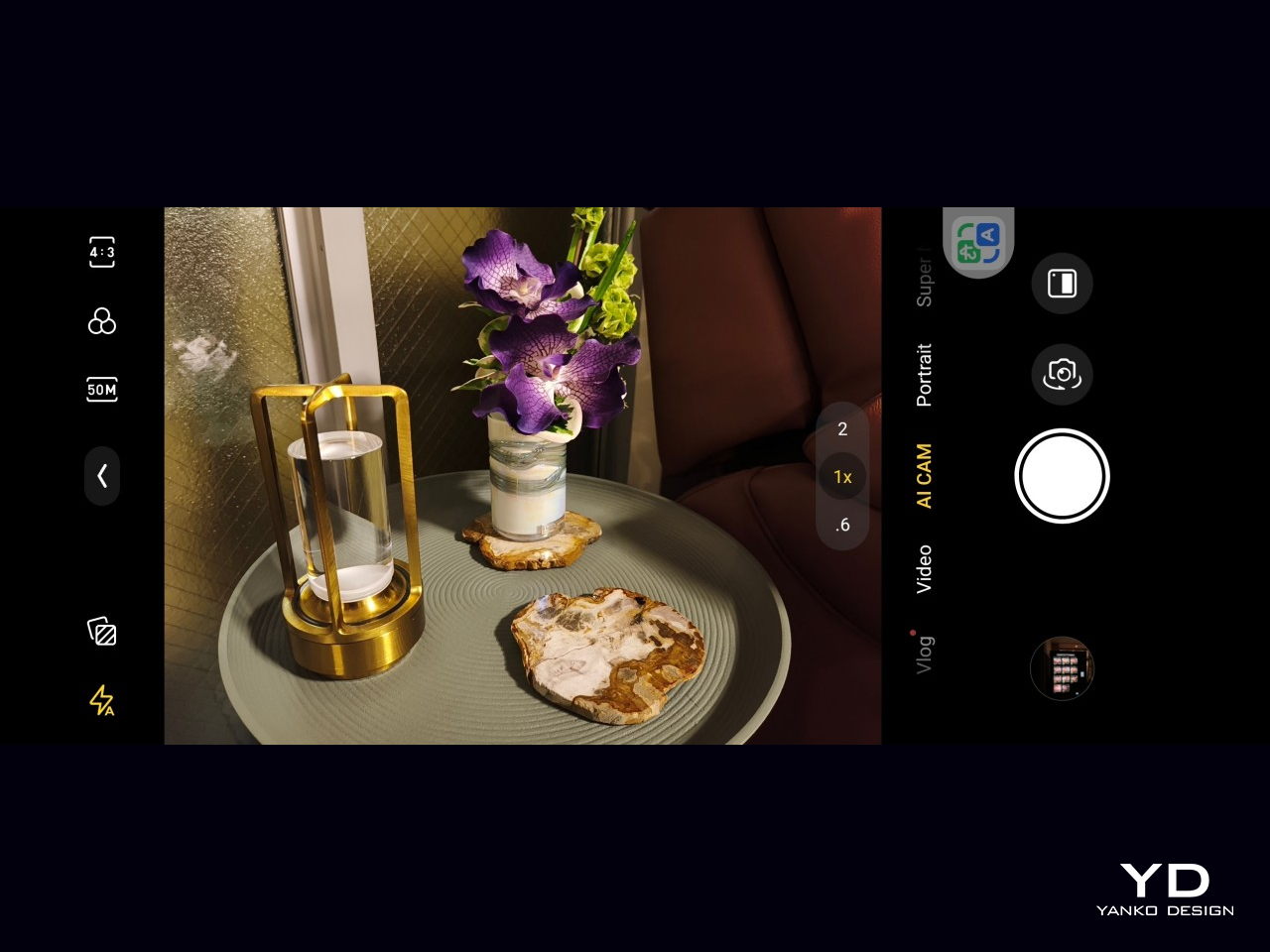
TECNO has packed the Phantom V Fold2 5G with a robust camera system that includes five lenses, offering a versatile photography experience. The triple 50MP camera setup is a highlight, providing professional-grade photos in various settings. The primary 50MP lens features a large 1/1.3” sensor, which excels in low-light environments. Combining the large sensor and TECNO’s AI-powered Universal Tone technology ensures photos come out clear, vibrant, and accurately toned, regardless of the lighting.
The portrait camera, another 50MP lens, has 2x optical and 20x digital zoom. This lens is ideal for capturing professional-grade portraits with crisp details and a natural-looking depth of field. Portrait mode performs exceptionally well, with accurate subject detection and a pleasing bokeh effect.
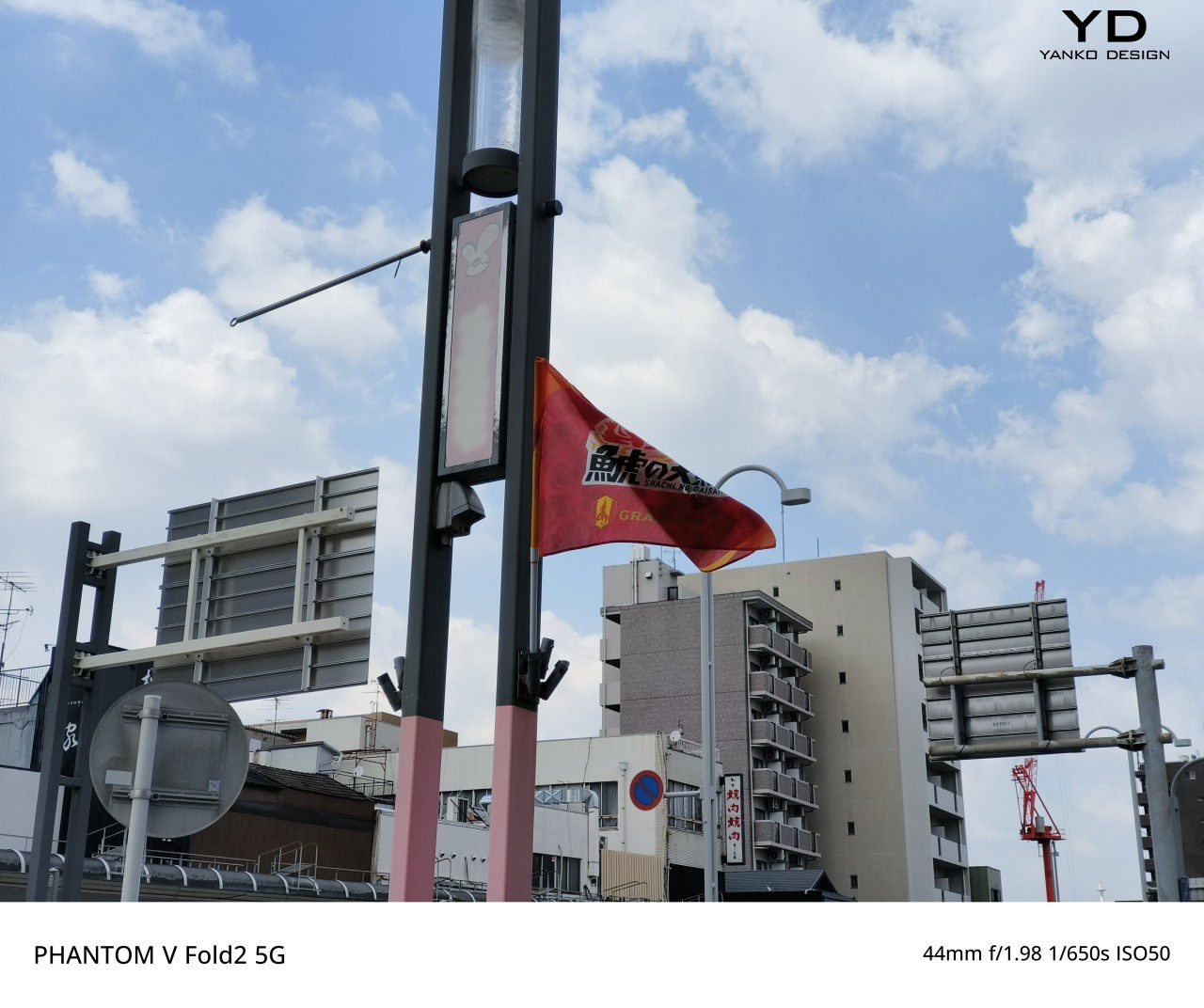
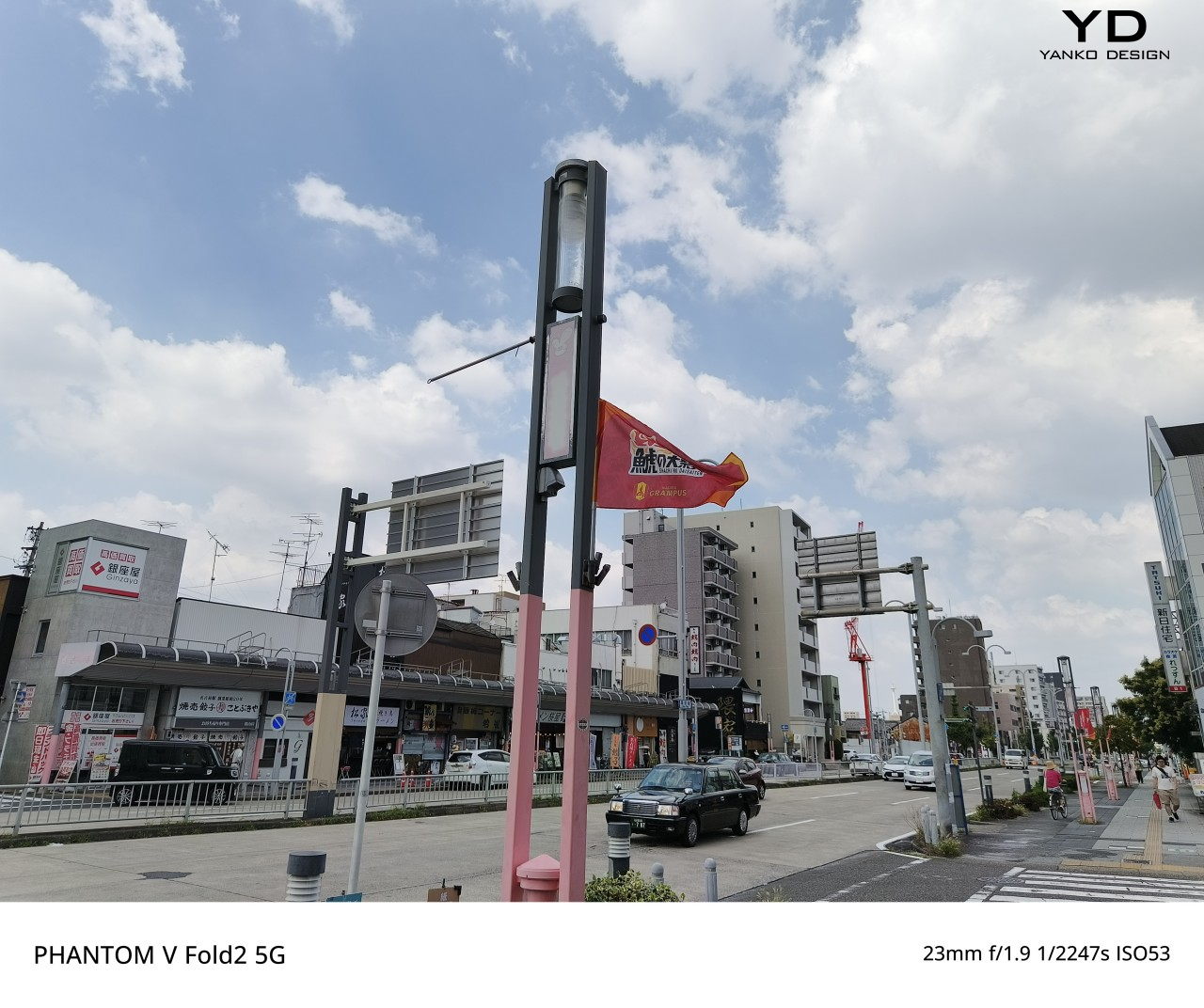
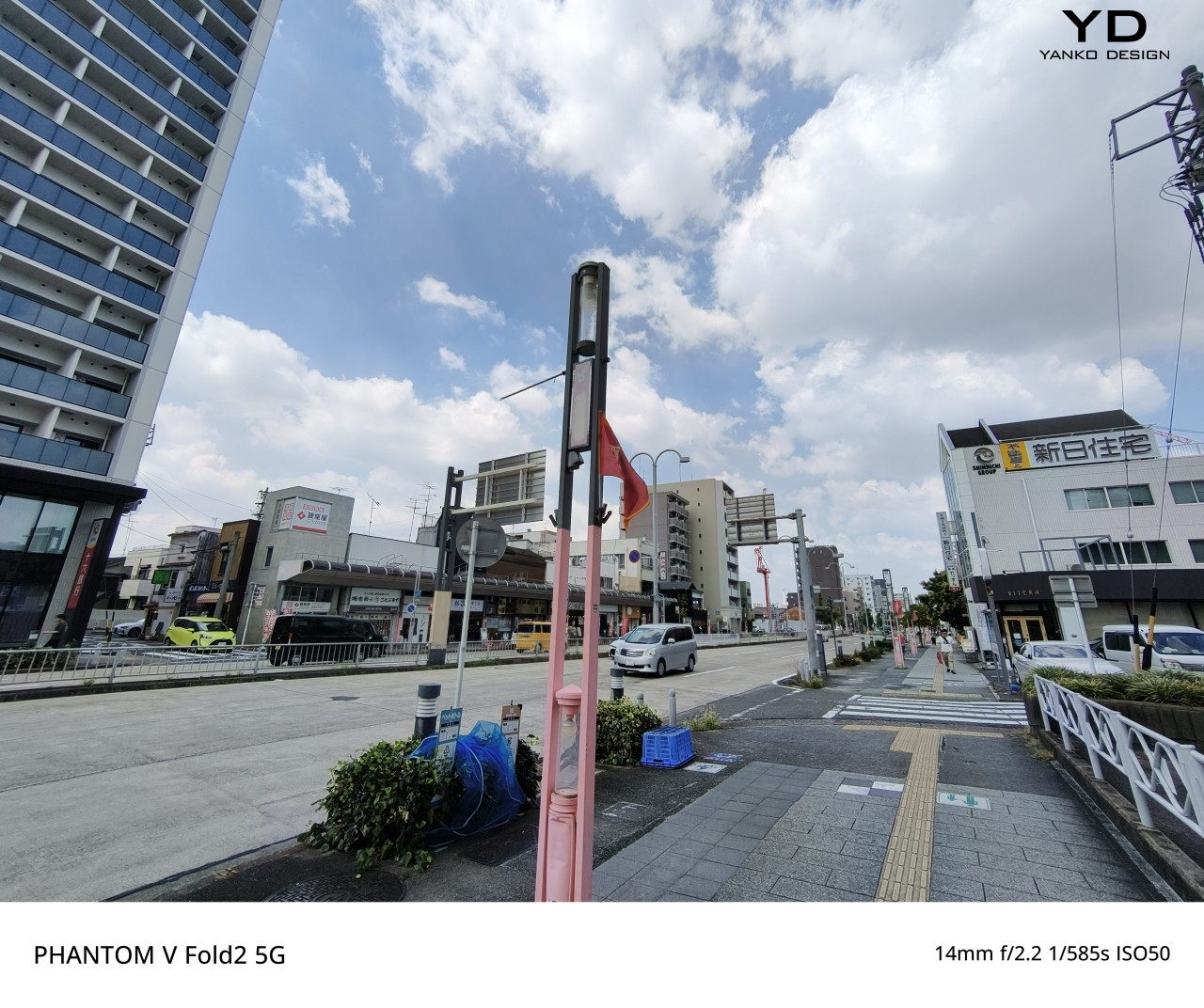
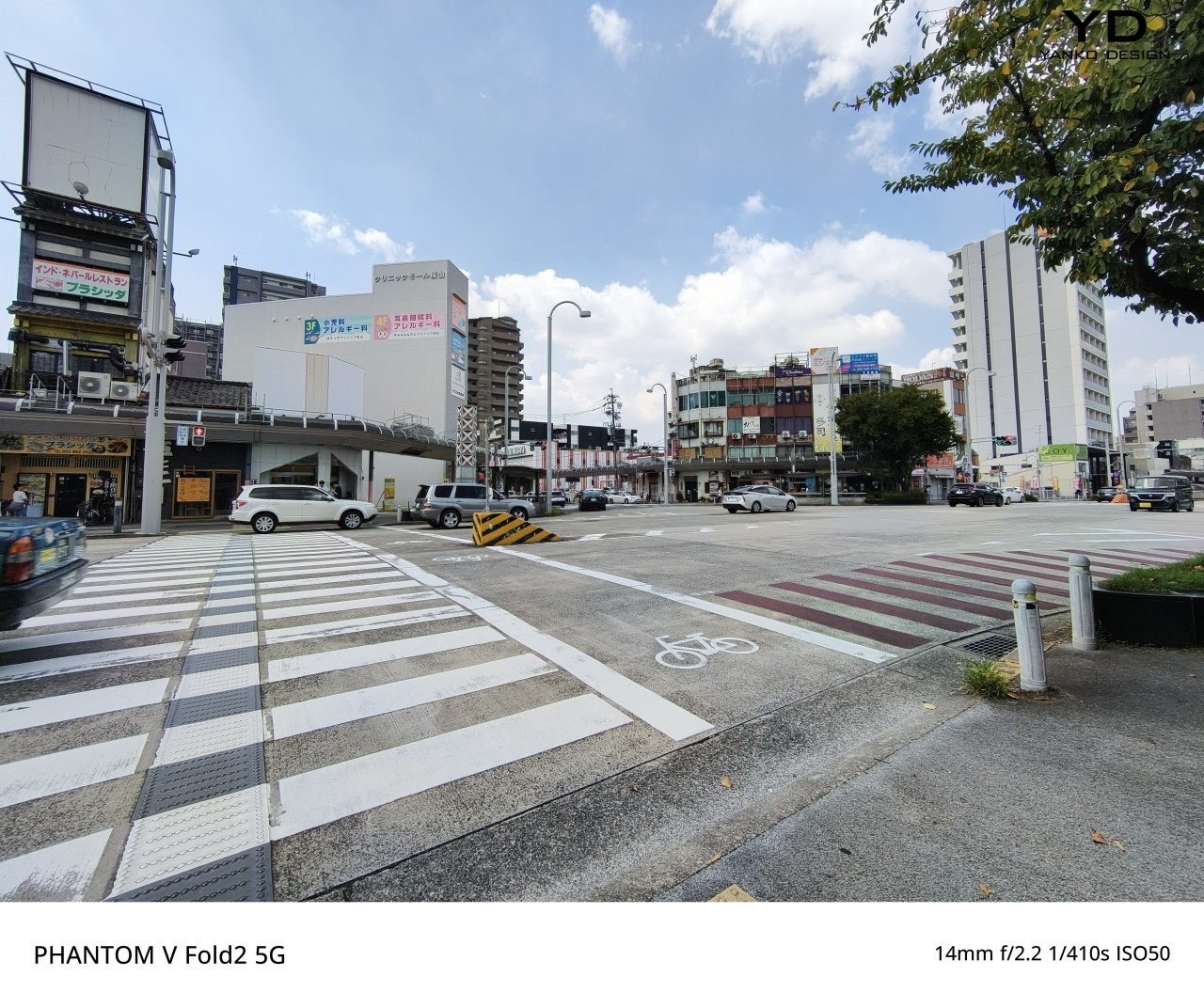
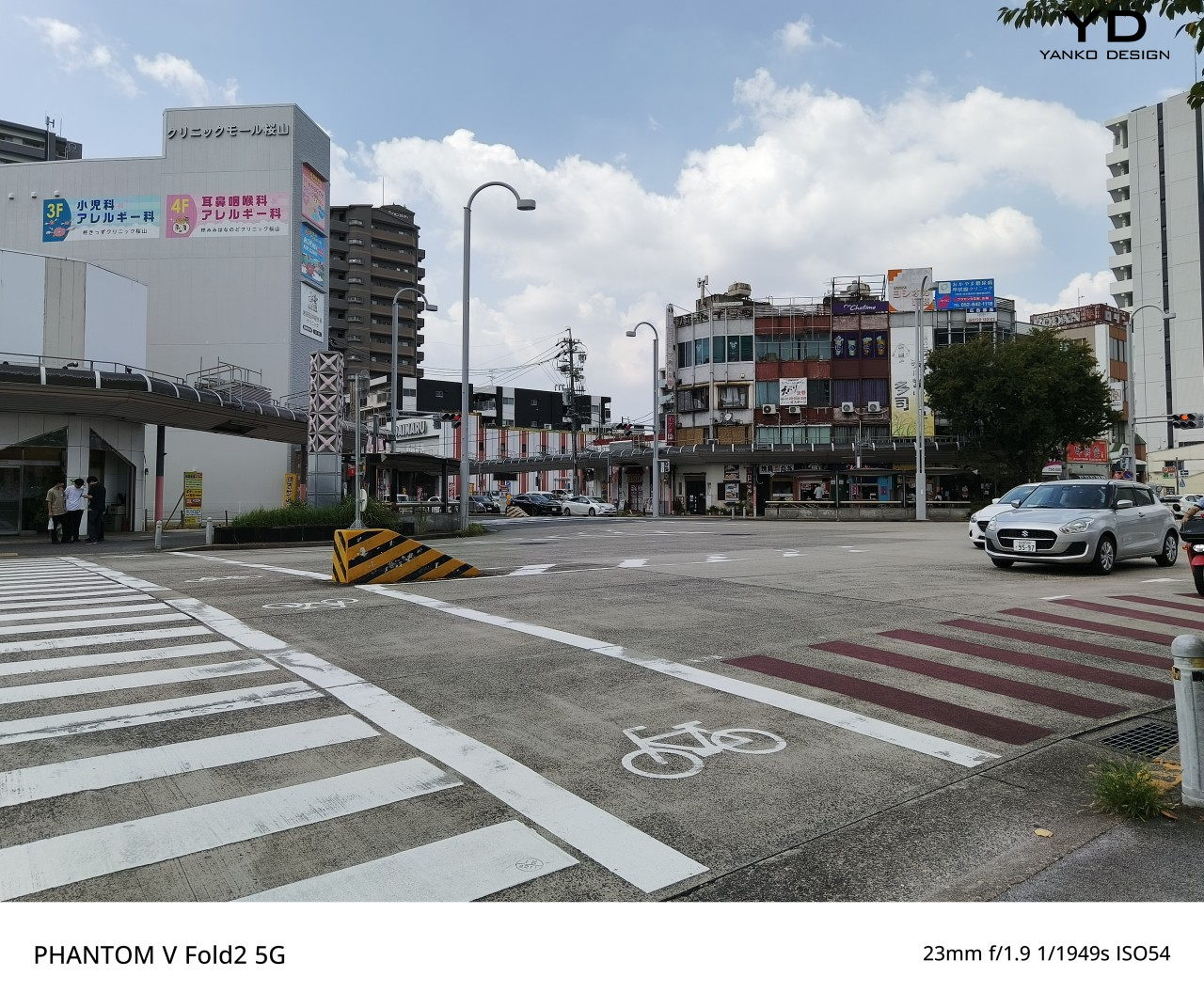
The ultra-wide 50MP lens is perfect for capturing expansive landscapes or large group shots. Despite the wide-angle view, images remain sharp and detailed across the frame, with minimal distortion. TECNO’s AI enhancements help maintain image quality, even when zooming in on wide-angle shots.
The Phantom V Fold2 5G’s dual front-facing 32MP cameras on both the outer and main screens offer the highest pixel count for a foldable device. These cameras are perfect for high-quality selfies, video calls, and vlogs. The camera system is bolstered by TECNO’s FreeCam system, which offers unique hands-free photography features. FreeCam Video, FreeCam Selfie, and FreeCam Long Exposure allow users to capture creative shots by simply unfolding the device and using voice or gesture commands.
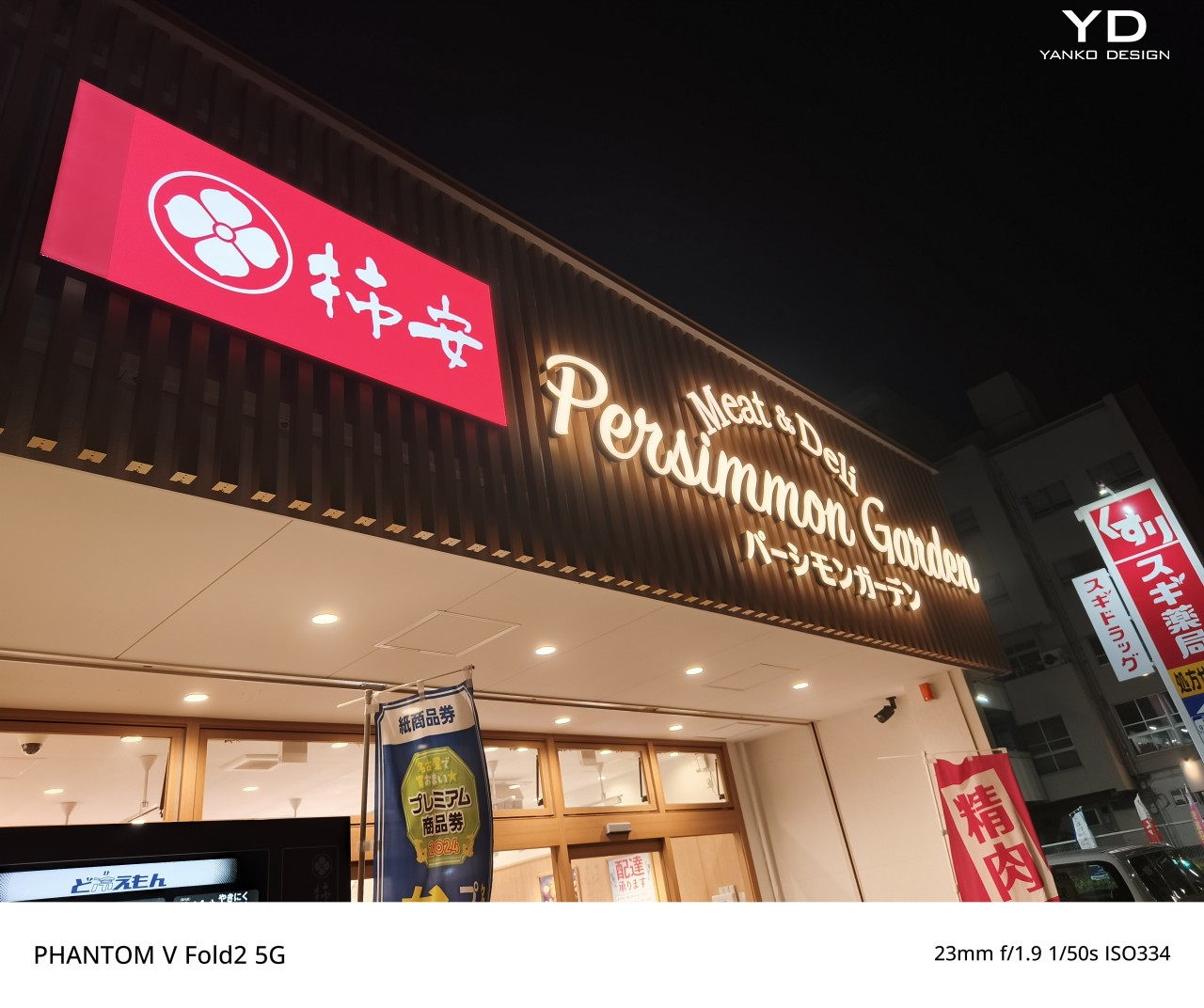
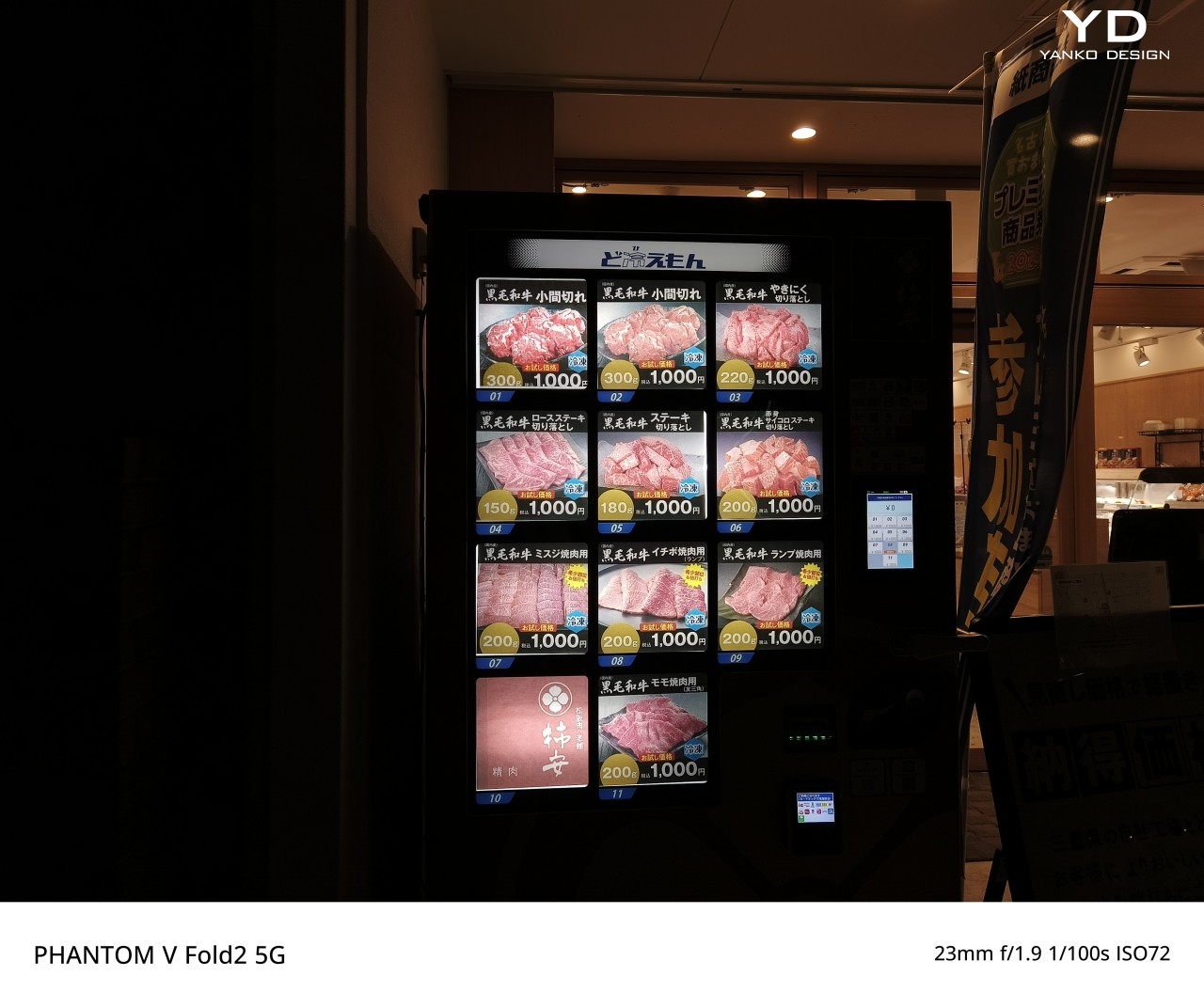
Overall, the Phantom V Fold2 5G’s camera performance is versatile and reliable. It’s capable of delivering stunning photos and videos in various conditions. Whether you’re a photography enthusiast or a casual user, the camera system offers everything you need to capture high-quality content.
Sustainability
TECNO has focused on sustainability with the Phantom V Fold2 5G, mainly through its partnership with Loewe. The back cover is crafted from marble-patterned fiberglass and pleated leather textures, combining premium aesthetics with eco-conscious design. This partnership underscores TECNO’s efforts to integrate sustainable materials without compromising the device’s luxury feel.
Additionally, TECNO’s Phantom V Fold2 5G packaging is made from recycled materials, reinforcing its commitment to reducing environmental impact across the product lifecycle.
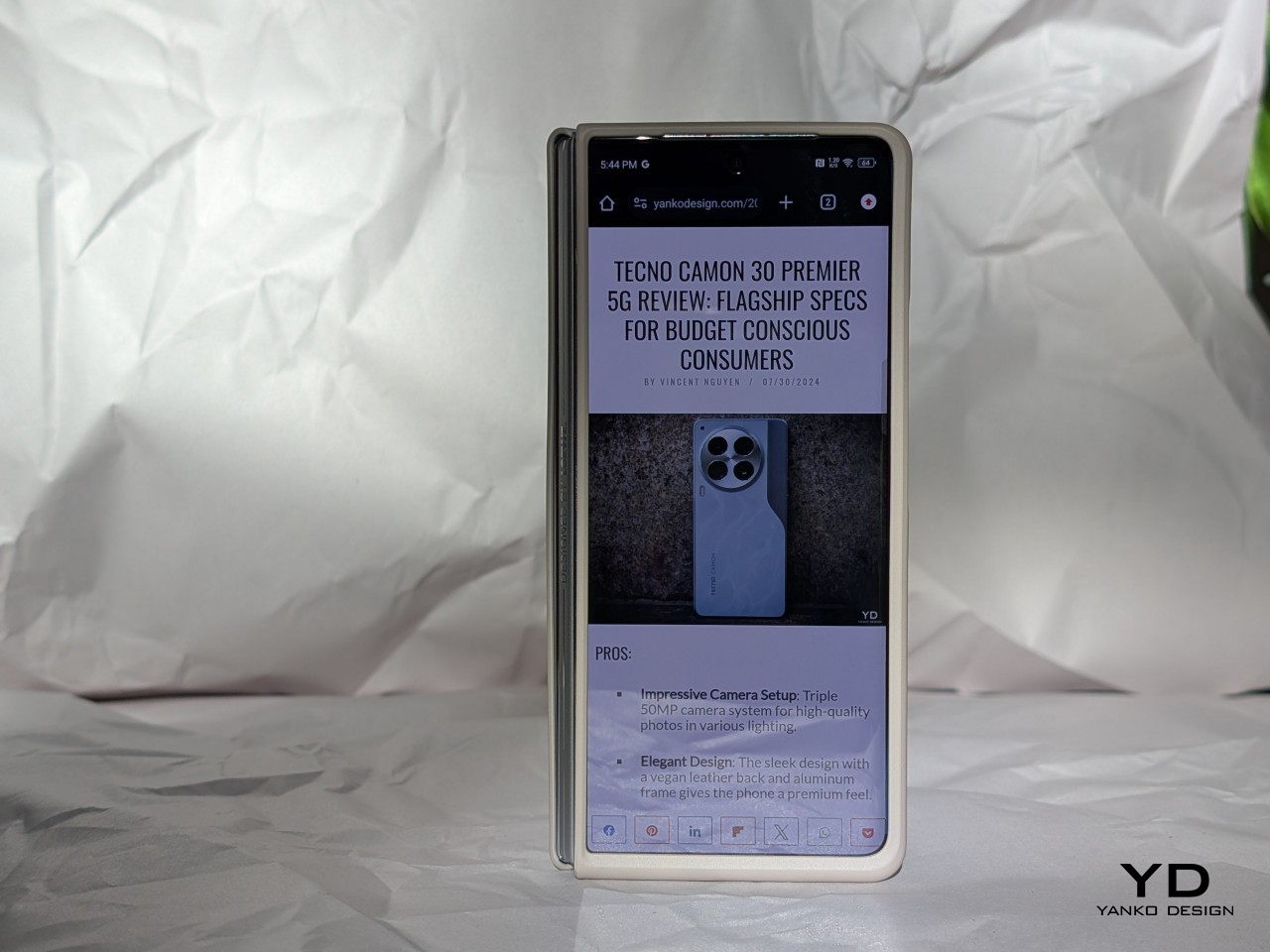
Value & Verdict
The Phantom V Fold2 5G offers an excellent balance of cutting-edge technology, premium design, and sustainability-focused innovation. TECNO’s powerful AI suite, combined with the device’s expansive foldable display and high-quality camera system, ensures that this smartphone caters to both business professionals and creative users alike. The device’s unique aesthetics—especially in the Loewe edition—make it a luxurious option, while its durable build and advanced hinge mechanism provide long-term reliability.
Priced competitively within the foldable market, the Phantom V Fold2 5G delivers substantial value for money. TECNO has managed to pack a host of premium features into a device that doesn’t compromise quality or performance. Whether you’re looking for a productivity powerhouse or a device for creative expression, the Phantom V Fold2 5G is a standout choice in the foldable market.
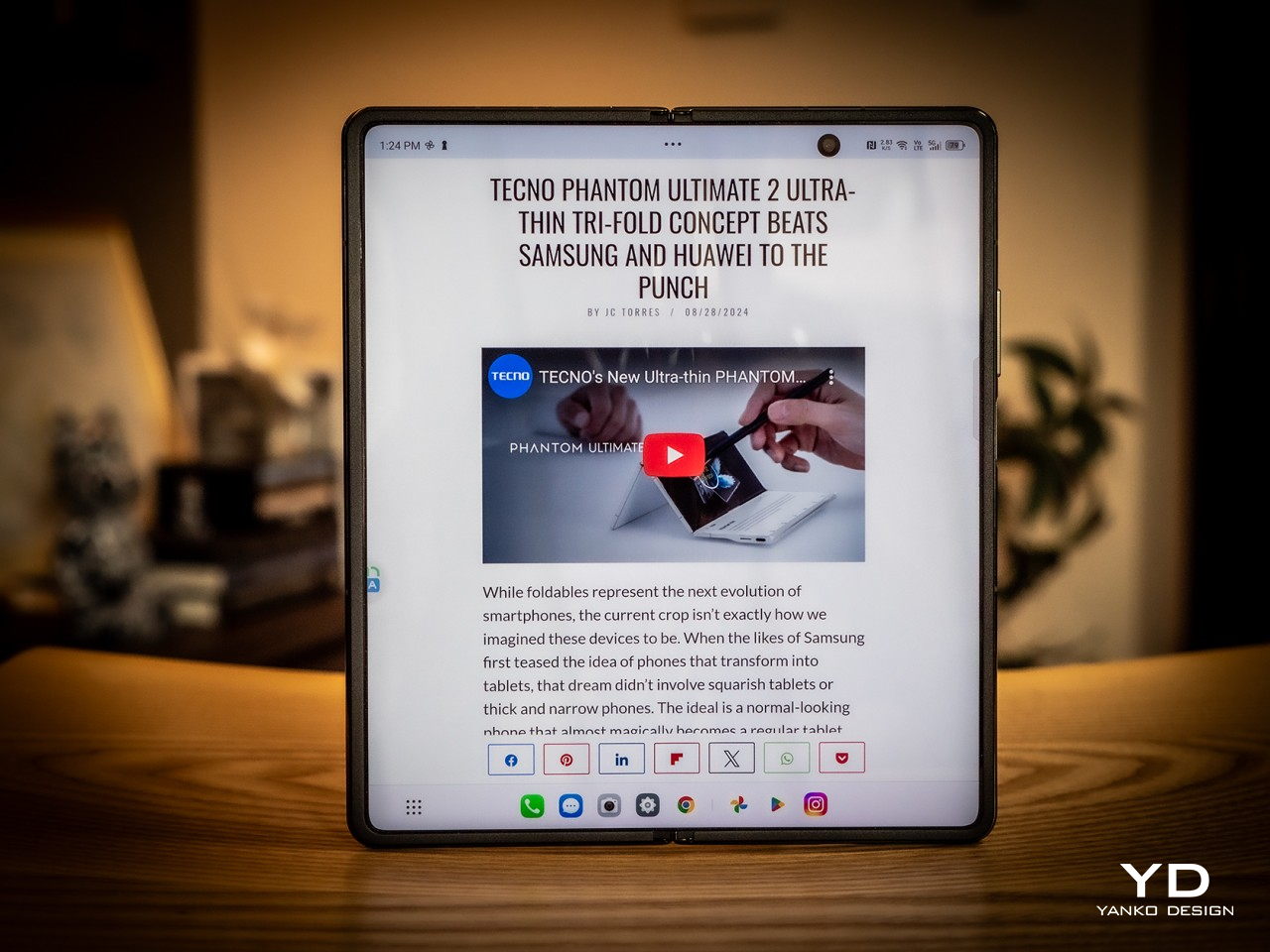
The post TECNO Phantom V Fold2 5G Review: Where Precision Meets Innovation in Foldable Design first appeared on Yanko Design.
